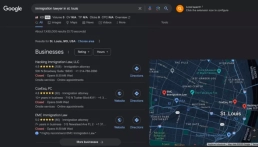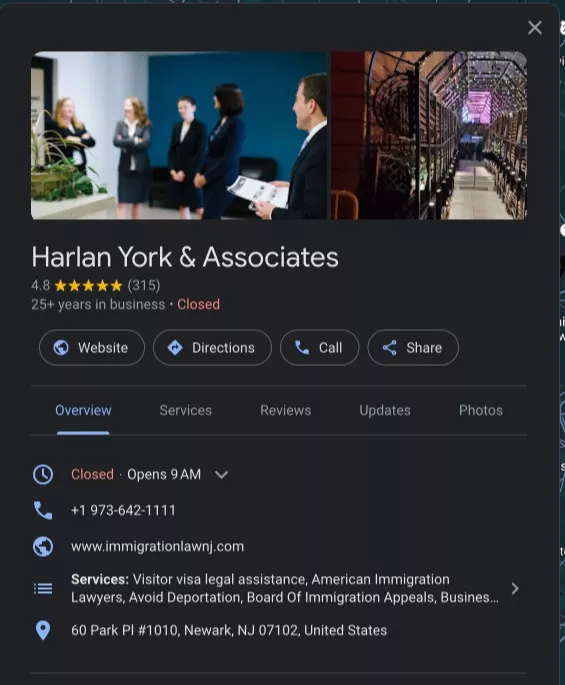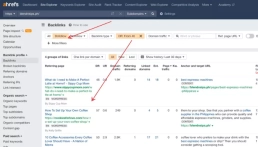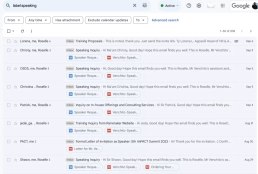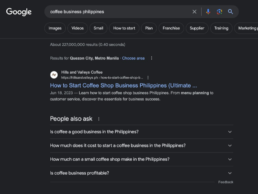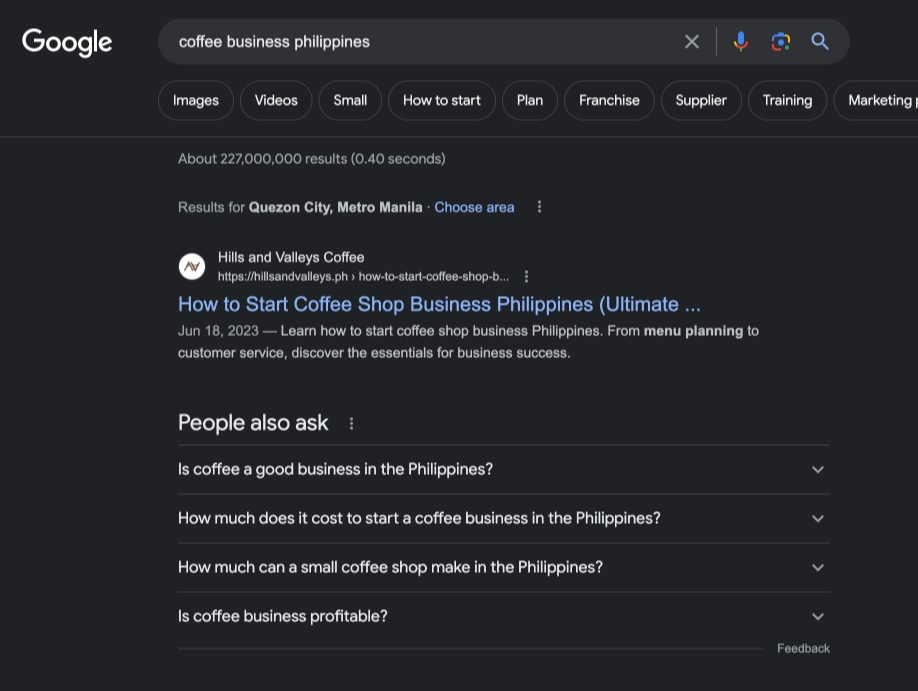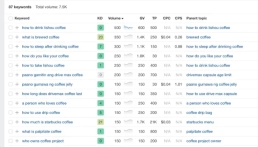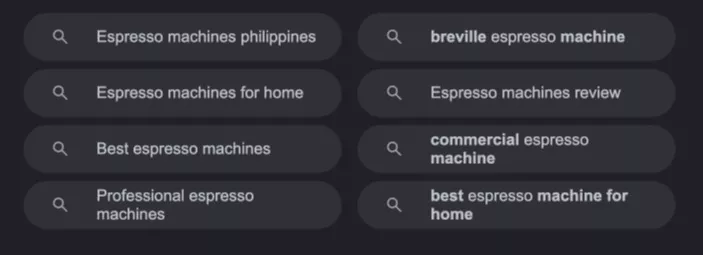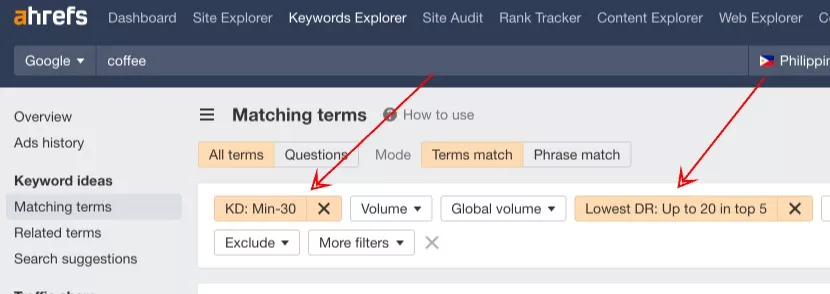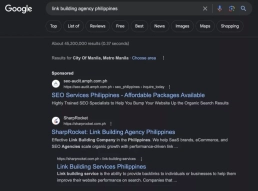SEO For Cybersecurity: Actionable Tips and Strategies
If you plan to rank your cybersecurity firm for your target commercial keywords, you'll have to compete with search giants like Cisco, Palo Alto Networks, and McAfee.
These big brands have dominated the search market for cybersecurity-related keywords. So, targeting head terms that receive thousands of searches may not be the best strategy, especially if you're new to SEO.
That's not to say you can't outhustle the big guys, but you should create and execute a solid SEO campaign to climb Google's search results for topics where you'll have an advantage and can make a wider content gap or link profile gaps.
What is Cybersecurity SEO?
Cybersecurity SEO is the process of optimizing a cybersecurity website and its commercial pages to get visibility on search engines while balancing technical accuracy, compliance, and brand authority with its blog content to attract more top-of-the-funnel content suited for audiences like Chief Information Security Officers (CISOs), IT Directors and Managers, Risk Management Officers, and Compliance Officers.
SEO Strategies For Cybersecurity Websites
Let's walk through how you can execute this. It's really not different from a typical SEO campaign. Most fundamentals will help, but cybersecurity needs nuance or a new flavor.
Implement Technical SEO
In our experience, cybersecurity websites typically have the following technical SEO issues to monitor and fix regularly:
Overly Strict Security Measures Blocking Crawlers
The most secured websites must come from cybersecurity. After all, it's what they're good at providing for their clients.
However, we've found interestingly that overly strict security measures, with a lack of understanding of SEO, can prevent them from having their web pages crawled and indexed by Google.
Firewalls, bot protection, and DDoS mitigation tools (e.g., Cloudflare) may accidentally block search engine crawlers from crawling the website, especially if misconfigured, preventing the indexing of important webpages.
The best course of action would be these three:
- Whitelist Googlebot, Bingbot, and other legitimate crawlers in firewall and security settings.
- Ensure the robots.txt file does not unintentionally block important pages (e.g. Disallow: /blog/)
- Use server logs to identify if security tools are mistakenly blocking search engines.
Excessive JavaScript Use in Security Features
Some cybersecurity websites rely heavily on JavaScript-based authentication and encryption, which makes critical content unreadable to search engines. CAPTCHA and login-based access to key resources can also limit indexation.
Many cybersecurity websites use excessive security scripts, tracking codes, and redundant plugins, leading to bloated code that slows down page load times.
Essential actions to take:
- Use server-side rendering (SSR) or dynamic rendering to ensure JavaScript content is indexable.
- Implement progressive enhancement so critical content loads first without JavaScript dependencies.
- Test pages using Google's Mobile-Friendly and Rich Results Test to ensure visibility.
- Reduce reliance on CAPTCHA for SEO-relevant pages and provide bot-friendly alternatives.
Frequent 403 and 404 Errors Due to Content Restrictions
Strict access control measures can result in 403 (forbidden) errors, affecting crawlability. You would also notice broken links and 404 errors from expired threat intelligence reports or removed security advisories.
Depending on why the URL is giving off the 404 status, 404s can be corrected by bringing back the live web page via redirection or by doing nothing with 404 status.
Poor URL Structure Due to Compliance Needs
Many cybersecurity firms rely on dynamic URLs with query parameters as they require most of their website initiatives to adhere to compliance, security protocols, or content access restrictions. This results in URLs like:
example.com/service?id=1234®ion=us&compliance=iso27001example.com/article.php?post=5678&category=cybersecurity
These poorly optimized structures can cause indexation issues, duplicate content, and difficulty tracking in the analytics tools.
You might also find obfuscated URLs for security reasons, which make them less user-friendly and harder for search engines to understand.
Certain pages behind login restrictions or access control mechanisms (e.g., requiring authentication to view security reports) might not be indexed.
What to do with these? Here's your quick how-tos:
- Use SEO-friendly, static URLs instead of dynamically generated ones (e.g., /cybersecurity-services/ instead of /service?id=1234). If you discover appropriate keywords to target, optimize the URL structure with the target keyword—it's one of the first things search engines look at when trying to rank a relevant webpage.
- Keep URLs descriptive and short, avoiding unnecessary query parameters.
- Implement canonical tags to prevent duplicate content issues from compliance-based variations.
- Regularly audit URLs and use 301 redirects for outdated or non-compliant structures.
Schema Markup
Cybersecurity firms often overlook structured data markup, which is one of the intermediate SEO techniques that search engines use to recognize a firm's credibility and expertise.
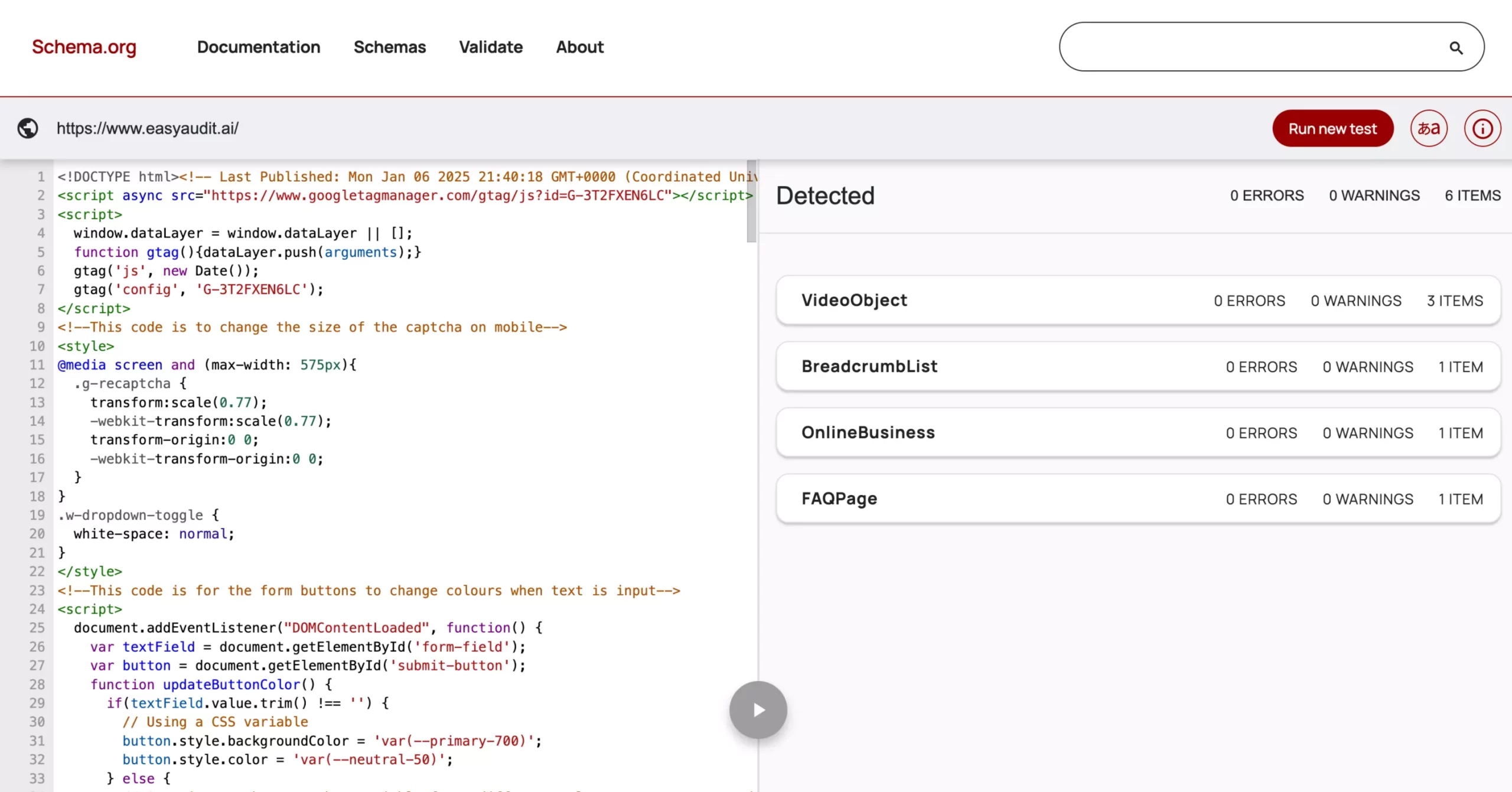
Here are a couple of resources to help you with implementing schema markup in your cybersecurity website:
Map Content to Buyers’ Journey of Your ICPs
Learning how to map out a content marketing plan to target your individual ideal customer profiles can help you craft content assets that are specific to your target audience's needs, pain points, and how-to desires.
This is apparent for cybersecurity buyers with different technical expertise, priorities, and purchasing behaviors.
For instance, there are distinct concerns between a CISO at a multinational corporation and an IT Manager at a mid-sized company. The former is a high-decision maker who based his action plans on how particular cybersecurity measures can help the company's business objectives, while the IT managers' major concern is looking for an ideal cybersecurity solution to be presented to their upper management in their organization.
Most cybersecurity firms don't have clear ICP, as most doing the in-house SEO work aren't adept at fundamental marketing principles, leading to many misaligned content assets they produce on their websites—either too technical for decision-makers or too simplified for hardcore IT professionals.
The best way to make sure your content hits home to your potential buyers is by segmenting content based on how it speaks to:
Define ICP and understand their top priorities, pain points, and what cybersecurity is for them. Here's what it looks like:
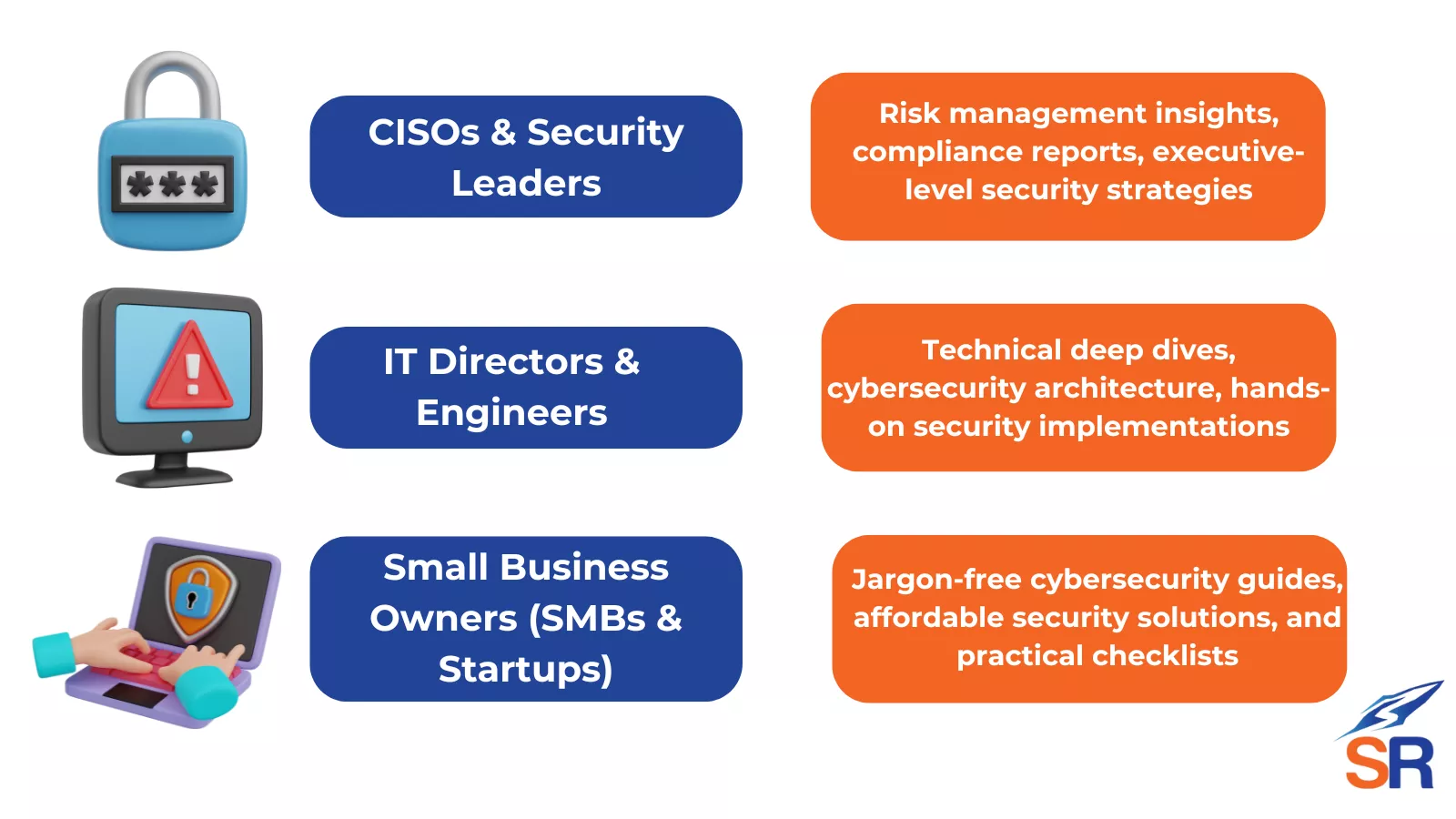 CISOs & Security Leaders → Risk management insights, compliance reports, executive-level security strategies
CISOs & Security Leaders → Risk management insights, compliance reports, executive-level security strategies
These high-level decision-makers need strategic content that helps them assess risks, align security with business goals, and ensure regulatory compliance. The key factors are business numbers and social proof.
Show your cybersecurity solution can help them achieve growth in their business numbers based on specific metrics related to their performance.
Example: "How Zero-Trust Security Reduces Enterprise Risk" (high-level strategy guide).
IT Directors & Engineers → Technical deep dives, cybersecurity architecture, hands-on security implementations
If you're targeting mid-level management people, create in-depth, technical content that explains security frameworks, configurations, and implementation details. Talk about long-form actionable guides addressing daily challenges, from minor issues they couldn't solve to higher strategy work they must present to their superiors.
Example: "Configuring Firewalls for Ransomware Prevention" (detailed technical guide).
Small Business Owners (SMBs & Startups) → Jargon-free cybersecurity guides, affordable security solutions, and practical checklists
You don't need to publish overly technical guides here. It is best to ideate and create simple, actionable content that helps them understand security essentials without technical complexity.
Small business owners care more about how it helps them achieve their business goals (profit, growth, operations, delivery, etc.). Think of the many functions of a business owner where your cybersecurity solution can best fit.
Example: "Cybersecurity Basics for Small Businesses: 5 Ways to Secure Your Data" (step-by-step guide).
Related Resource: 21 Content Marketing Tips for 2025
Create Dedicated Landing Pages to Target Individual Keywords (1:1 Approach)
The most common mistake in basic SEO, and often a challenge for my SEO work for cybersecurity websites, is not targeting individual keywords for their landing pages.
In order to rank for your target keywords, your domain must have a dedicated webpage that talks directly about the keyword. The absence of it makes SEOs wonder why their cybersecurity websites don't even appear on pages 2 to 4, let alone on page 1 of Google's SERPs.
To maximize your SEO efforts, you can tap into topic clustering (others call it a topical map strategy).
Build Parent Pages + Topic Clusters for Better Structure & SEO
Instead of standalone pages, create a hierarchical structure (parent + child pages) for cybersecurity services that signal to Google what your website is about, specific to the commercial keywords you're vying for.
Doing so helps your search engines crawl your web pages better, improving crawl efficiency. It also helps your users navigate your website seamlessly, as they can see exactly which pages they should visit based on a logical site architecture and smart internal linking system.
Here's what the topic clustering strategy looks like for cybersecurity firms:
Parent Page: /services/cybersecurity-solutions/ (Broad Overview)
- H1: "Comprehensive Cybersecurity Solutions for Businesses"
- Provides a general overview of all services offered.
- Includes internal links to more specific service pages.
Child Pages (Topic Clusters for Each Service):
/services/cloud-security-enterprise/→ Cloud Security
Covers AWS, Azure, Google Cloud security, and compliance./services/penetration-testing/→ Penetration Testing
Explains external/internal pen testing, vulnerability assessments./services/managed-firewall-smbs/→ Managed Firewall Services
Details SMB network security, firewall monitoring, and maintenance./services/incident-response/→ Incident Response
Covers breach recovery, forensics, and cyberattack mitigation./services/ransomware-protection/→ Ransomware Protection
Focuses on threat detection, encryption, and endpoint security.
Customize head term targeting, service pages, and their target keywords based on your firm's service offerings.
The above strategy is worthwhile and should be helpful enough to give you a headstart.
Industry-Specific Cybersecurity Service Pages for Better Targeting
If there's an advanced-level SEO strategy that could be implemented well for cybersecurity firms, it is the ability to publish industry-specific cybersecurity service pages to cast a wide net in brand reach and capture more organic traffic from potential buyers in different markets.
The best thing about cybersecurity SEO campaigns is their wide variety of potential customers or clients, as compliance requirements, security risks, and all its related solutions are applicable in many companies. That itself is a good opportunity to leverage targeting a variety of industries.
Examples of Industry-Specific Cybersecurity Pages:
- "Cybersecurity for Healthcare: HIPAA Compliance & Data Protection" →
/industries/healthcare-cybersecurity/ - "Cybersecurity for Financial Services: Preventing Bank Data Breaches" →
/industries/financial-services-cybersecurity/ - "Cybersecurity Solutions for E-Commerce: Payment Security & Fraud Prevention" →
/industries/ecommerce-cybersecurity/ - "Cybersecurity for SaaS: Secure DevOps & Data Encryption" →
/industries/saas-cybersecurity/
My best recommendation is to craft content for each landing page that is tailored to the pain points, solutions, and messaging of each industry.
One of the most common mistakes, when they use this strategy, is simply rewriting one industry page, creating almost similar (nearing duplicate content) that's often hurting their website rankings instead of helping it.
Hire copywriters and content specialists to work on these different industry pages and optimize them for the industry keyword—at best, if you do it comprehensively (long-form, more information, in-depth). You don't have any reason not to rank for your target keywords.
EEAT Is No Longer a Nice-To-Have — It's a Must
Google favors brands in many cyber-security keywords (like in any other industry), where demonstrating E-E-A-T (Experience, Expertise, Authoritativeness, and Trustworthiness) is no longer just a part of your SEO checklist but a necessary SEO initiative.
Here are a couple of actions to ensure you display these brand factors on your website.
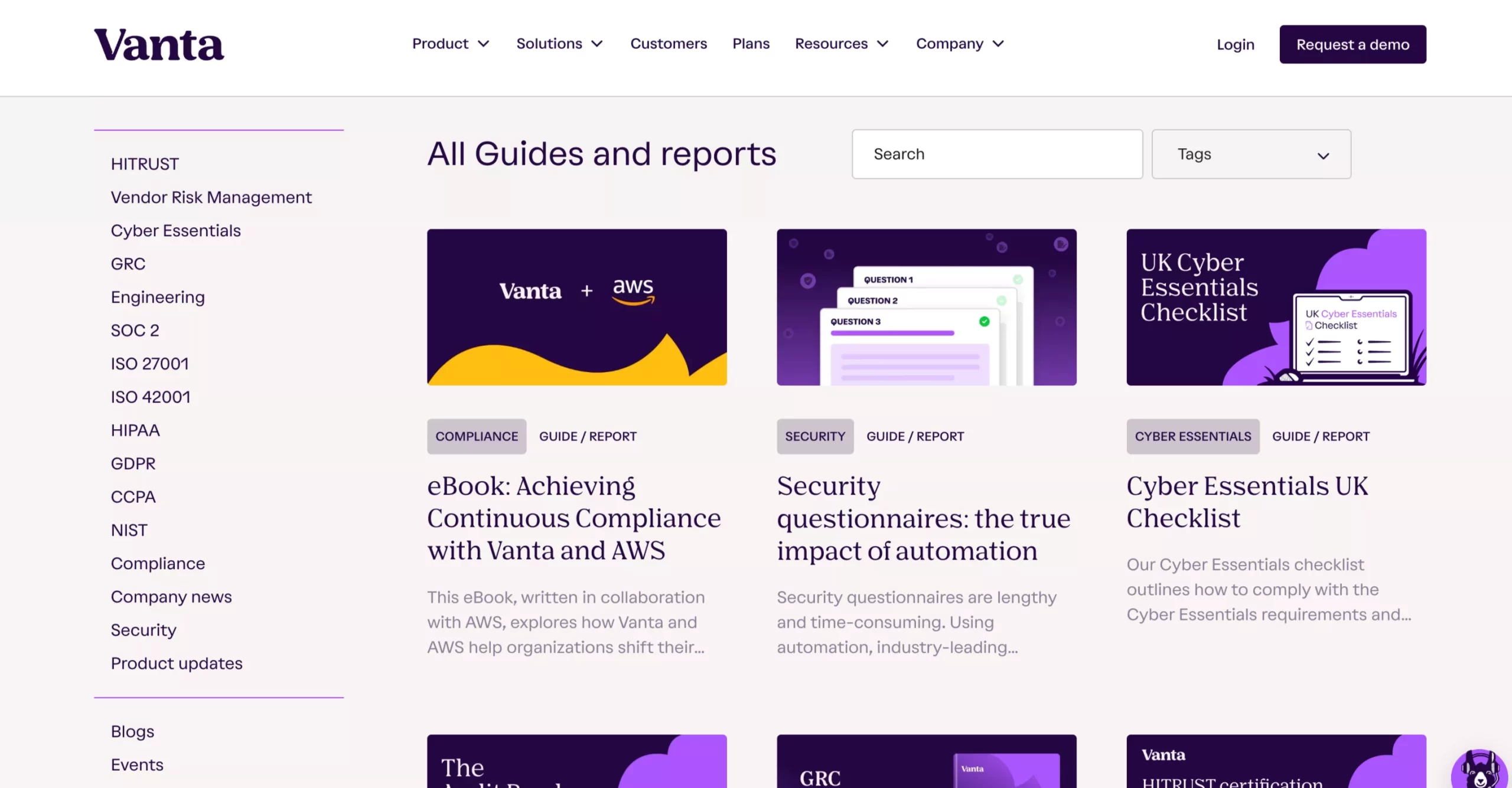
Publish thought-leadership content assets
As mentioned earlier, you're dealing with highly educated readers in the cybersecurity space. Authors who display a level of experience are essential to ensuring the caliber of content displayed on webpages.
Release threat intelligence reports, security trends, breach analysis, and share data-driven insights about emerging cybersecurity threats. When writing content, include entities— cite government, security organs, and research institutions (e.g., NIST, CISA, MITRE ATT&CK).
Create author bio pages for each of your organization's in-house experts (e.g., CISSP, CEH, CISM holders). Include educational background, professional achievements, affiliations, and organization each expert has been part of or affiliated with.
By demonstrating enough credibility of their individual expertise, they send rich signals to Google that your website is topical and relevant to a given subject discourse.
Include First-Hand Insights in Blog Content
This won't be a difficult task for your content team, as most can interview in-house leaders in your organization. They can share lessons, actionable insights, and industry trends that they observe or have credible opinions about—all displaying author expertise for your website.
Display Trust Badges
Trust badges are a small overlooked trust factor, which cybersecurity firms can take advantage of in sending more trust signals to search engines and users.
SEO teams can display ISO 27001, SOC 2, GDPR, and NIST compliance - and other related trust budgets on their websites’ landing pages.
Strengthen Authority with High-Quality Backlinks
The best thing is that once you have covered the basics of SEO, if done right, you'll get significant rankings for your webpages. But if you want to aim for three positions on Google's SERPs, it's inevitable that you will build high-quality backlinks.
However, beware of the many link vendors and "middle-man" link builders who only get backlinks from lower-traffic multi-category websites. While it's easy to pay them peanuts, you're likely to end up with your website penalized or unable to rank on the first page of SERPs as they don't contribute any link equity to your website.
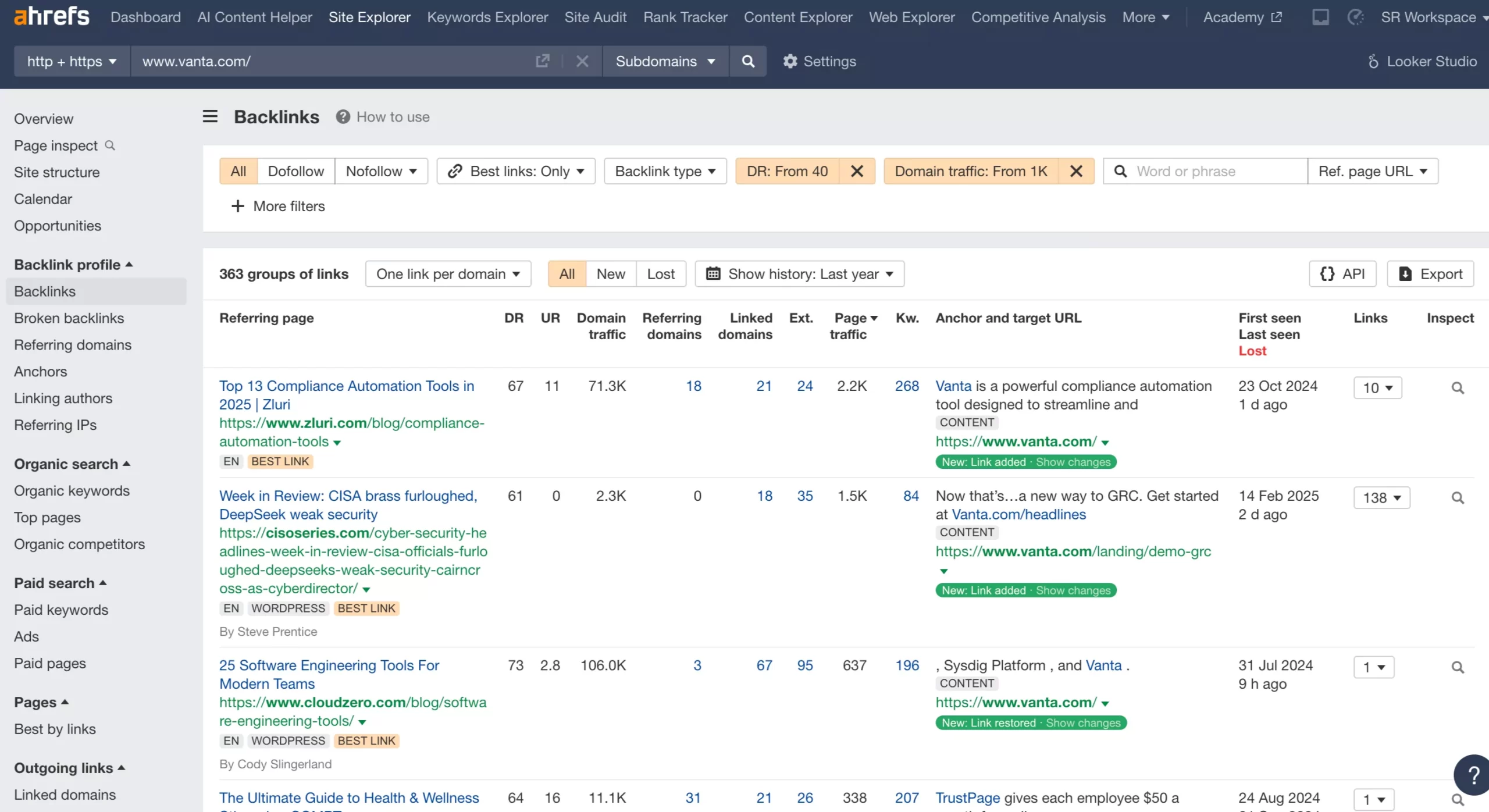
If you're just getting started in link building, it's not that easy to get featured in cybersecurity news sites like Dark Reading ThreatPost and KrebsOnSecurity or even tech-focused sites (e.g., TechCrunch, Wired, or SC Media).
The best way is to launch a digital PR campaign where it helps build thought leadership of your brand through expert commentaries, data-driven campaigns, and reactive PR, while getting high-quality editorial links to your cybersecurity website.
Here are a couple of guides we've written to help you launch your link building campaigns:
SharpRocket—Agency of Choice For Cybersecurity Firms
Whether you want to execute full-scale SEO campaigns or ramp up your landing pages with high-quality backlinks, we cover everything you need to increase your organic traffic. Book a call with us today, and we'll create a cybersecurity SEO roadmap for you.
How to Get High Authority Backlinks in 2025
Google obviously favors brands in search results. Given that consumers trust them more often than not, it is undeniable that you rank highly better by building your site’s authority.
Authority building requires creating highly credible content and having other credible entities attest to you (links).
In this guide, I’ll show you how to get authority backlinks to enhance your site’s authority, influence rankings, and climb your brand’s spot on Google’s SERPs.
1. APPEAL TO CONTENT CREATORS WITH INFORMATION GAIN
The best way to scale the passive acquisition of authority links is by publishing linkable assets that niche publications editors and content creators would notice.
It is not the same as having the “write your content and links will come” mentality. But in creating highly credible content, that gives no reason for other creators not to link to you.
Certain elements make content appealing to other niche authority publishers.
INFORMATION GAIN
“Information gain scores state how much more information one source may bring to a person who has seen other sources on the same topic.” - Bill Slawski.
HOW DO YOU ACCUMULATE INFORMATION GAIN SCORE?
Become linkable by publishing unique (and better) content assets they won’t find elsewhere. Think of ways you can differentiate what you post from others.
TARGET OTHER LEVEL/S OF AUDIENCE THAT PUBLISHERS DON’T USUALLY APPEAL TO.
If most thought leaders focus on the basics, try to cover a more intermediate and advanced level of content.
In this SEO blog, we cover many of the intermediate and advanced-level strategies in link acquisition, given that we are targeting more in-house SEOs and agency owners who have been building backlinks for a long time and want something new.
Even if we cover the essential guides like anchor text optimization, top link building strategies, and link diversity, we add as many actionable tips to put principles into practice as possible.
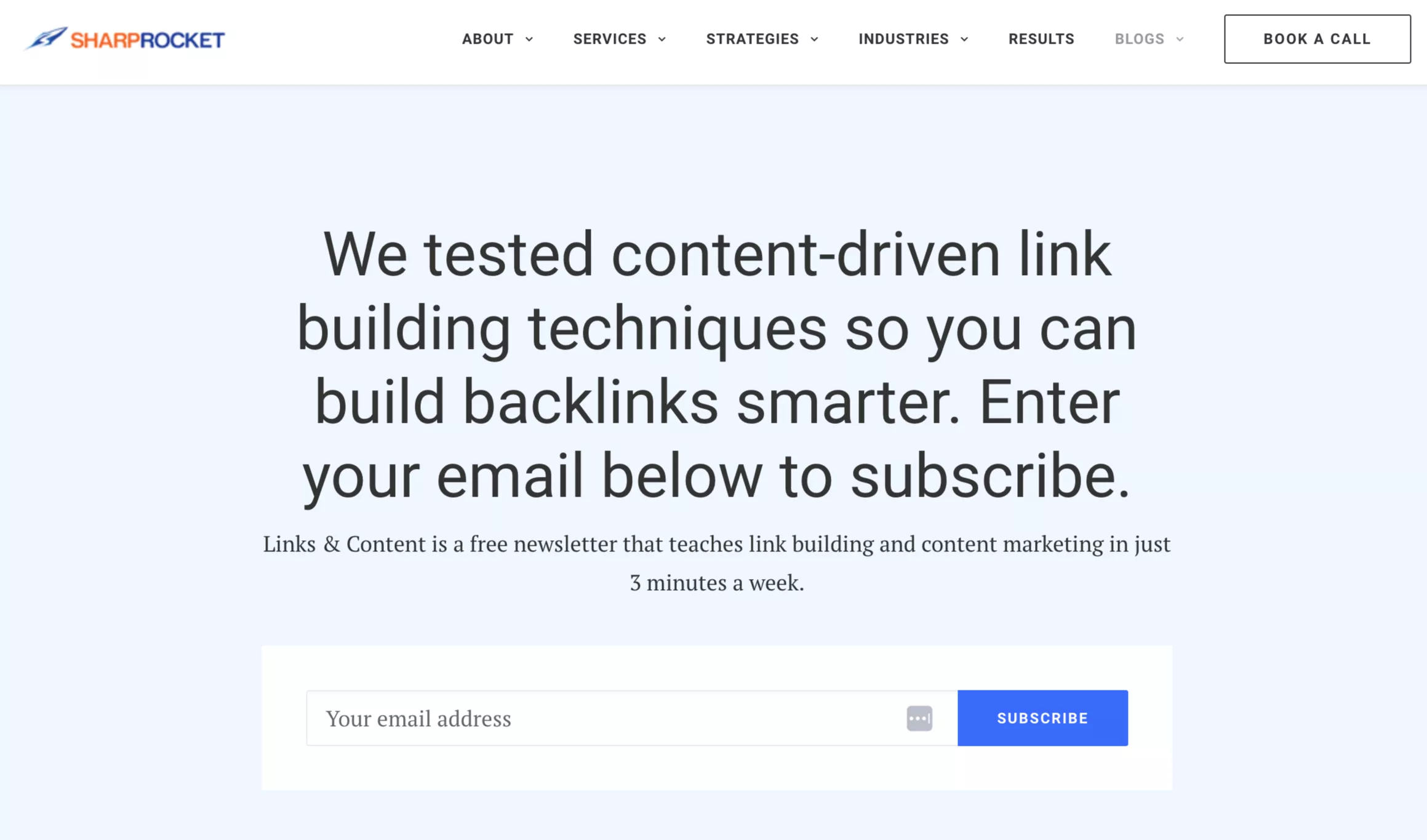
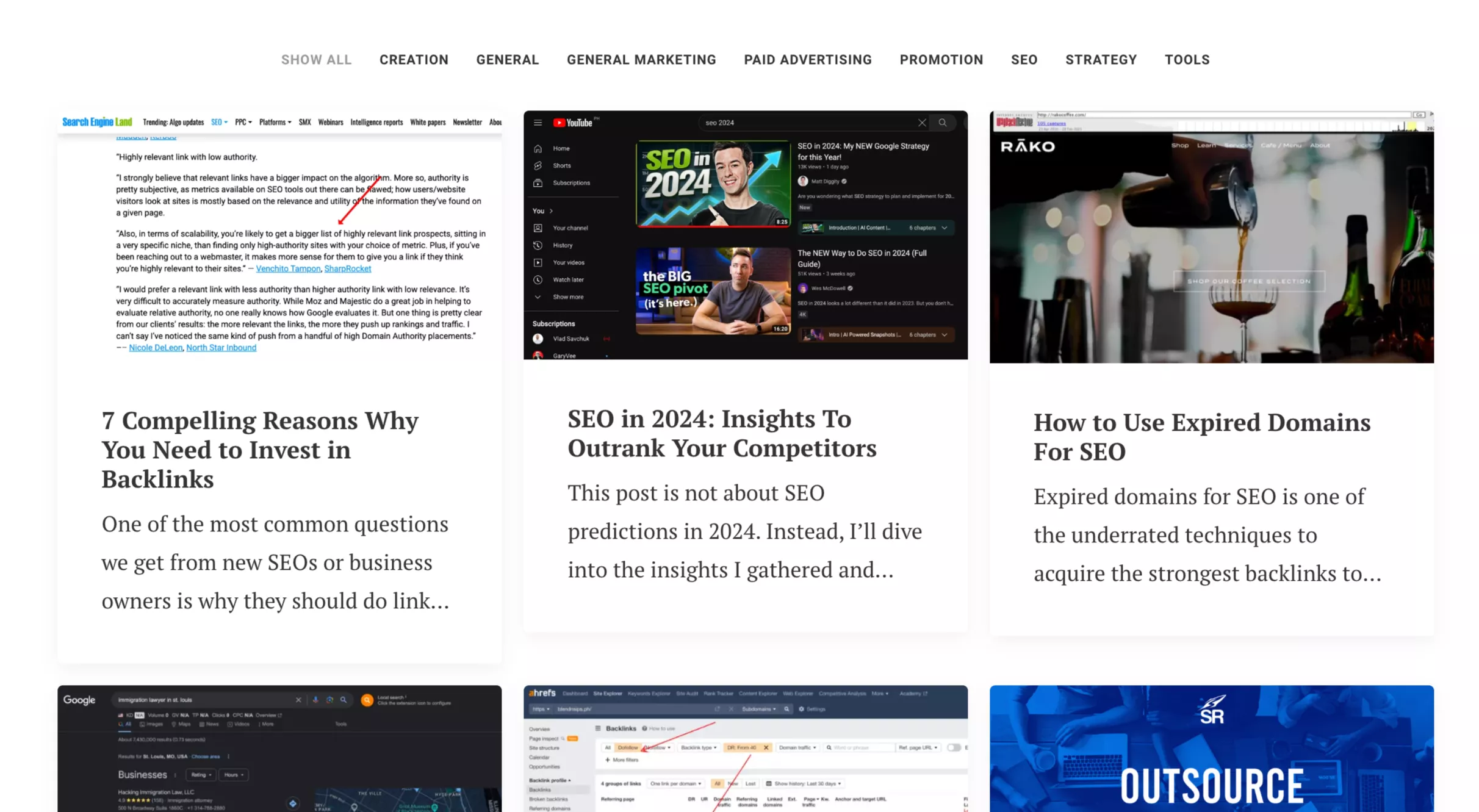
It is also much easier to rank for keywords by tackling more difficult ideas; other industry publishers don’t have much in-depth expertise and experience.
PROVIDE FRESH PERSPECTIVES TO SATURATED TOPICS.
The challenging part for starting publishers is publishing content for topics with hundreds of pieces of content trying to compete for the same keywords.
Pursuing mid to highly competitive keywords is still viable, given their high search volume, but adding new perspectives/angles sets your content apart from other competing pages.
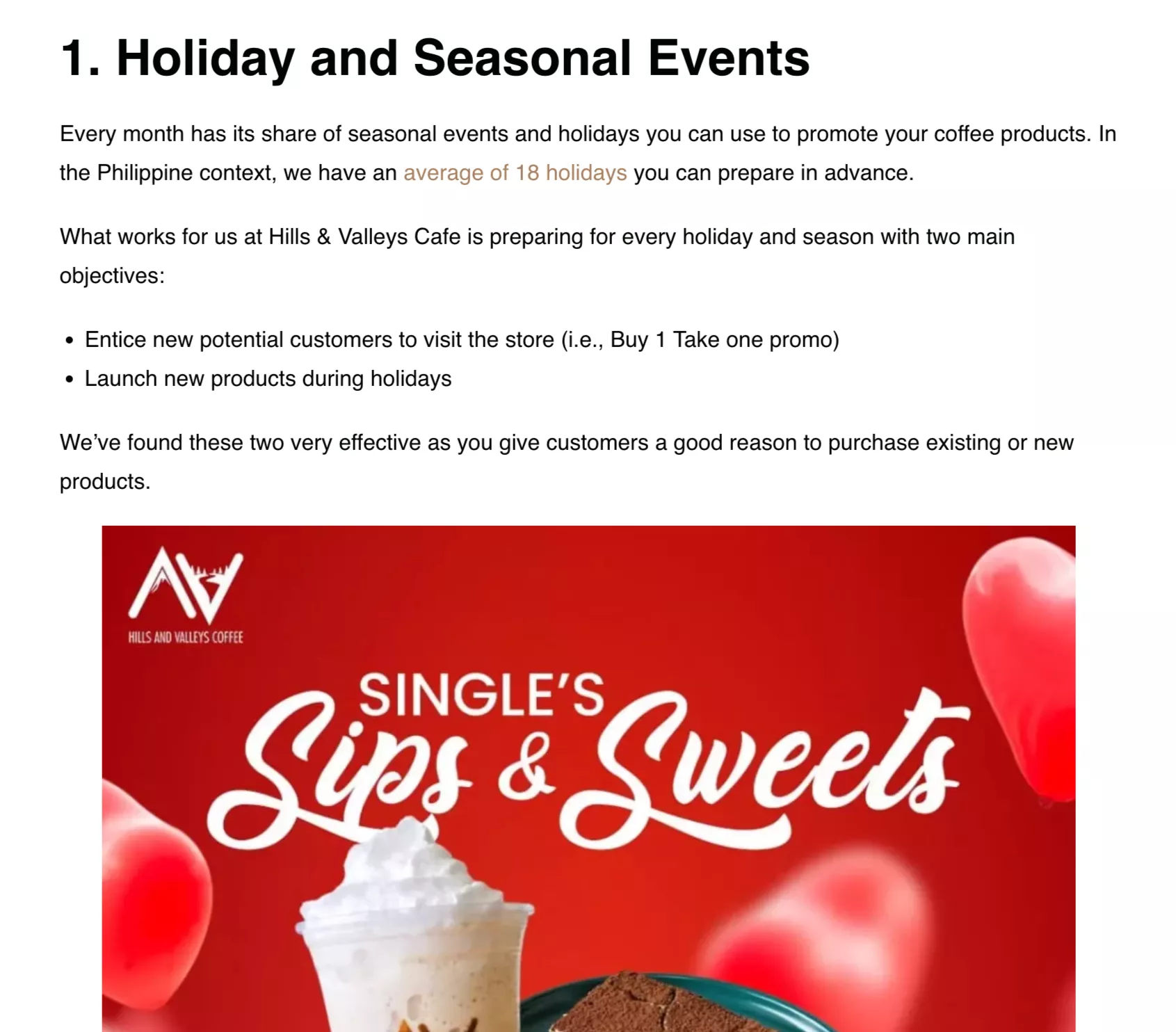
It also captures other content creators to distribute it across their social networks, which amplifies the natural link acquisition of your content assets.
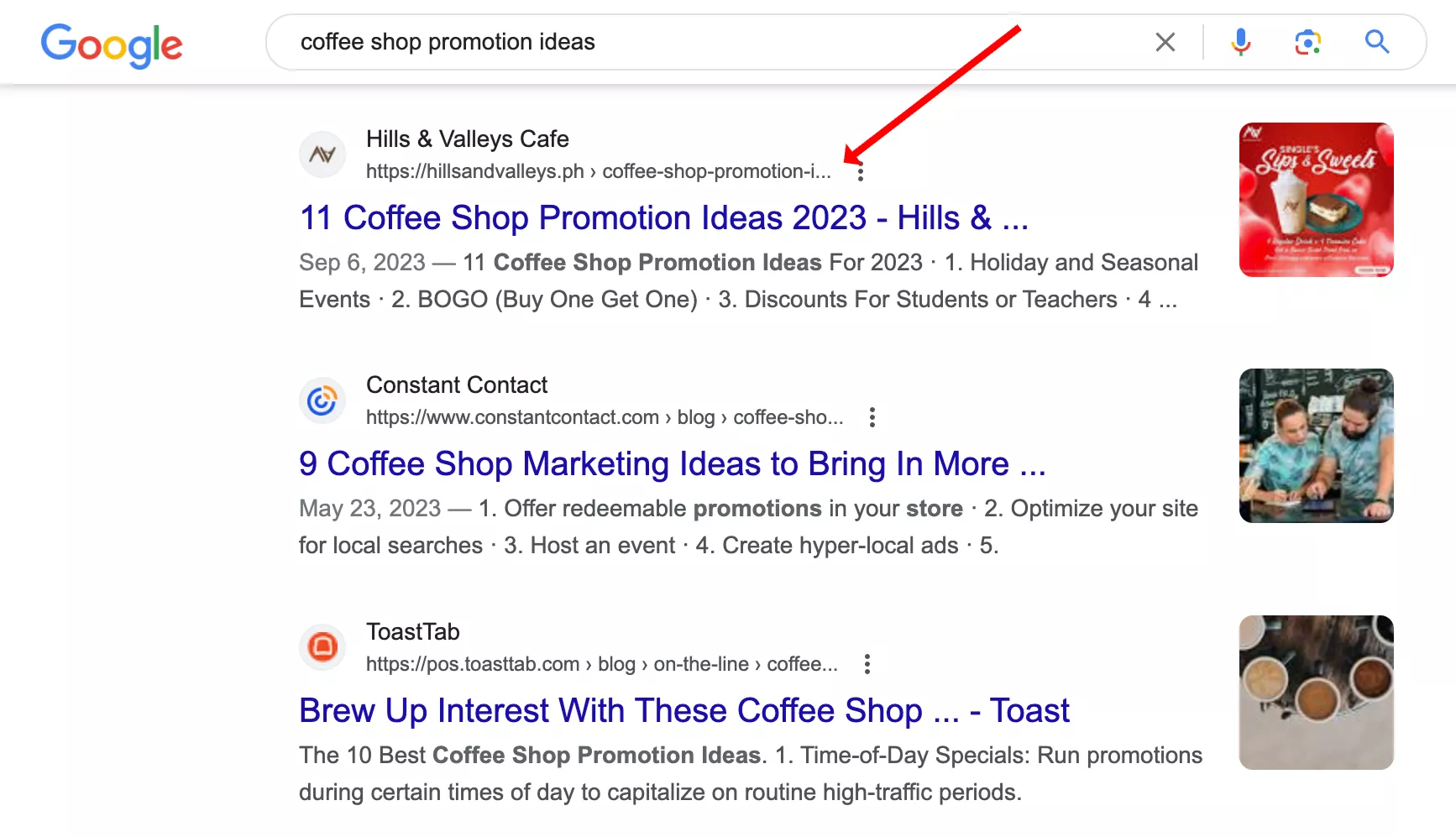
START WITH BETTER INTROS THAT RESONATE WITH YOUR AUDIENCE WELL.
For example, I’ve started this guide by emphasizing that Google favors brands and the importance and value of “authority building”.
It instantly differentiates from other SEO writers who start their blog posts with, “link building is the key to better rankings,” and so on.
IMMERSE YOURSELF IN THE INDUSTRY TO BETTER UNDERSTAND UNIQUE CONCEPTS.
One of the keys to standing out in the sea of content is understanding what your target readers are currently consuming and where their attention is.
Having a pool of authority publications you religiously follow is best by subscribing to their latest posts. This way, you establish familiarity with their latest content and what content themes they’re focusing on.
This would give you new insights and unique concepts to start diving into with your blog.

For example, I’m publishing landing pages and informational content on “psychological safety” and DIBER (Diversity Inclusion Belongingness Equity Respect) in my corporate training blog.
While other personality development and corporate trainers heavily publish on DEI (Diversity, Equity, and Inclusion) and leadership, I started diving into more new concepts readers in the Philippines don’t usually hear.
2. SNOWBALL EFFECT WITH CONTENT SEEDING
I heard about this concept from Jason Acidre years ago.
Content seeding is creating content assets for other sites that exclusively cover the subtopics from your pillar content (and links to it).
This differs from parasite SEO, which focuses mainly on acquiring a contextual link from a page that ranks for a highly competitive keyword.
Content seeding emphasizes the thematic relevance between your content that covers exclusively a subtopic and your pillar page on your site that targets a keyword with a broader audience.
Through linking between pages (pillar and content seeds), you increase relevance signals to both pages (from an off-page perspective).
It creates leverage for both pillar content and content seed. The high authority backlink pushes ranking power to your pillar content while you improve the ranking capability of your seed content.
And while these content seeds rank for their respective keywords (leveraging the site’s domain authority), they compoundedly drive more link equity to your pillar page.
GETTING HIGH AUTHORITY BACKLINKS FROM CONTENT SEEDS
Create a list of authority sites you want to use for content seeds.
These could be Google-trusted (seed sites) like the New York Times, Healthline, Forbes, or IBM, or industry-specific credible entities like Daily News Coffee or FreshCup.
You can use Ahrefs’ Content Explorer to populate your list of high authority sites. Enter head terms.
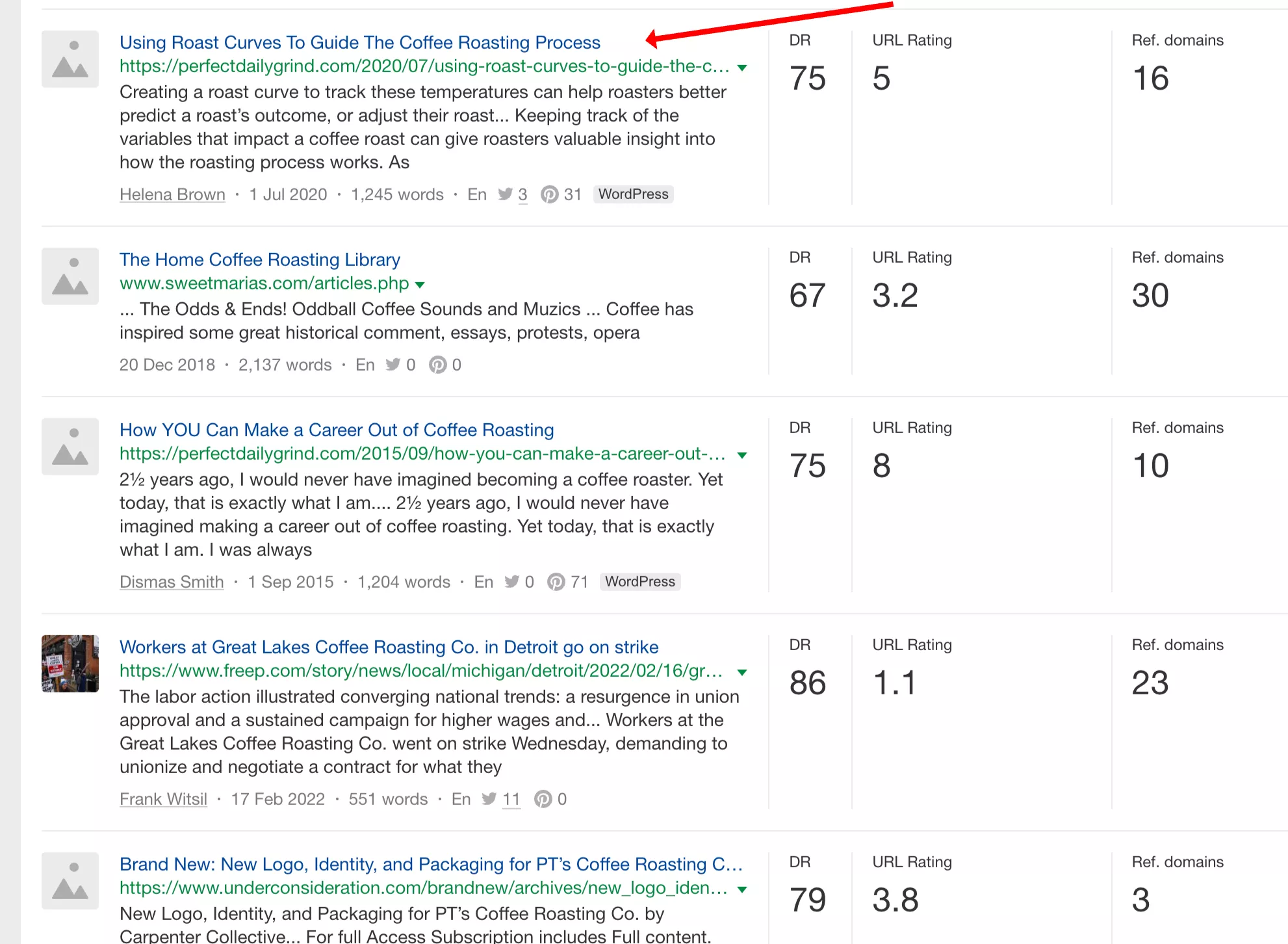
Metrics like Domain Rating can help you spot sites with potent backlink profiles. I usually export sites/domains with DR60 or higher.
Ahrefs’ DR isn’t to be solely considered. Several factors make a site authoritative/credible (i.e., quality of readers, social media following, monthly organic traffic, number of root referring domains, etc..). But Ahrefs’ DR is a good starting metric for assessing a domain’s authoritativeness.
Once you have a list, the next thing is to strategize what to offer in your outreach emails. The message will dictate the success of your link building campaign. Always answer “What’s in it for them?”.
PUSH RANKINGS FOR LOWER POSITION PAGES.
Identify pillar pages on your site that need more boosting with backlinks. These are ones sitting on positions 6 to 10 and would require optimization and backlinks to climb their position to higher spots.
Use content seeds to improve the rankings of these pillar pages.
DISTRIBUTE SUBSETS OF DATA CONTENT.
Content seeds may also include non-text formats such as data visualization, infographics, PDFs, whitepapers, branded images, etc..).

You can cover and distribute one part/area of your internal data to other sites/publications.
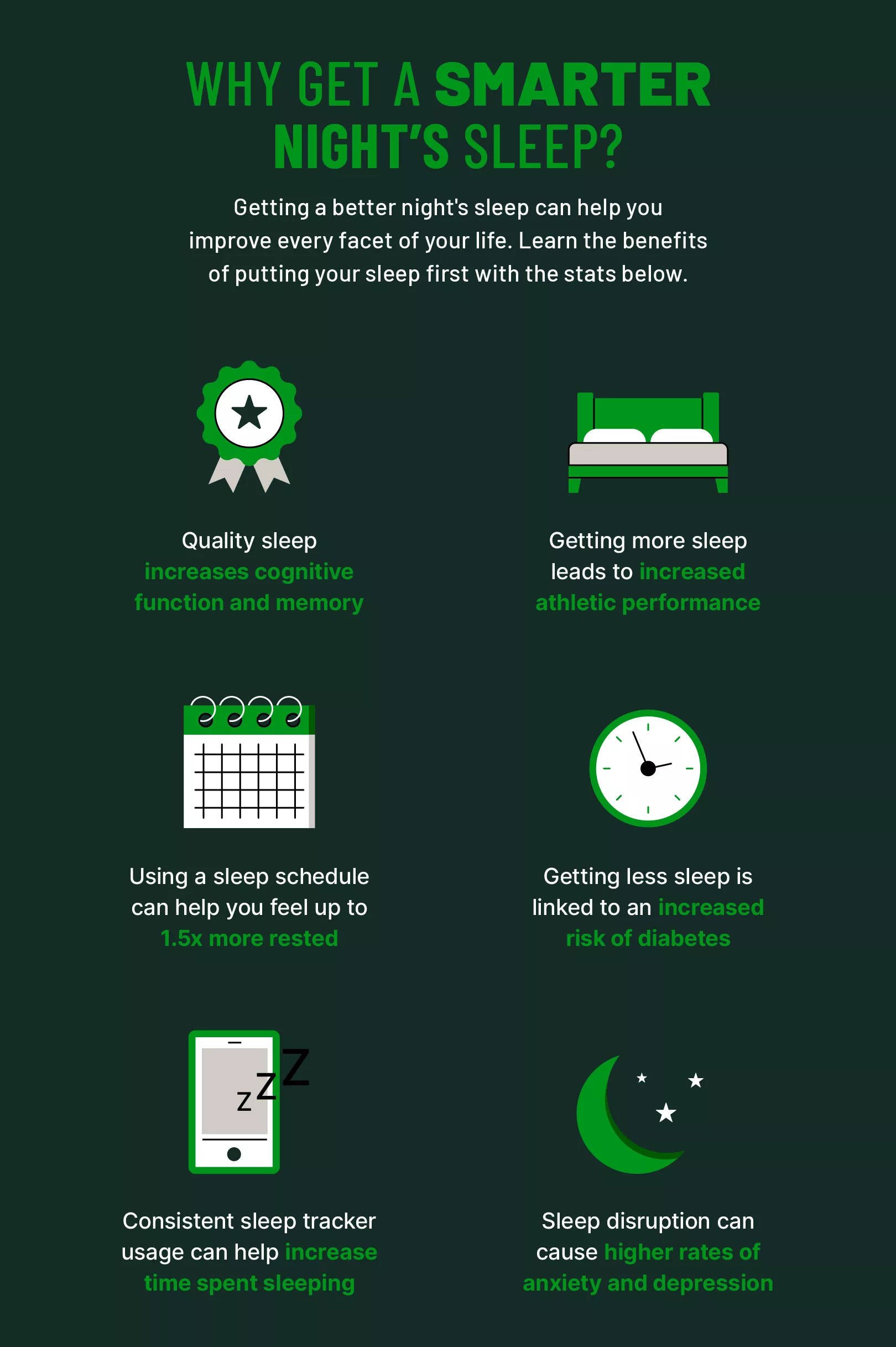
Use the " exclusivity " angle to entice publishers to use your subset data as an additional resource/reference to their existing and/or future blog posts.
TIER LINK BUILDING USING CONTENT SEEDS
When SEOs run their guest posting campaigns, it is a typical plain strategy where they distribute blog posts to different sites discussing different topics based on the approvals of their publications.
With content seeding, you can think of a topic cluster (from pillar topic on your site and all subcategory topics you can propose as topics for guest blogging).
Instead of having different topics for guest posts that aren’t aligned with each other, you’ll have a good relevance structure for all topics for your guest posts.
WHY DOES THIS WORK?
- You can use content seeds (guest posts) to internally link to each other, creating a tier one or two link building strategy across these blog posts.
- It enhances all content seeds ability to rank for their target keywords (from each of their hosted domains).
- It leverages the power of thematic relevance to easily include internal links highly relevant to the context of the destination link (another content seed).
3. REACTIVE DIGITAL PR
Many SEOs and marketers have started using digital PR to improve their organic search rankings, given its ability to generate branded mentions and backlinks, mostly from authoritative publications and news sites.
These high authority backlinks can be strong enough to push rankings of pages targeting highly competitive keywords.
No wonder you’ve seen SEO agencies having digital PR as one of their secondary services.
The typical digital PR focuses on creating large-scale campaigns that could take weeks or months to produce, launch, and promote to journalists. It is a proactive approach to gaining brand exposure through data-driven content (data visualization, internal data, etc..) that speaks to current issues and trends in the industry.
Reactive Digital PR reacts quickly to current (and soon-to-be-trending) issues and events in its basic premise and by its term.
Contrary to digital PR, leveraging current events likely to saturate the entire publication industry usually takes days and weeks.
The planning stage can be more crucial as you need to speed up with research, content creation, and pitching relevant brand stories to journalists.
Here are some ways to utilize reactive digital PR to acquire high authority backlinks to your brand.
IDENTIFY AND MAP OUT NEWS CYCLE
There are recurring events in the form of news cycles that you can identify with your team to prepare ahead for sudden stories and news events.
Here are some examples of event cycles:
- Inflation rates in countries/regions
- Seasonal information on gifts (e.g., Christmas gift guides)
- Changing workplace situations and employee engagement (e.g., the effect of hybrid work setup on employees).
- Public life events of well-known celebrities
- Not all of the events in this news cycle would be relevant to your site, but think of ways to integrate those into your brand stories.
![]()
EXPERT COMMENTARY
If you have a pool of thought leaders and experts in your company, it would be best to tap into your client’s expertise and experience to share input for new events and stories.
For example, if your client is into nutrition and fitness, you can use their client’s expertise when a notable celebrity reveals their diet plan. An example is when brands took advantage of the news about Chris Martin of Coldplay, revealing that he only eats one meal a day.

Journalists may be looking for additional credibility from industry exports to include in existing stories they are writing.
Look for these opportunities when they post tweets with the hashtag #journorequest.
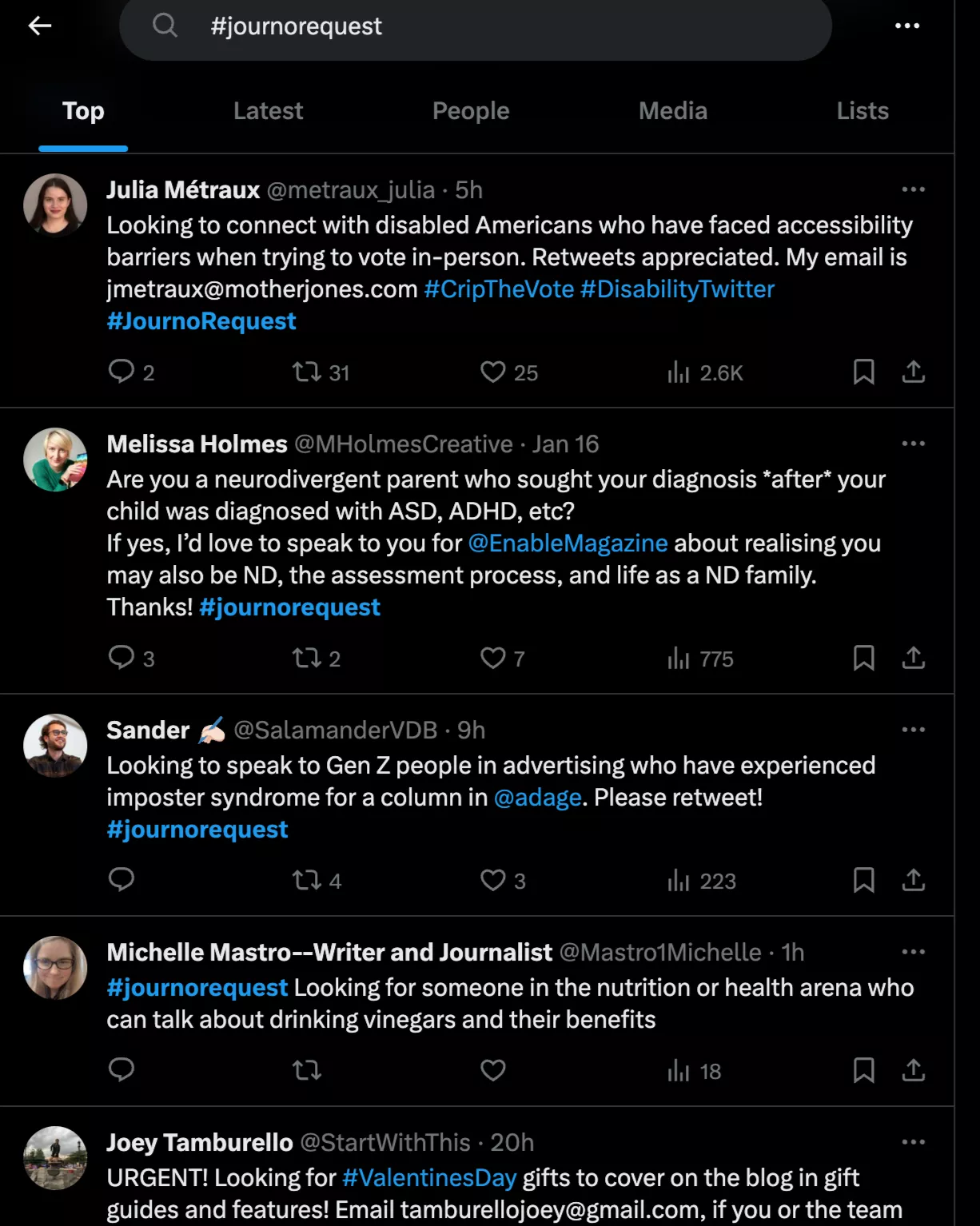
You can also use services like HARO or ResponseSource to monitor and spot opportunities for your in-house experts to comment on topical events.
Tapping into reactive digital PR can generate branded mentions (and backlinks). This also results in gaining credibility and building relationships with journalists who can contact you for more input into their future stories.
EASY TO PRODUCE CONTENT
The key to making reactive digital PR is your team’s capability to produce unique content that matches a developing news story.
The longer time approval for stakeholders and decision-makers to craft stories and deliver thoughtful opinions as reactions to news stories, the fewer opportunities you can take advantage of.
Before engaging in reactive digital PR, consider the timeframes for your team to produce expert comments for stories.
The most effective way is to react to an opportunity within a few days (or hours, if possible).
TREND ANALYSIS FOR INSIGHTS
Invest time monitoring upcoming trends on Google and TikTok to get new insights into current events.
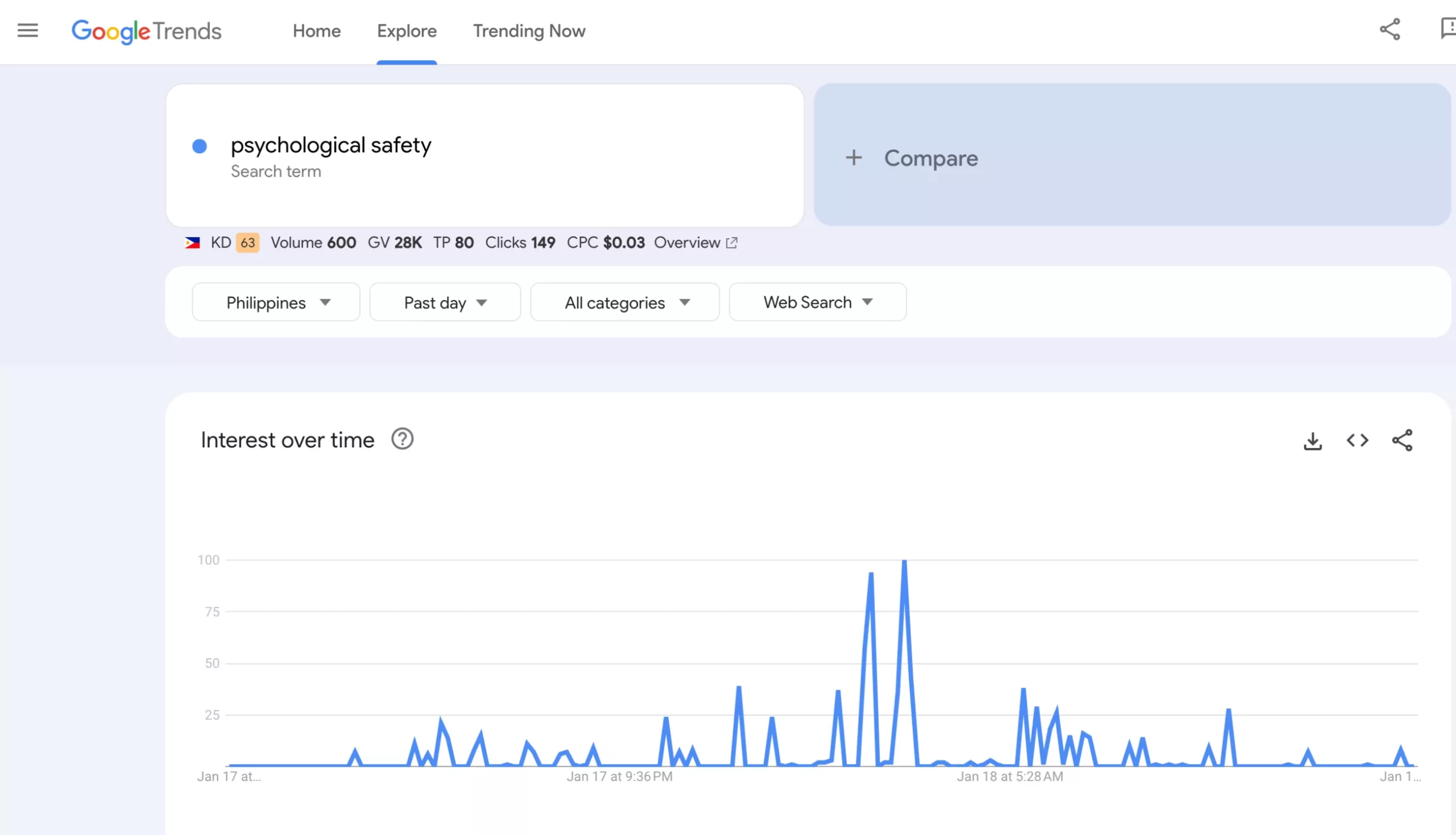
Some journalists voice their opinions on current issues that will generate new information with a high tendency to go viral.
4. CONTENT COLLABORATION AND PARTNERSHIPS
One key factor in getting high authority backlinks is familiarity.
Familiarity results from having more robust relationships with publishers and content creators in the industry.
Compared to submission-based link building tactics (i.e., directories), where it doesn’t require a connection between the site owner and the one building the link, content collaboration and partnerships primarily need building bridges and influencing skills to get deserved attention and interest from potential link sources.
Here are some methodologies to utilize content in making link prospects more familiar with your work:
CONTENT REFRESH
By its term, content refresh is refreshing/upgrading old and outdated content on topic areas you want to focus on.
Given that some publishers lack the resources to edit their old content (let alone produce the desired content quota for the year), it is an added value for anyone wanting to maximize their already published resources.
Use Ahrefs’ Content Explorer to semi-automate the process of finding old and outdated content.
Enter topics you want to focus on.
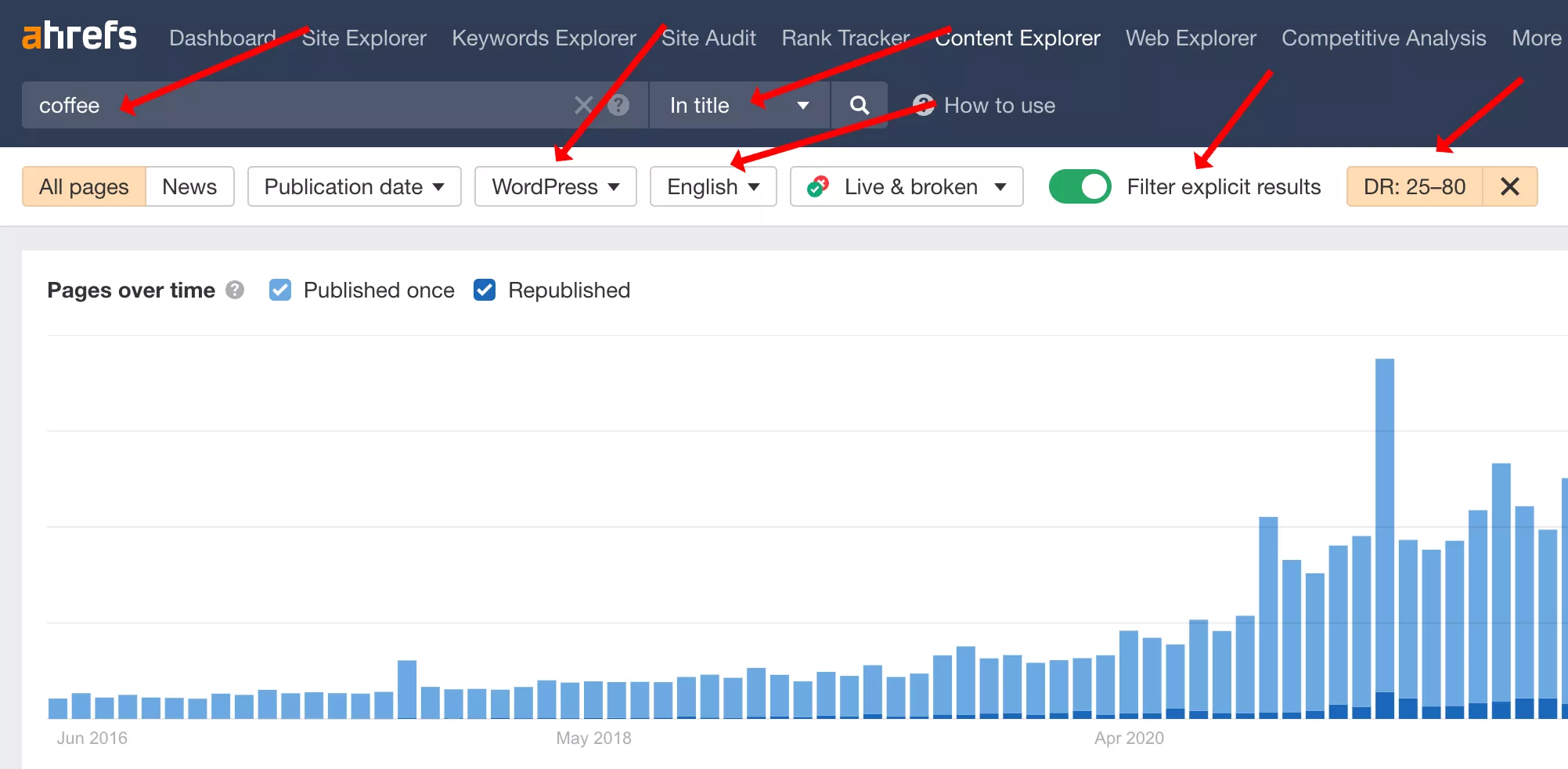
I usually filter the results only to show posts relevant to my client. Here are my qualifiers:
- In WordPress platforms
- English
- “Filter explicit results”
- DR 25 to 80
- Exclude homepages and subdomains
- Not linked to my target site
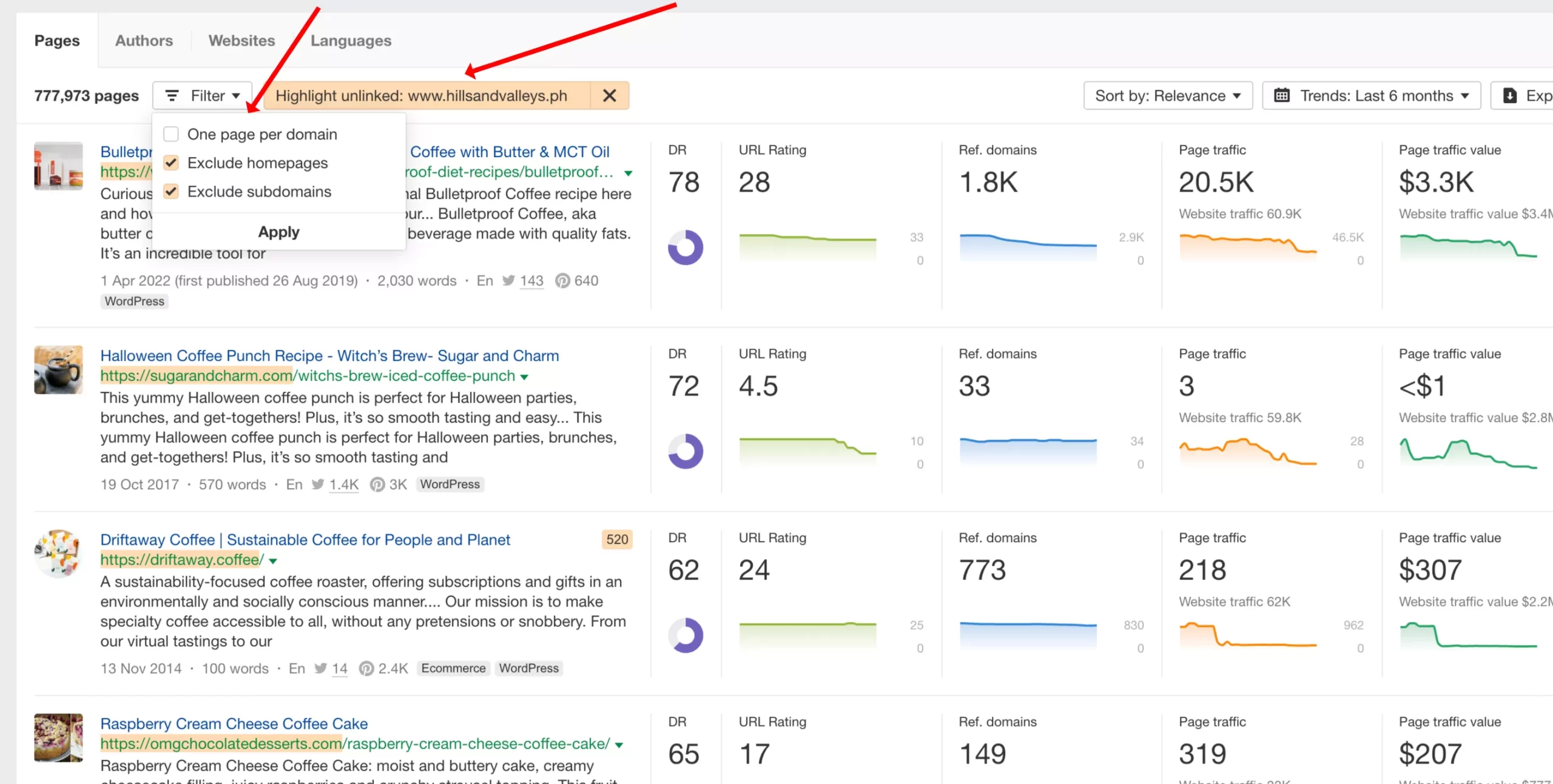
Before you export results, skim through the prospects to see which ones are relevant to your prospecting topics.
Filter out blog posts from domains competing with your client, low-quality sites, and high on-page optimization issues.
Reach out to these publishers. You can use this email template:
Subject: content refresh on [SiteName]
Hi [First Name],
I recently read your post on [topic] at [XXX] and appreciated the insights you shared. However, I noticed some sections might benefit from a refresh to align with the latest [industry] trends.
Understanding the effort involved in updating content, I'd like to offer my expertise. With a background in [industry] and experience in crafting engaging, up-to-date content, I can help revitalize your post.
If this sounds helpful, I'd be happy to discuss it further.
Best,
Venchito
Given that you’re dealing with high authority publishers, showing your credibility as an author is crucial. Include work samples as URLs or attachments to your email.
Once you receive a response, send a brief outline of the updated version before creating the new content. Input new sections they haven’t included in their original copy.
5. NON-CONTENT LINK BUILDING TECHNIQUES
There are also ways to build high authority backlinks by not solely relying on content.
Leveraging other resources that are content-intensive (i.e., email list, offerings, affiliate commissions, offline events, freebies, etc..) offers different kinds of value in exchange for backlinks.
Utilizing resources can differentiate you from other publishers wanting to penetrate industry publications with content.
GETTING FEATURED IN INDUSTRY NEWSLETTERS
Find blogs/sites related to your niche that you can partner with for newsletter contribution (they must have newsletters as well).
Preferably ones that aren’t competing with yours but target the same audience. For example, if you’re running wedding coffee carts, you find photography and wedding food caterers. All of them are targeting soon-to-married couples.
HOW SHARPROCKET CAN GET YOU HIGH-AUTHORITY BACKLINKS
Now, you have an inside look at our proven strategic strategies to get high authority backlinks for our clients. Using these tips can improve your online rankings, and although it will take some time, it’s worth it.
Here at SharpRocket, we’ve been perfecting our link building processes for years, and we’d love to help you as well. If you want to leave your link building campaign to the pros, get in touch with us today.
7 Compelling Reasons Why You Need to Invest in Backlinks
One of the most common questions we get from new SEOs or business owners is why they should do link building for their websites.
It is a valid question for marketers as they want to learn more about the importance of backlinks before putting their money into this search engine optimization activity.
Without understanding its value, they won’t invest in this highly important area of SEO, let alone take the first step.
Now, let me go straight to the 7 reasons you should invest in backlinks. Then, we give you actionable tips on achieving it with your link building campaigns.
Why You Need to Invest in Backlinks?
1. Branding
When you build links, you associate your brand with other brands and entities in your space. The exact anchor text, placement of the link, and the type of website where you have gotten the link tell so much about how you take care of your brand.
We’ve had the privilege of working with enterprise clients for the past couple of years. And it is critically important before we actually engage in any link building strategies for them to know that any plan would
For example, we are working with an enterprise SaaS, and given their prestigious reputation, we could quickly get links across different industries by simply suggesting their resource or free product.
That kind of branding has amounted to several online and offline recognitions and has proven to be effective in bringing the company (not just the website) to the next level.
As a branding tool, link building helps new websites engage in SEO to increase their brand awareness further and, ultimately, get a more significant market share in their industry through SEO means.
“Link building as a branding” mindset will impact how you plan, strategize, and execute your link building strategies.
You won’t engage with publishers and bloggers that are too far-stretch regarding relevance to your brand. This forces you to qualify domains/sites in the link prospecting stage before emailing them for link requests.
When you properly place links on sites/entities you want to better associate your brand with, you’ll have higher chances of bringing in new branded searches for your company, personality, or product.
When readers see your backlinks featured on reputable A-list digital publishers, it would spark interest in them and try searching for your brand on search engines.
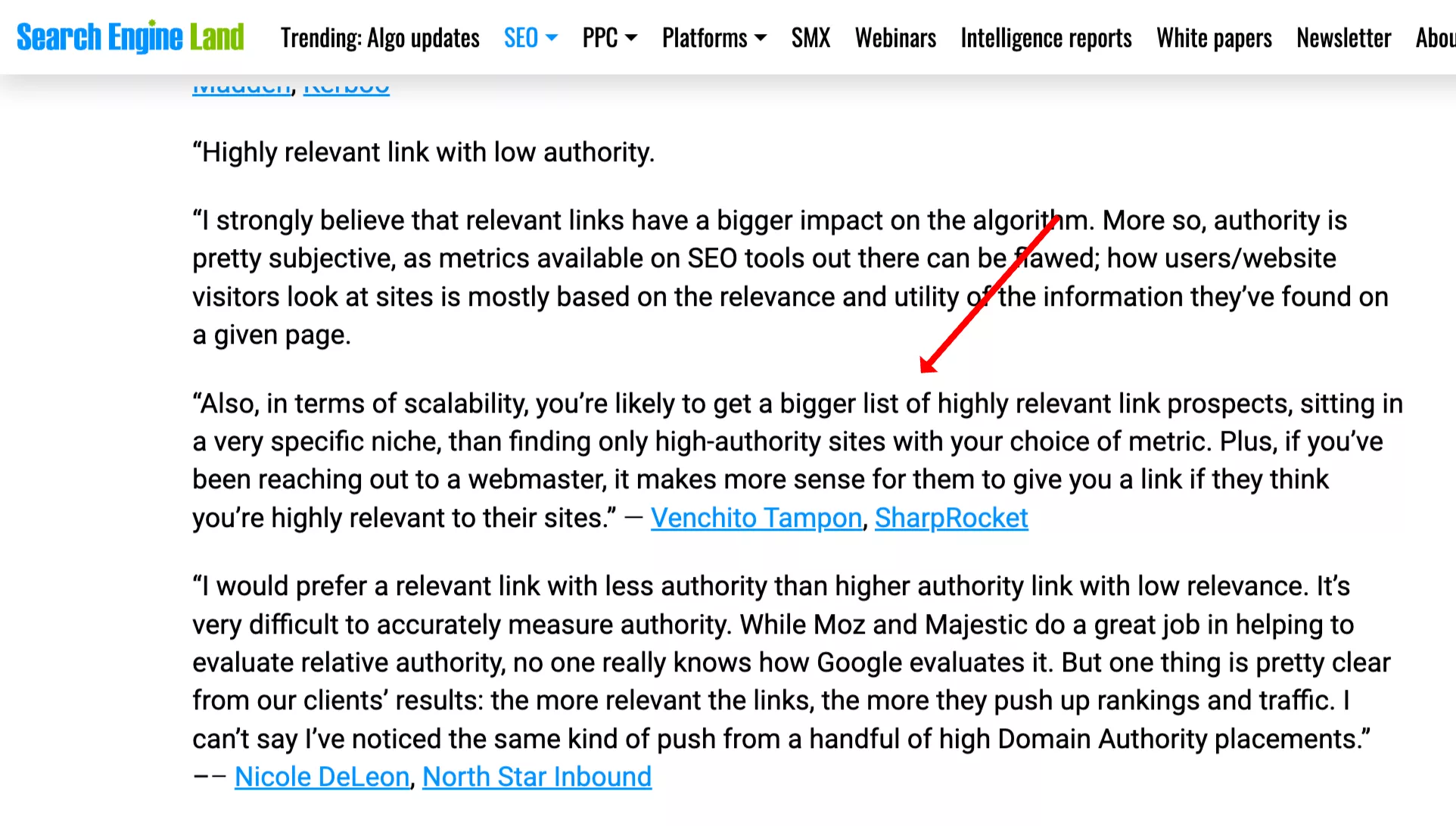
Link building is significant in developing your holistic branding campaigns, not just in organic marketing.
One of the ways backlinks affect branding is you can populate your brand name’s SERP real estate with your owned media or web properties. This would help you establish a robust online reputation.
Actionable Tips To Enhance Branding with Backlinks:
Focus on the reasons why people link.
Two primary reasons people link to your brand are relationships and content.
The content you publish and distribute (i.e., product, service, offering, information) and the relationships you establish with link sources (e.g., strategic link partners, industry friends, or brands you actually partner with or use).
When strategizing for a link building campaign, answer these questions:
- What content assets are going to attract linkable audiences?
- Can we leverage existing relationships for content distribution (for links)?
Treat your content as a product.
Most marketers view content creation as another marketing activity they have to do consistently. But when you treat your content as a product, you release with the highest quality possible.
At SharpRocket, we share case studies and actionable link building strategies that are proven to work for our clients and we think might be useful to our readers. We differentiate our content assets from other agencies' blogs by diving into the real practical side of link building and SEO - to share the most actionable advice in every blog post.
2. Crawl Budget
Crawl budget refers to the quantity of pages crawled on a website within a specific timeframe. When your site has a larger crawl budget, more pages are indexed and reassessed, improving search engine rankings.
Simply look at Google Search Console to get an idea of what your crawl budget is.
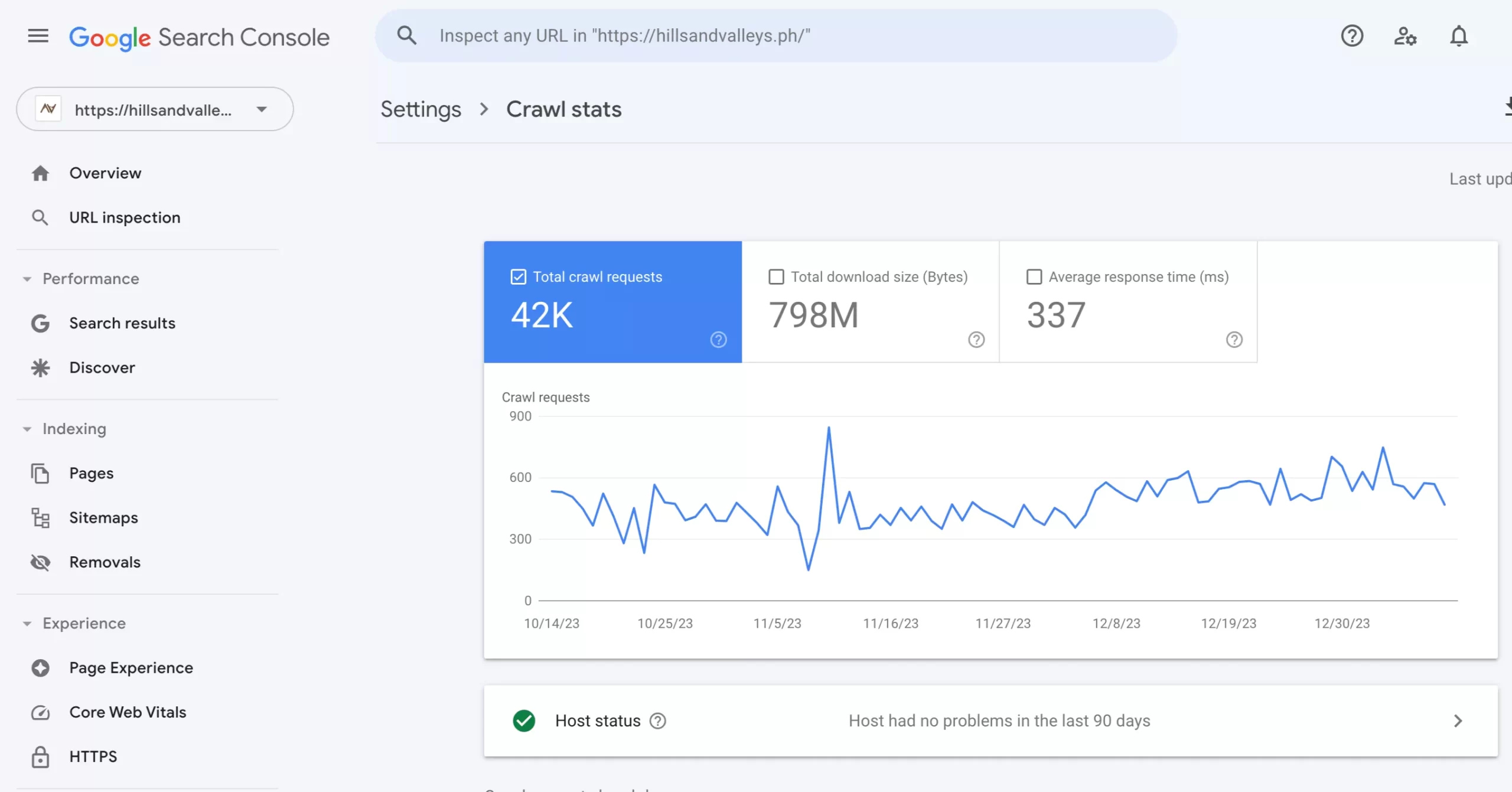
According to many SEOs, there are key factors to optimize the crawl budget: 1) popularity and 2) freshness.
Popular domains get crawled more often (popularity). Websites with more updated and new content will likely be crawled (freshness).
Three link building activities can help make websites more popular and fresh: proper internal linking, inbound link acquisition, content audit, and upgrade.
You help optimize your site’s crawl budget by actively pursuing inbound backlinks. SEO Spyglass did an SEO test in which they found a strong correlation between having more inbound links and more spider visits to a page.
3. Traffic
“The links that people want to follow carry the most weight”. - Bill Slawski.
The types of links that matter in today’s SEO are the ones that send relevant traffic to your site. These are most potent in that they capture the very purpose of having a link to drive users to the destination page (serves as an additional reference or offering).
Link building allows the site to capture a constant traffic flow from relevant sources. And this traffic can bring additional sales (conversions) to the business site.
Actionable Tips To Gain Traffic with Backlinks:
Distribute content on relevant websites.
Not all potential link sources should be highly relevant to your site. But at the foundational level, you should aim for an initial set of backlinks within the same industry.
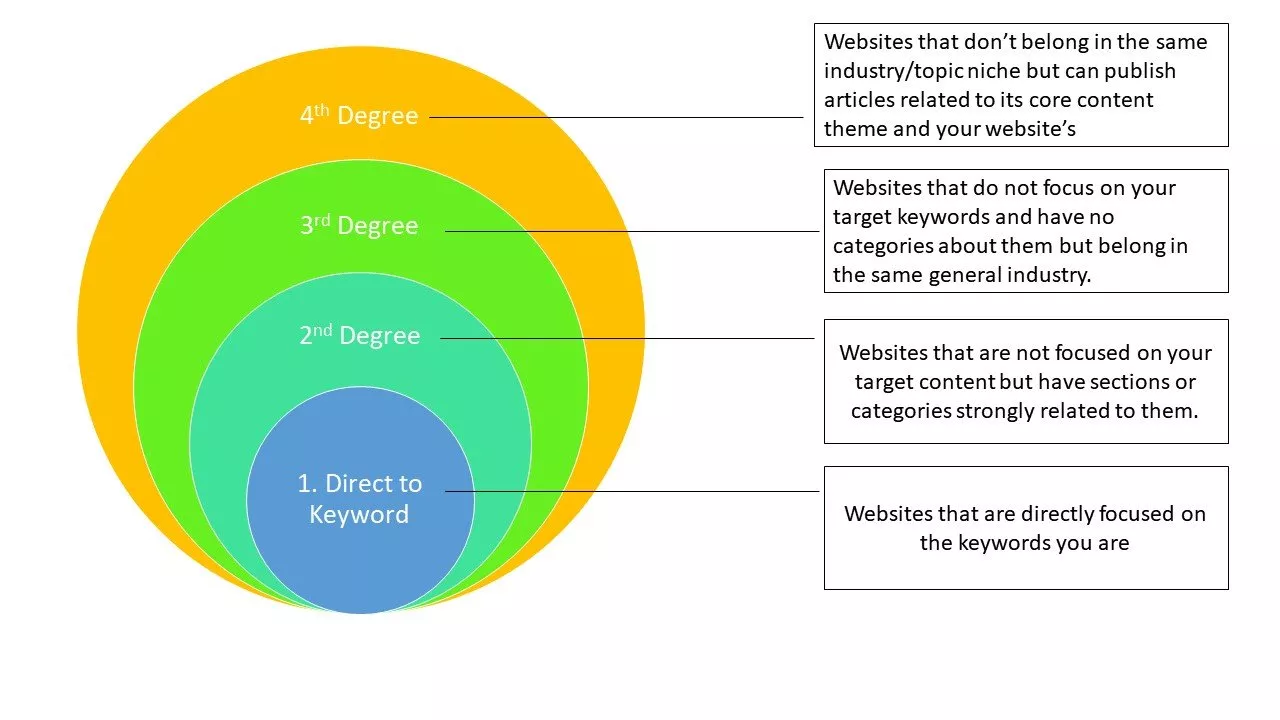 I’ve covered this degree of relevance (Searchworks’ framework) in my other link building guide on strongest backlinks to help you marketers expand their link prospecting lists by tapping into different levels of target link sources.
I’ve covered this degree of relevance (Searchworks’ framework) in my other link building guide on strongest backlinks to help you marketers expand their link prospecting lists by tapping into different levels of target link sources.
Think highly of strategic backlink placement.
You can’t expect traffic to be sent to your site by placing inbound links on any place on the referring page.
The more visible your links where users click on them, the more likely you’ll get referral traffic from linking pages.
The best way is to pursue contextual links (backlinks placed within the body of the content) to ensure clicks on links.
4. Trust and Authority
Trust and authority are intangible SEO factors most marketers ignore when investing in a link building campaign.
The most beneficial part when you’re actively pursuing the right types of backlinks for your site is that audiences who don’t know you before start familiarizing themselves with your work and the content you produce.
When there is trust, the momentum starts growing in building the authority and thought leadership you need to attract new link opportunities and relationships for your business.
Actionable Tips To Build Trust and Authority with Backlinks:
Acquire links from highly credible sites.
Get backlinks from sites that both people and Google trust and see as an authority in your space. The way to know it is to see which publications/sites have a massive following of readers and are constantly producing valuable information in your space.
For example, Daily Coffee News and Fresh Cup are highly credible publications in the coffee industry that constantly attract passive links from other content creators.
These sites get more popular as they publish highly valued content their target audiences (coffee owners, roasters, baristas, coffee lovers, etc..) would be willing to consume, share, and distribute to their peers.
This blog also gets featured in top listicles because of the credibility and proof of work we did over the past decade.
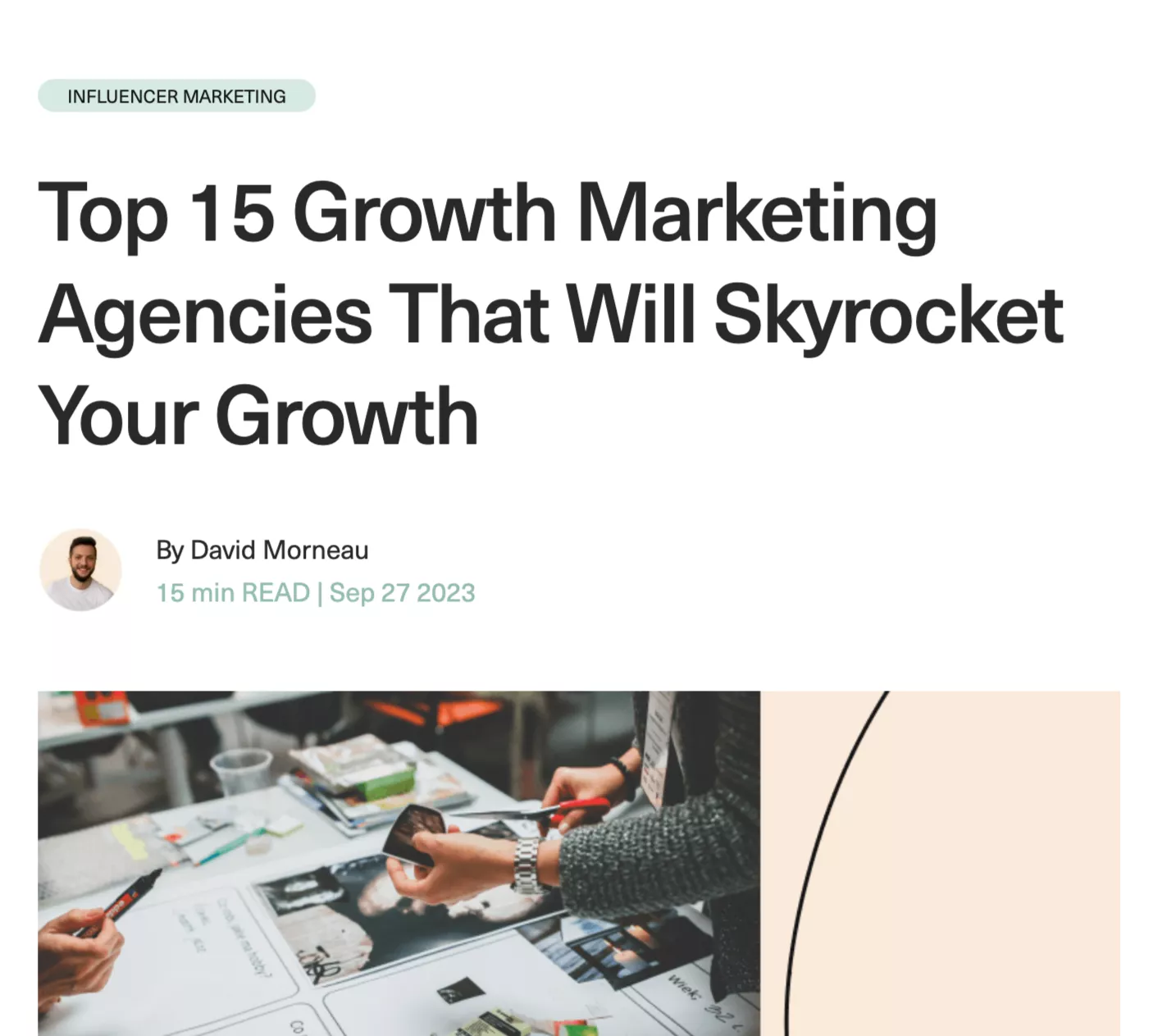
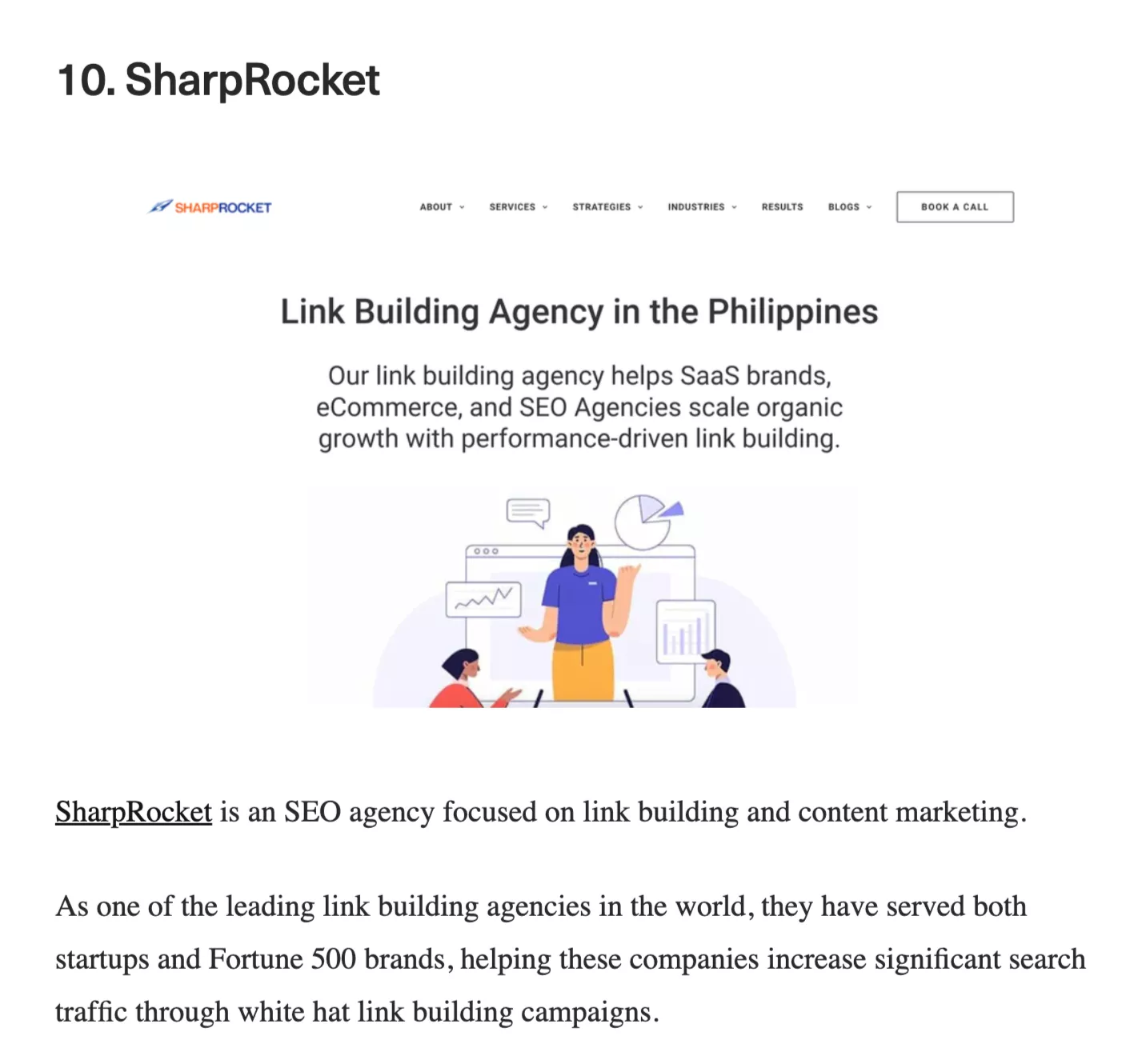
So, getting referential links from these trusted and authoritative sites can boost any brand’s presence in the industry.
Utilize Digital PR.
Digital PR is now mainstream, but I’ve seen brands still skeptical about its effectiveness in establishing the brand's authority.
If you want to expand your territories in other regions/countries, you will likely benefit from Digital PR campaigns.
In my previous article on SEO in 2024 insights, I covered one client of ours who is heavily invested now in digital PR to push through their brand awareness in the Southeast Asian region (starting first here in the Philippines).
By getting backlinks from reputable sites, readers of those publications start becoming curious about the brand, what it is about, and how it can add value to their lives.
5. Conversions
Link building helps drive assisted conversions to your site.
When you target link sources that can drive more customers (highly engaged traffic) to your site, you’re likely to see conversions for your business.
Actionable Tips To Get Conversions with Backlinks:
Aim for referring pages with middle-of-the-funnel intent.
These include lists of products/services in your sector or region. Getting links from these pages attracts potential buyers to your site who are into their decision-making purchase in finding solutions to their needs.
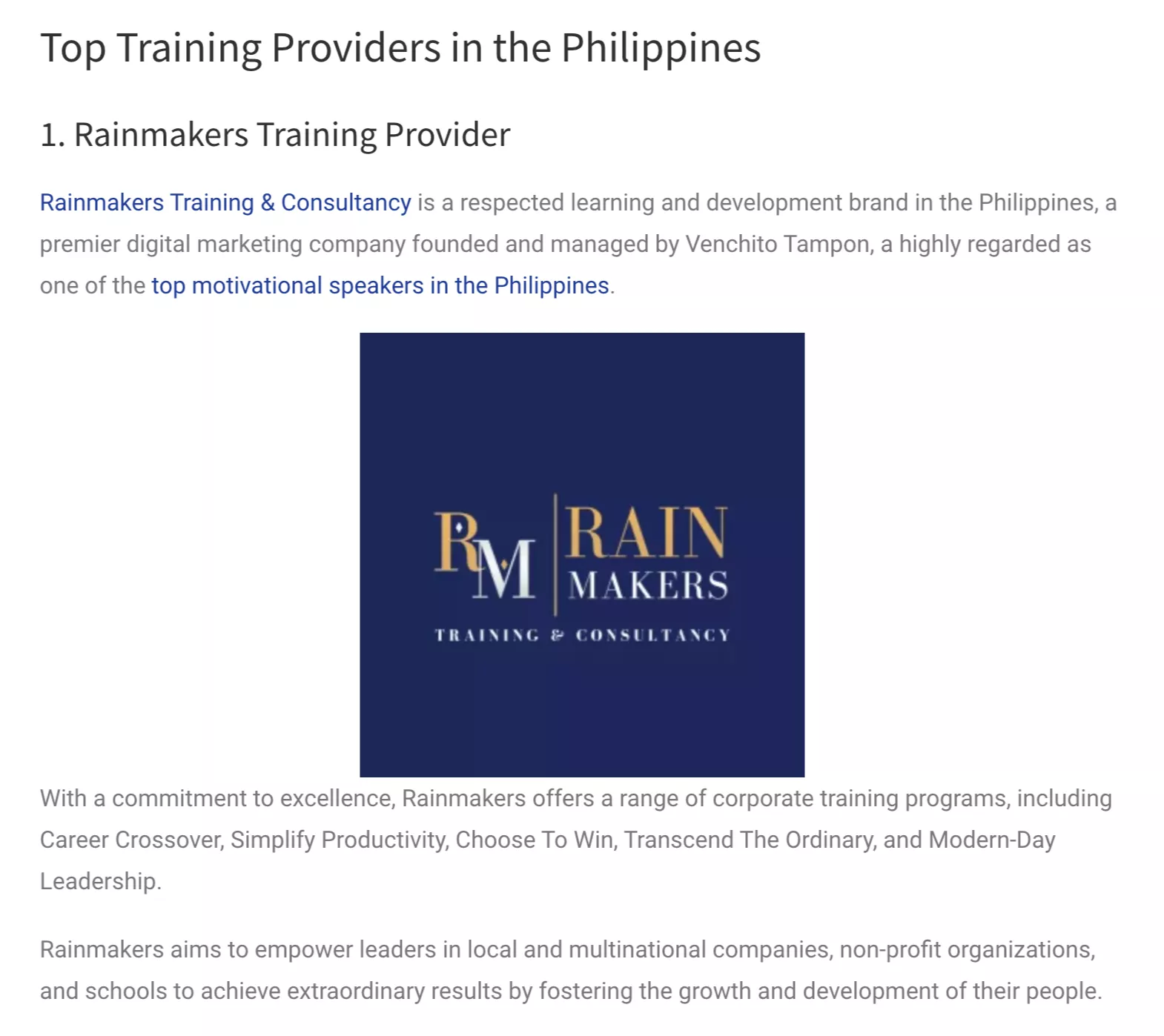
Leverage relationships to get links from credible sites’ top-ranking pages.
Some highly credible publications have strict editorial guidelines for publishing content from external authors. This would require you to build internal relationships with in-house editors and staff to land a chance to be a guest author.
That said, if you have some relationships with link partners that you can use to land authorship opportunities for industry publications, you can get backlinks from these distributed content.
These relationship-driven links are difficult for your competitors to acquire, which increases the link gap against other ranking competing sites.
6. Rankings
We’ve covered enough reasons to invest in backlinks for your site.
If you have the right mindset of building links, this obvious imperative to ranking your site is highly possible.
Google is largely a link-based algorithm that will stay the same for years. But not all links are equal. You should acquire backlinks that matter most.
Actionable Tips To Improve Rankings with Backlinks:
Build foundational links at the start.
Google rewards websites that continue to send trust signals (off-page).
Start by getting backlinks from social profiles, citations, and local niche-specific directories. Do it like what a regular business does. A legitimate company would have complete social profiles (Facebook, Linkedin, Twitter, Instagram, etc.).
Passively attract natural links via ranking for informational keywords.
Publish assets with the intent to rank for informational and question keywords. When other content publishers find your content helpful to use as references (while researching their topics), they’ll be more likely to link to it from their content.
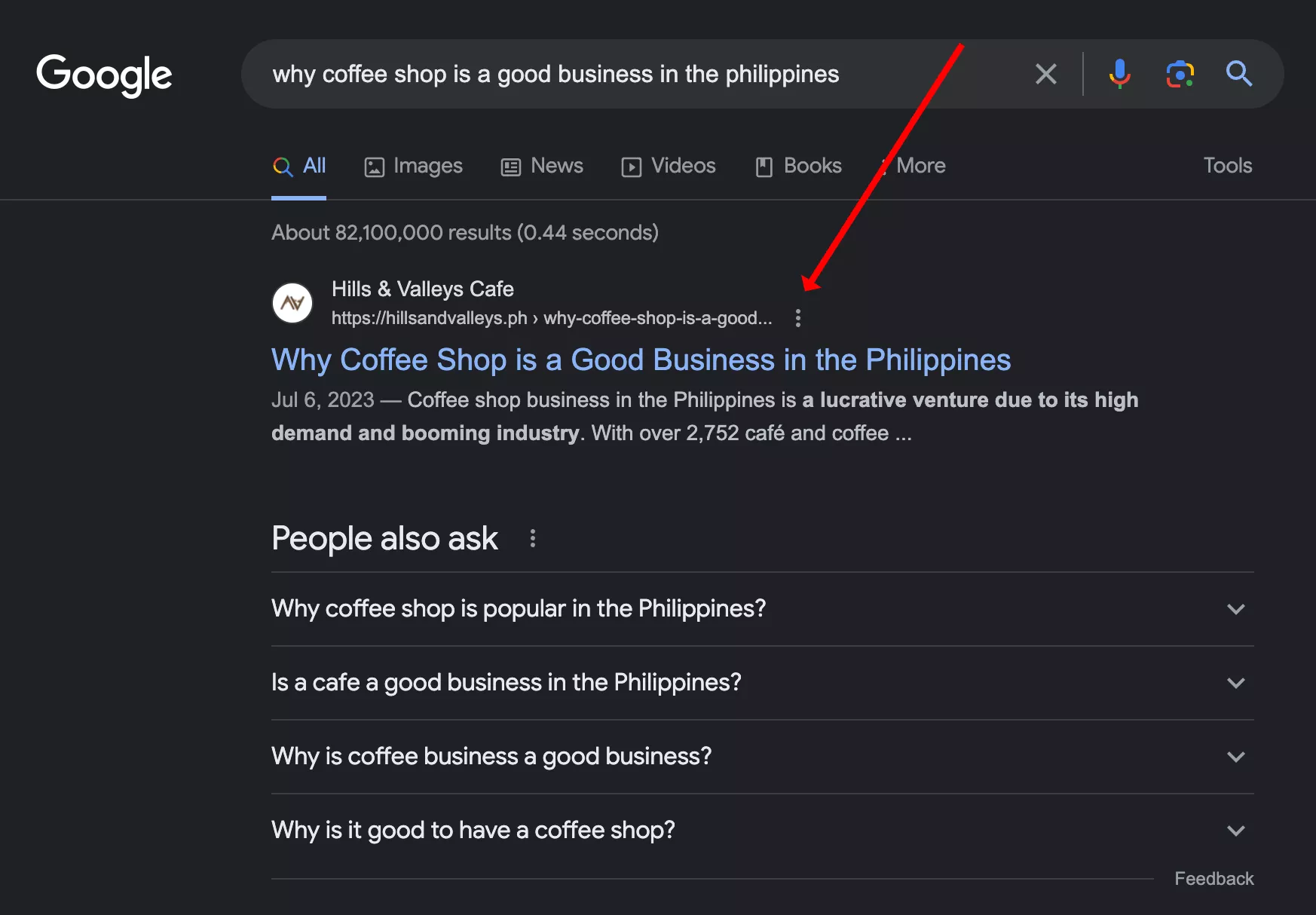
 7. Innovation For Next Brand Offerings
7. Innovation For Next Brand Offerings
This one is related to earlier branding reasons. Another core benefit of link acquisition is it allows brands (especially starting ones) to innovate their product or service offerings based on the current demands.
For example, we’ve been revamping our SEO strategies for my coffee brands. We are constantly thinking of new business models we can touch on to expand our offerings.
Through ranking for the best coffee service keywords here in the Philippines and other link building partnerships, we’ve added a new coffee cart package.
It stems from the idea that other suppliers, like local wedding event companies in the Philippines, are linking to our coffee blog.
Build links to see consumer behavior patterns and where their attention is going. This would give you insights into new product or service offerings you can offer with your brand.
That’s all for now. If you have questions, feel free to comment below. And you can also follow me on Twitter @venchito14.
SEO in 2025: Insights To Outrank Your Competitors
This post is not about SEO predictions in 2025. Instead, I’ll dive into the insights I gathered and learned from 2023 that would still make a mark this year forward.
We’ve been publishing heavily on link building, so we’ll have actionable tips on what we think is highly important to build the strongest backlinks in 2025.
1. Stronger Emphasis On Experience
The “E” of experience added to EAT impacts how brands publish assets based on authenticity and real-life scenarios. Google’s ranking algorithm will better reward websites with first-hand verifiable experience that demonstrates authentic thought leadership.
Here are some things we did that helped our sites and our clients’ sites demonstrate first-hand experiences even more.
Inviting Real Practitioners For Content Contribution
Relationships will always be a critical factor in addressing the demands for content creation. Being surrounded by trusted leaders, authors, and personalities in your industry can help you tap into their expertise to shell out expert-driven content for your website.
Invite them to collaborate with your brand to benefit both parties’ audiences mutually.
With their real-life experiences, you can increase the content's credibility (and quality). Thus making it more appealing for readers and other content creators to distribute it across their networks.
 First-Person Guest Posts
First-Person Guest Posts
Guest posting is still a viable link building tactic for most marketers. Still, it has become difficult to scale for the most part, given that most bloggers today demand payment for published articles or have high restrictions on who can only contribute to their blogs.
You can use “experience” as a selling point when pitching mid to high-tier publications in your space. By writing topics that demand expertise and first-hand experiences, you’ll be more likely to turn your email pitches into guest posts.
2. Search On Social Media
A strategic approach to SEO starts by acknowledging other mainstream channels that demand optimization, including social media posts.
We’ve seen how impactful TikTok and Youtube Shorts (Youtube being the second largest search engine) are in acquiring users and letting them stay on the platform. The search for information isn’t anymore.
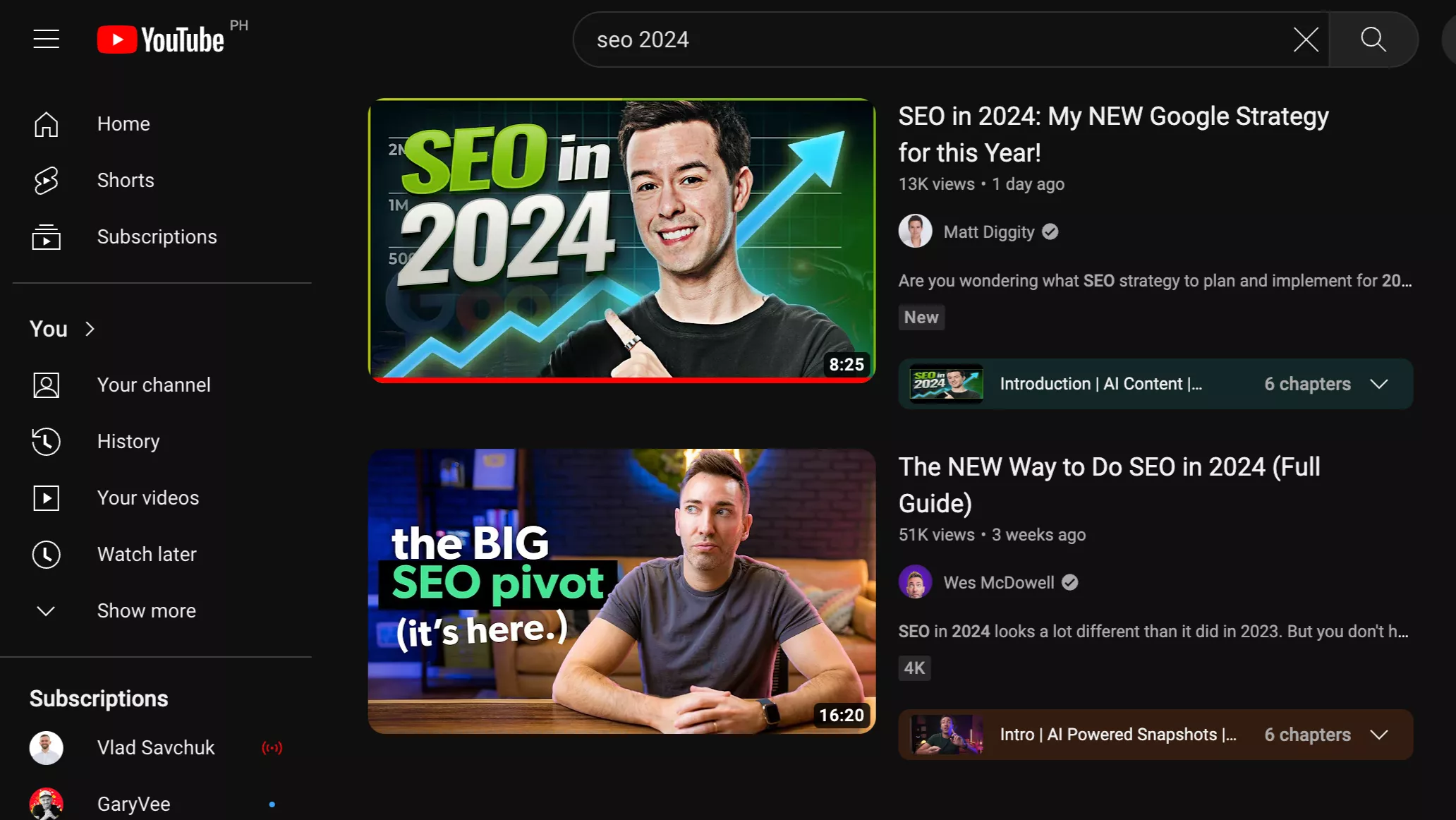
Marketers are paying attention to optimizing their social media posts as much as they do with their blog content. Seeing this as a shift requires a holistic SEO strategy to capture a wider audience for brands.
Repurpose Assets and Distribute Them Across Social Media Platforms.
Find evergreen assets already published on your blog and think of ways to repurpose them as social media posts. That way, you send similar brand messages across different channels but in various means, content formats, and styles.
Invite Social Media Influencers To Participate in Content Creation.
Identify new upcoming influencers in your space and incentivize them to create outstanding content based on expertise and experience.
You may also want to repurpose it into written content you can optimize for keywords to rank for. Leverage more of this, and it’ll help you establish topical authority with several content pieces published around a single topic or content theme.
3. Link Building For Organic Rankings and EEAT.
Links have certainly been the most significant reason we helped our clients quickly improve their site’s organic traffic.
We’ve also tested our websites to see what link building method works best and what their effectiveness is to their target pages after Google updates.
Here are some of the things we observed to be crucial factors that make every link building campaign successful:
Diversity of Links
You can’t rely on a single link building strategy.
While there are scalable techniques such as high-quality guest posting, digital PR, and resource links that work well, there are advantages to diversifying your links:
- Outranking your competitors better. As you have diversified link types, you can gather link opportunities your competitors haven’t acquired before and aren’t easy to replicate.
- Natural link profile. You’re less likely to be hit by algorithmic penalties and, therefore, avoid sudden loss in rankings and organic traffic.
- Establish the foundation of your website from an EEAT standpoint. Natural and profile links can help bring trust signals to new websites, enabling your site to rank your pages faster.
My top advice if you’re outsourcing link building services is to ask for their strategies and collaborate with your team so they can creatively think of ways to publish assets that attract passive links.
Quality of Links
It’s obvious, but I’ve seen more marketers relying on their systems on AI. That said, it’s either making the processes more practical or they are innovating ways to improve their systems to produce better quality output.
As an SEO consultant, brands and SEO agencies now suggest to their clients that quality matters more than quantity. Yes, it would help to deliver more links, but even with a few links in today’s SERPs, you can outrank your competitors.
4. Scale The Unscalable
More often than not, what is easily scaled is widely used by marketers, which dilutes the strategy's effectiveness—case in point with guest posting and infographic outreach. In 2010-2013, you can achieve a 15 to 40% conversion rate with manual outreach. But not anymore.
Invest 30 to 40% of your time to execute unscalable link building strategies. These would require intensive resources and assets from your team but would make a substantial advantage in the long term.
Some of these unscalable strategies are:
- Link earning to rank for low-competition industry-specific keywords that other content creators would use and describe when they write their content.
- Partnerships to reciprocate links for both websites- mainly cross-promote relevant linkable assets.
- Publishing external comprehensive content assets with high chances of ranking for competitive keywords using other sites' high domain authority.
You need a full year to implement these strategies on your site consistently. But this will undoubtedly result in passive link acquisition with a flywheel effect on links and skyrocket your rankings and organic traffic.
5. Link Building Ties in SEO Integration
Most clients we’ve helped scale their link building are integrated into the overall SEO campaigns.
Whether it is a featured-centric link development campaign for SaaS or building consistent 7 to 10 links/month for a local brick-and-mortar biz, we build links with business objectives in mind.
2025 will be a year where top brands and SEO agencies no longer care about vanity metrics in links.
Some quantifiable metrics are good for assessing domains for potential backlinks initially. But in a grander view, every link must contribute not just to the rankings.
To give you practical examples, the clients we worked with aim to:
- Maintain local and/or national rankings for top competitive keywords
- Get a bigger market share via organic rankings from their top pages.
- Point links to top resource guides with internal links to similar resources (which ultimately helps build the site’s topical authority).
- Acquire mentions from top niche sites that drive referral traffic from targeted audiences.
- Target NEW product feature pages and get new customers to their all-in-one tool suite (for SaaS)
All aim to put the brand in a better position in SERPs and their industry.
6. Power of Digital PR
Most in-house SEOs now understand the power of digital PR in driving high-authority links to the website, which helps strengthen its entire domain authority.
We worked with clients with large amounts of customer data, allowing them to effortlessly produce highly valued assets (data visuals, interactive assets, etc.).
They use digital PR to increase the reach of their assets further.
Ultimately, these use it to capture other regions. In one case, they want new signups from South East Asian customers.
7. National Links Drive As Much Impact As Local Links
With limited opportunities to get links on a local level, most of the links can be built from a purely relevance perspective.
SEOs would have a higher chance of landing more links and doing so at scale with the national level.
At most, the impact can be much higher to drive rankings on targeted pages.
8. Organic Rankings As A Research Tool For New Products/Services
Through keyword research and real-time rankings for the brand, terms can now give insights into new potential services/products a brand can make.
For eCommerce, it is a great way to scale operations that fit into customers' current demands. Diving into upfront research on what types of products or services are searchable by users - and even the specific type of product names and brands - are valuable insights for any business owner and investor engaging in SEO.
SEO For Immigration Lawyers
People search on Google when looking for immigration lawyers.
So, if you want to increase quality leads to your legal practice through SEO, here’s a step-by-step guide.
SEO For Immigration Lawyers
SEO for immigration lawyers depends on your target audience.
If you’re targeting local clients, you only need local SEO. You must optimize your site for national keywords (e.g., US audience) if it's a national audience.
Unlike plain SEO, local SEO isn’t limited to improving rankings in the regular Google's SERPs. It also focused on getting your business to climb the top of local business map packs displayed on top of search results pages.
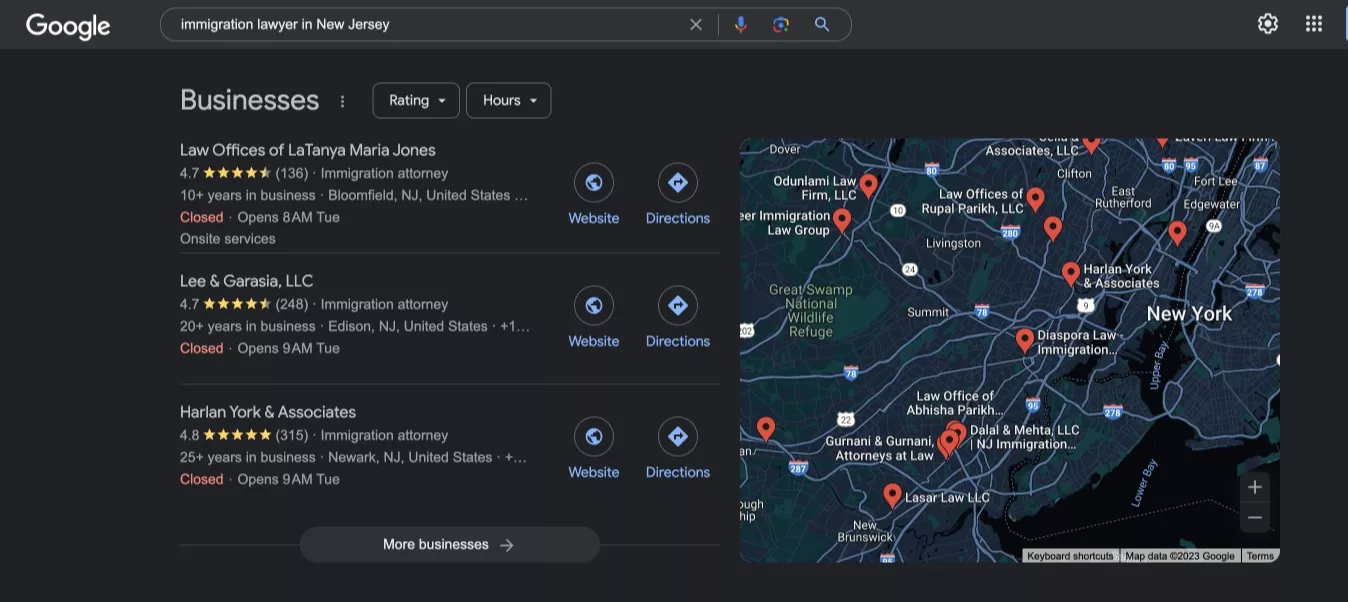
You can rank for both Google Business Map packs and organic search listings if you want greater visibility.
Imagine having your website appear on Google Map Packs while they could still see your brand in organic search engine listings as they scroll the page.
Now, let’s get into how to rank your immigration law firm for Google Map packs and organic search listings.
How to Rank Your Immigration Law Firm?
1. NAP Consistency
NAP represents business name, address, and phone number (NAP), the three most essential elements of a local SEO campaign.
By consistently placing it across prominent places on your site and other sites for citations, you help Google identify your brand and associate it with its geographic location.
Include NAP in your About Us page or sitewise in your website’s footer or header sections.
2. Claim Your Google Business Profile
Google Business Profile is a free Google service that allows you to create a business listing online.
When search users look for your business, your Google Business Profile will display its map location, image, and other general business information.
Create your Google Business Profile here. Fill out the fields in your account, even the ones with optional fields. This would allow you to get ahead and outrank your competitors.
Write a detailed business description.
Add original photos of your office, staff, and any relevant business pictures.
Ensure you accurately input the correct category. Google has now added specific categories in Google Business Profile.
Link to your social media profiles (Facebook, Twitter (X), Linkedin, and TikTok. It’s a feature of Google Business Profile where you can add more trust signals to your business/site.
And lastly, get genuine reviews. You can ask your clients to leave reviews on your Google Business Profile. This would help your GBP to rank higher on Google Map Packs and increase conversions from potential clients checking social proof of your site.
3. Be Strategic in Your Keyword Research
Ranking for immigration lawyer keyword isn’t an easy feat.
Take a look at how competitive local SEO is in the legal space.
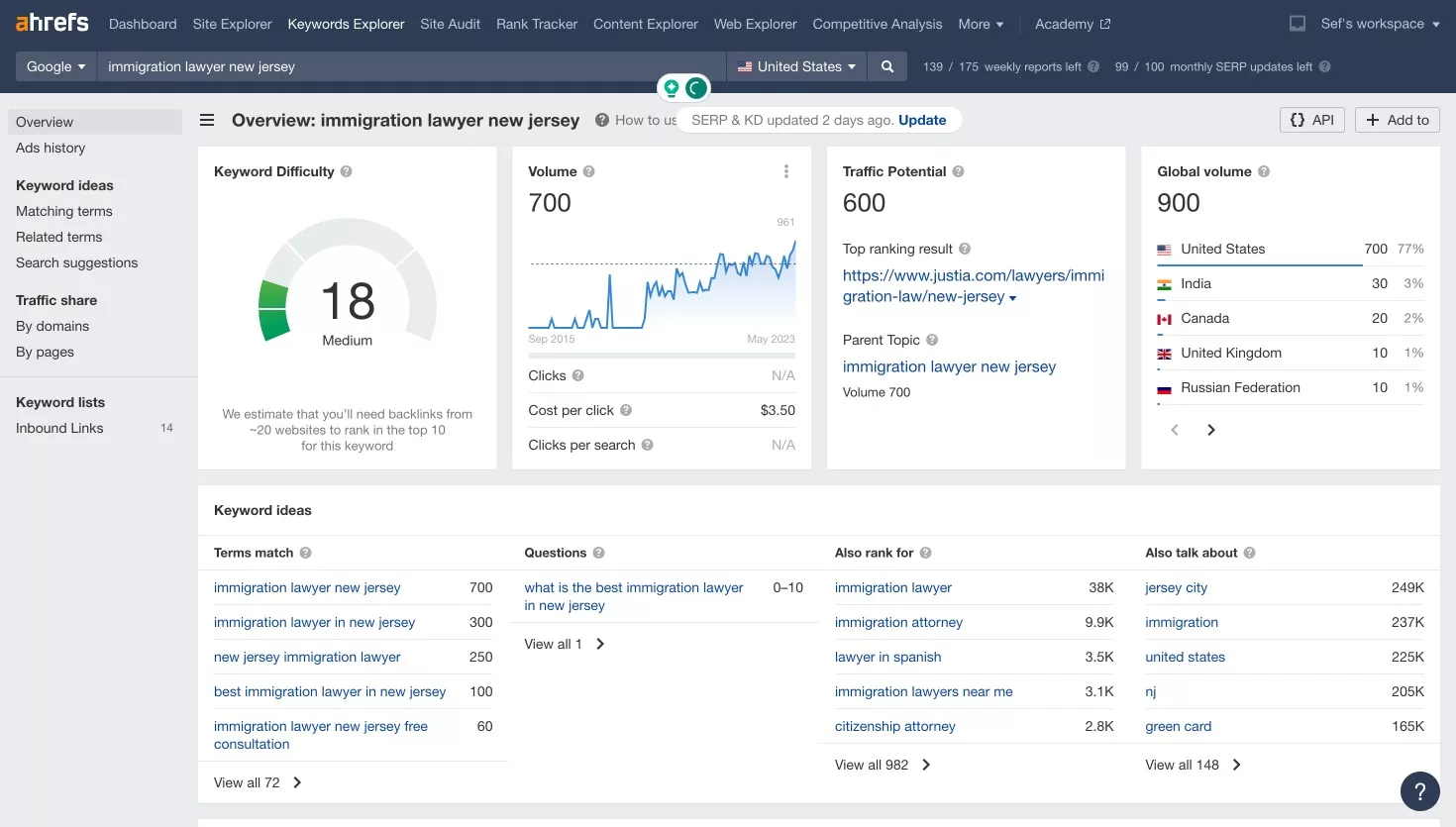
However, you still have a fighting chance if you take a different approach to keyword research given that keyword difficulty shouldn’t be your sole indicator for search competition.
By looking at Google’s SERPs for your target keyword, you’ll then see who are the top-ranking pages and what are their current domain authority.
For instance, if you do a Google search for “immigration lawyer in St. Louis”, you’ll that some of the ranking websites have Ahrefs’ Domain Rating of less than 30.
It shows you have a high chance to rank for this keyphrase even if you have a new website.
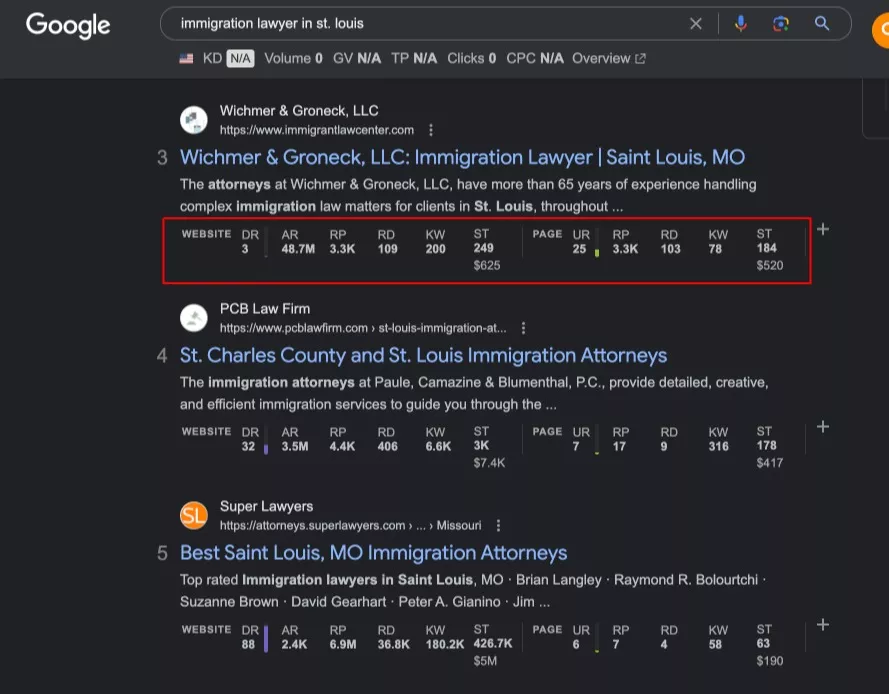
Target Long-Tail Immigration Lawyer Keywords
If you have a specialized service, i.e., immigration legal service for Filipinos, you may target a more specific keyphrase, “Filipino immigration lawyer Chicago”.
This type of keyword typically has a low search volume but a high intent of converting into clients and has lower competition.
Aside from creating landing pages that target your head terms, “immigration lawyer in Chicago”, you can publish more landing pages that optimize for “Filipino immigration lawyer Chicago”.
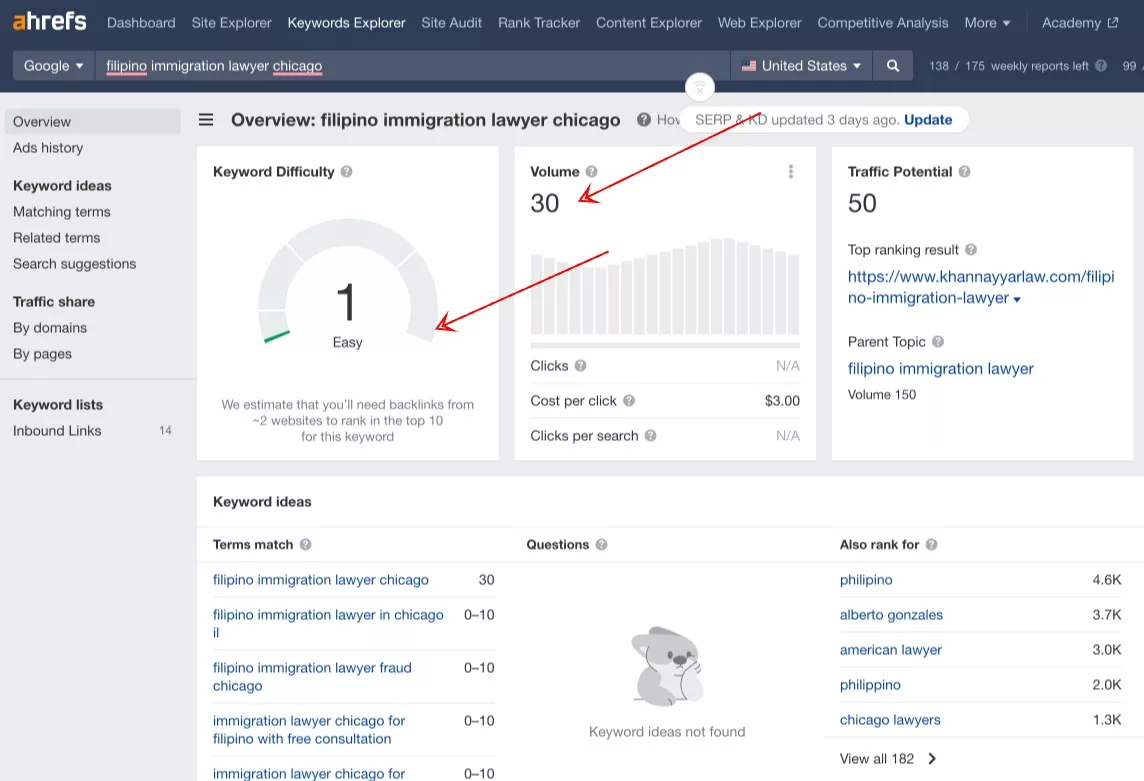
Publish Informational Content Around Your Target Keywords
One of the best ways to rank for keywords is to build topical authority. Topical authority refers to gaining a level of authority within a specific expertise or area in the industry that Google recognizes you as an expert/authority in that niche.
Start creating blog content for people asking questions related to your legal service.
Enter the keyword in Ahrefs’ Keyword Explorer. Go to Questions.
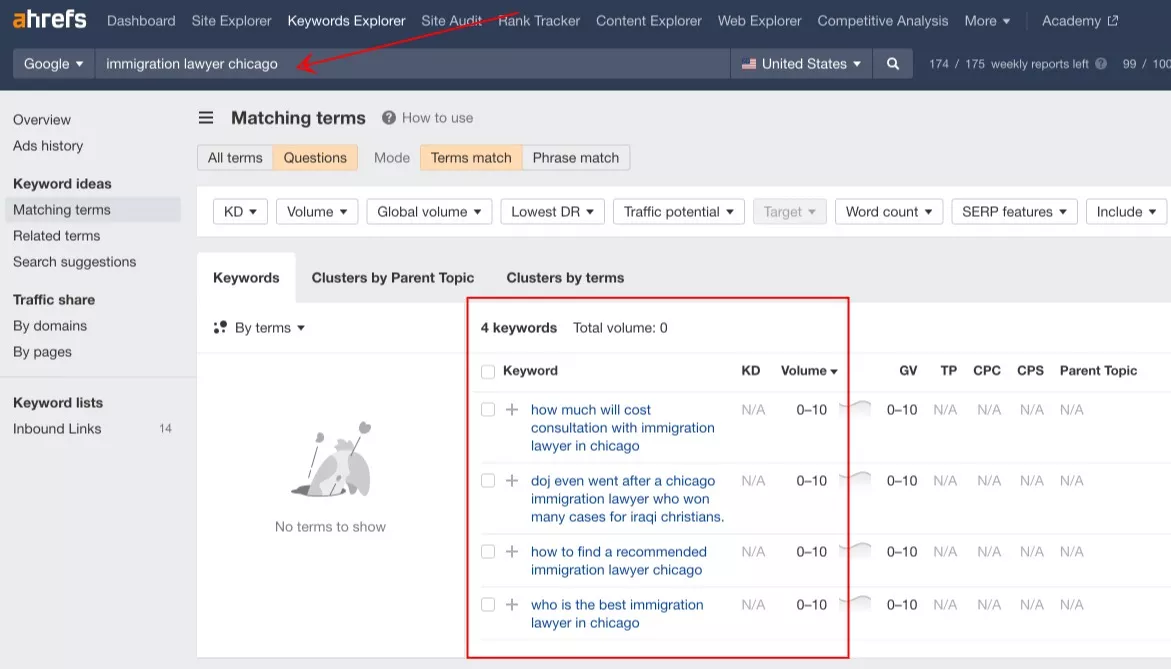
Though most of these keywords have low search volume, the traffic you’ll get from ranking for these long-tail keywords will pile up and help build your site’s topical authority.
Steal Traffic From Other Immigration Lawyers Websites
Reverse engineering your competitors’ sites would reveal keyword insights you can also rank for (and hopefully steal the traffic from by outranking their sites).
Enter Competitors’ Domain in Ahrefs’ Site Explorer - Organic Keywords. Then, filter results by “Top 10” and Keyword Difficulty of 15.
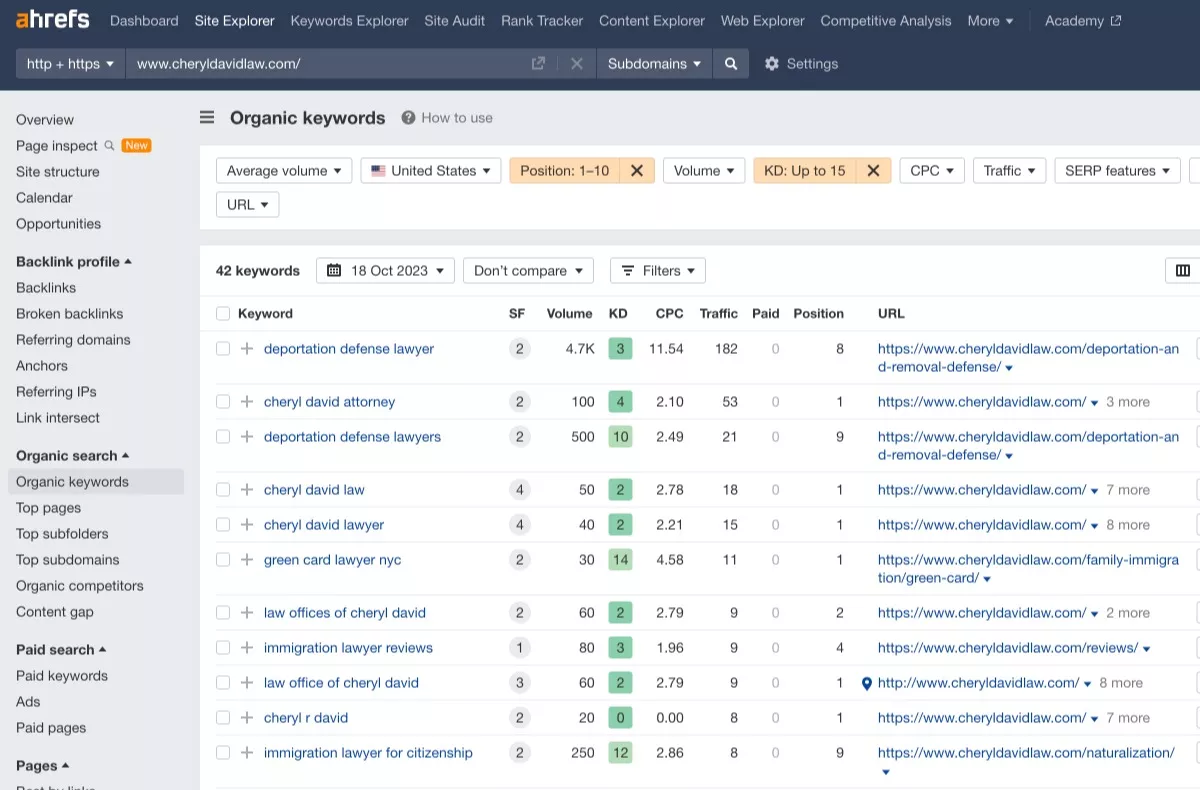
Here are interesting findings from this keyword research exercise:
- More specific keywords to target additional landing pages (deportation defense lawyer, green card lawyer NYC, fiancée visa lawyer New York, removal defense attorney)
- Informational keywords to attract more traffic (e.g., “k1 visa did not marry”).
- “immigration lawyer reviews” - you can optimize your client reviews page for this keyword.
I’m only scratching the surface. There are a couple of more keywords you can find from doing competitor keyword research.
4. Localize On-page SEO Elements
On-page SEO for local legal services needs to reflect the target geography in the following fields:
- Title tags - indicate what your immigration law firm is serving.
- Meta descriptions - help increase CTR, so better mention your target location.
- H1 text - the main headline text of the page must be marked by the H1 HTML tag.
- Body text - mention the country, city, or area you’re targeting in the body of your content as you naturally write the content.
- Entitles and LSI - include variations of keywords and entities (businesses or personality names) when appropriate in your content copy.
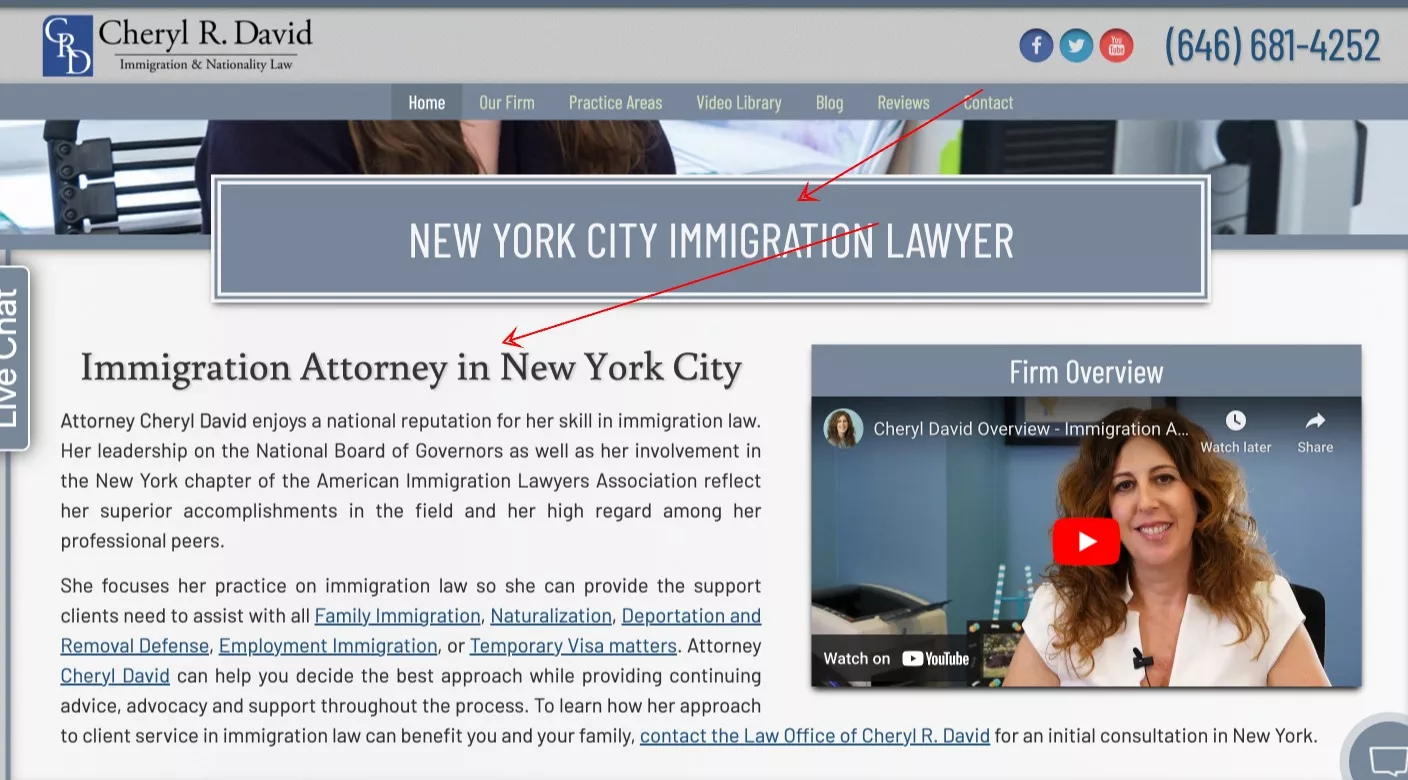
5. Localize Content
A big chunk of local SEO is crafting localized content targeted to an audience within a geographic setting.
Write content that is applicable and specific to your target area. For instance, if you’re writing content to possible clients' questions, such as, “How Long Does It Take to Get a Green Card Through Marriage?”, mention entities specific to your target location.
You may include the policies, laws, and culture of that city. This way, you send rich signals to Google that you are relevant to that location.

6. Build Foundational Links
One big mistake most SEOs make is acquiring inbound links without building the right off-page trust signals to their websites.
Before doing guest blogging, resource page link building, or digital PR, begin with the basics.
Social Profiles
Place your links on Facebook, Twitter, Instagram, and other social sites to initiate link building campaign.
Optimize profiles by filling out all information, uploading images, and posting content on these social platforms.
This is what a real company does with their social accounts, so gaining trust signals by building your social profiles.
Get Listed on Legal Directories
Legal directories tend to rank for your target head terms like “immigration lawyer in New York”, as these pages satisfy the search intent of providing more options for legal services to search users.
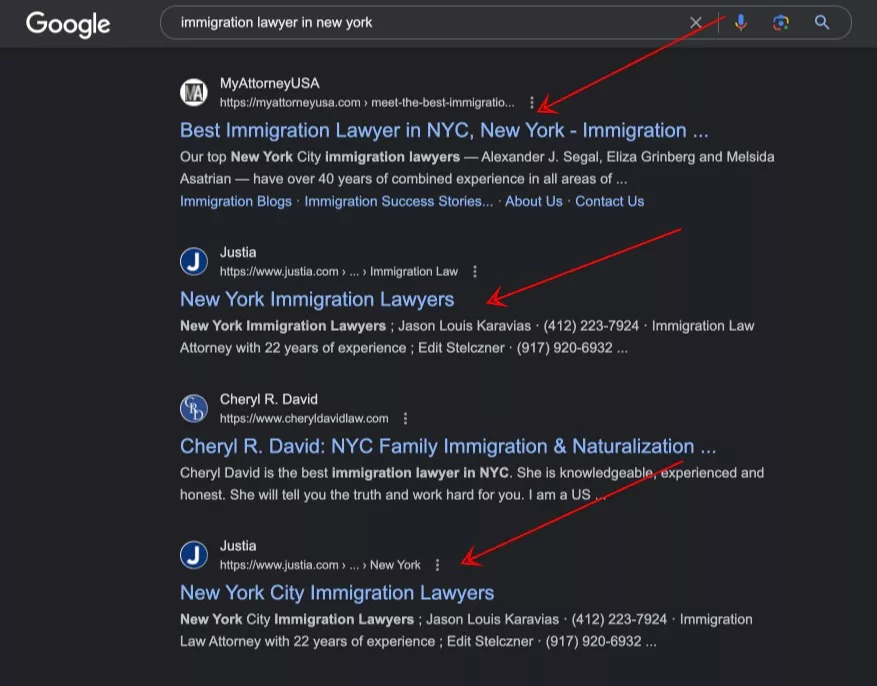
With the recent Google algorithm updates, you’ll notice two or more pages ranking from the same domain. For this Google’s SERPs for “immigration lawyer in New York Google Search”, you see two pages from Justia ranking for the key phrase.
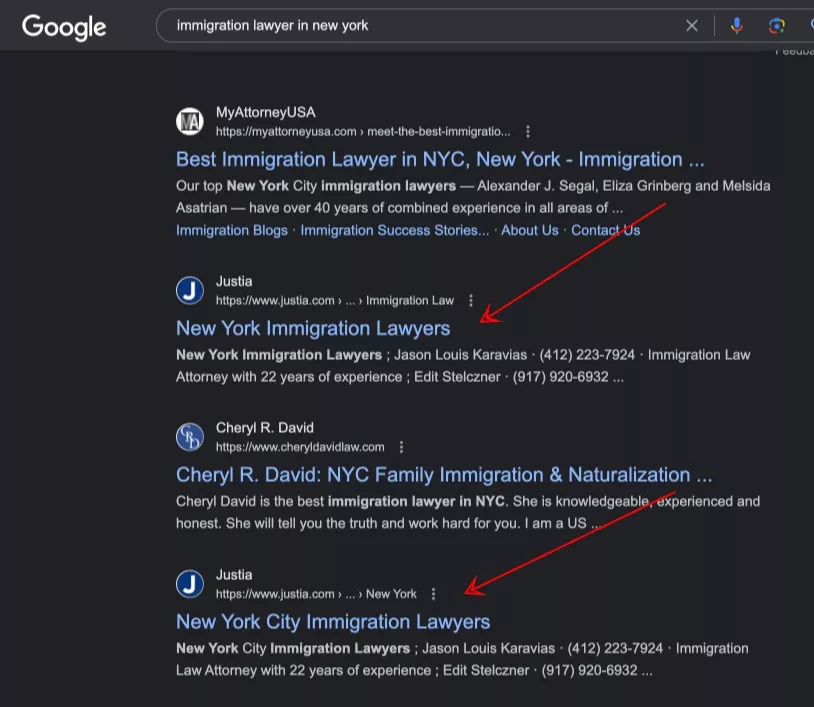
Though these SERP patterns may change, being listed on legal directories is a colossal advantage that helps improve your brand's visibility for people directly visiting these directory sites.
While these directory links help improve the ranking power of your website.
Resource Lists
If you are part of any advocacy groups or non-profit organizations, they may have specific resource lists where your immigration lawyer site can be listed.
Reach out to them and get direct link placements from their dedicated pages for attorneys.
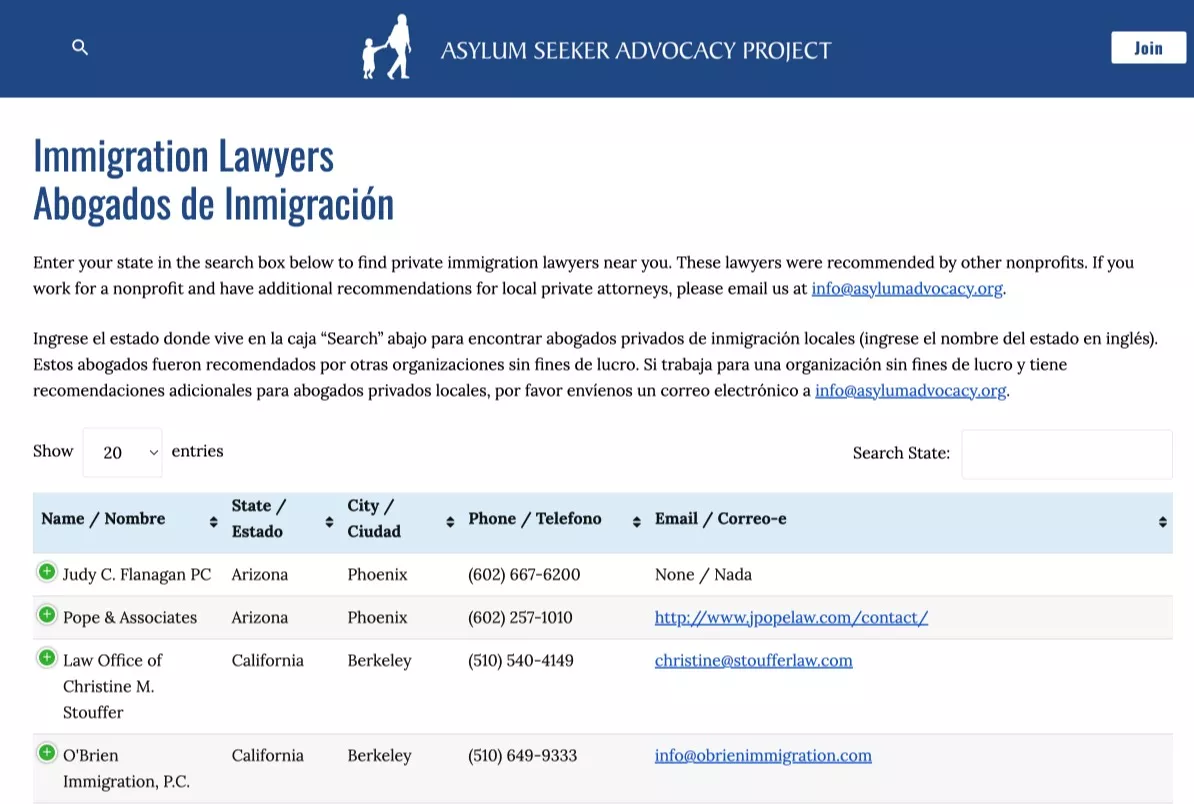
Advanced SEO For Immigration Lawyers
If you have covered the SEO basics, there may be a few optimizations you can make to your legal site to dominate rankings for your target local keyword. Here are some of the legal SEO strategies you can test.
Steal Link Building Ideas From Immigration Lawyers in Bigger Cities
You may have noticed I’m using immigration lawyers from New York as my examples. The reason is that most optimizations, including link acquisition, are heavily invested in these bigger cities.
Steal the best ideas for link building from immigration lawyers in bigger cities like New York, Los Angeles, and Chicago.
You’ll find creative link building ideas that aren’t only applicable to their dedicated cities but for your geographic area, as well.
Replicate their link building strategies to acquire local links for your legal site.
Execute Digital PR Campaign
Legal isn’t a sexy niche. However, there are ways to utilize legal brand stories that would allow you to attract contextual links from local newspapers and authoritative publications naturally.
Take a look at this link from the New York Times, which one immigration lawyer was able to acquire.
The expertise of the lawyer on the topic becomes the reason for journalists to cite him in their content.

Digital PR isn’t scalable, particularly for legal space. However, if you can partner with legal experts if you’re doing SEO for legal clients, acquiring links your local competitors in your space can’t build would be a creative strategy.
Conclusion
SEO for immigration lawyers helps improve your branding visibility and increase quality leads looking for legal services. Contact us today if you need help with link building or full SEO campaigns for law firms.
How to Get The Strongest Backlinks To Your Website?
The strongest backlinks can immensely impact a site’s online rankings in Google’s SERPs.
Even if Google announces that links are no longer the top three ranking signals, we’ve seen the power of links in ranking category pages and SaaS product pages, with our link building services, from nowhere on Google’s SERPs to dominating the top spots on page 1.
Without quality content, links can only do so much. With constant updates from Google - core updates and Helpful Content updates, you can’t simply build links without the proper foundation. It has to complement the quality of content you publish on your site.
That’s why we strongly advise SEO clients to build their technical SEO and on-page SEO and consistently publish quality content that satisfies users before diving into link acquisition (this warrants another blog post).
In this guide, we dive into the best backlinks to acquire and how to get them.
What Are The Best Backlinks To Get For Your Website?
The level of potency of a backlink depends on many factors, but as general advice, you should be getting a link considering these four critical metrics.
Relevance, Trust, Authority and Branding
Relevance
Acquire links from websites that operate within the same niche or website as you own. If your brand sells coffee machines, aim to get links from coffee or food blogs.
Some niches only have limited link prospects to contact, so that’s when you consider other degrees of link relevance. This means you widen the scope of link prospecting to tap into other areas outside your niche that are still topically relevant to your site.
 From our example, you can consider health and fitness blogs with relevant food and coffee articles (third and fourth degree of topical relevance).
From our example, you can consider health and fitness blogs with relevant food and coffee articles (third and fourth degree of topical relevance).
Trust
Majestic SEO’s Trust Flow is a good metric to use when checking how trustworthy the site is. Basically, it helps determine how closely the site is linked to seed sites manually handpicked by Majestic. These seed domains are legitimately reputable, and getting links from them are sites that are truly deserving.
Aim links from sites with a Trust Flow of 15.
Authority
Link intelligence tools like Ahrefs, Moz, and Majestic invent authority metrics. These metrics are based primarily on the quality and quantity of links pointing to its pages. And so, the more link equity a website has, the more it can pass to others via external links.
For link building strategies like guest blogging, target sites with at least an Ahrefs Domain Rating of 25 or above or Moz Domain Authority of 30 and above.
Remember, I used arbitrary numbers for this benchmark. Narrow your selection depending on the authority of your site.
As general advice, you should get links from sites with higher DR than yours to keep climbing up for bigger authority signals.
Branding
We’ll cover more on this in our section later on, getting links from entities you want your brand to associate with.
But you have to consider the type of sites you’re engaging with. Are these domains just contacts to get links from, or could they help widen your business's reach (or be potential clients or suppliers for your store)?
How to Build The Strongest Backlinks?
1. Check Your Best Backlinks
The best place to initiate link building is to look at your site’s backlink profile. If that’s an SEO client, they may have a couple of strong domains pointing to the site that you or their team may not be aware of.
Enter the website URL on Ahrefs Site Explorer to get an overview of their backlink profile.
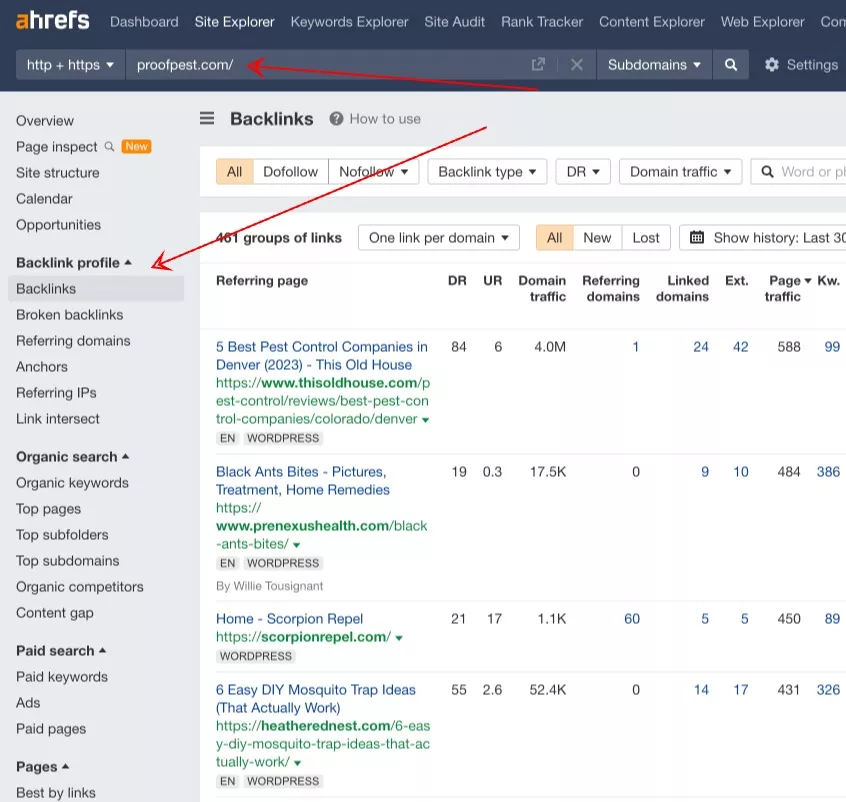
Identify Strong Referring Domains.
The best backlinks come from domains that linked to you in the past. Given either they trusted your brand, you have relationships with them, or they’ve perceived you as an authority source for content - either of these three is a good reason to get another link from their website.
Use Ahrefs filtering options to find these strong domains. Backlinks - Dofollow - DR (50+).
These strong domains may include:
- Authority publications
- Niche websites (e.g., Daily News Coffee).
- Top niche directories and citations
Getting constant editorial links from high-traffic websites drives additional referral traffic to your page.
Leverage Linkable Assets That Work.
If you’re working on a mature website, you may see existing linkable assets attracting links. These pages have targeted a linkable audience (“group of linkers”) and have a proven content type you can replicate for your next content.
To identify these linkable assets, go to the “Best by links” section in Ahrefs Site Explorer. These pages are sorted from highest to lowest number of referring domains, so you know exactly which asset has attracted the most backlinks.
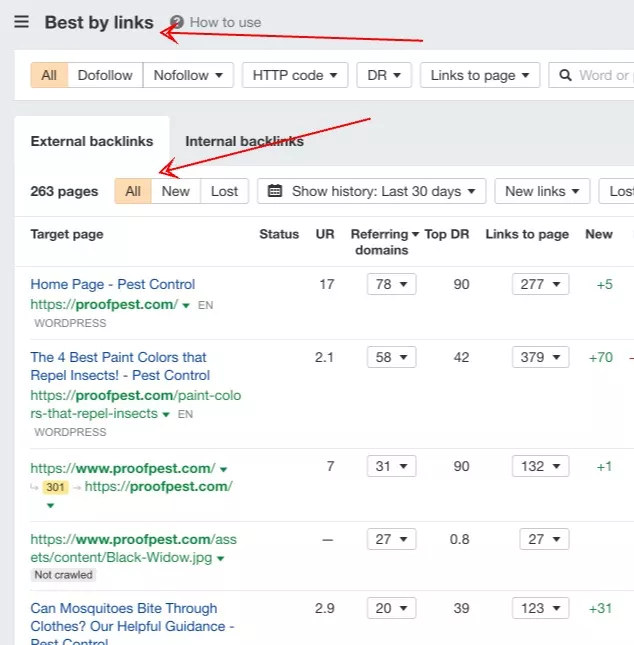
Another tip here is to look at newly published pages with fresh links. Given that they’ve recently updated the page, creators of these pages are more likely to be receptive to email outreach.
It’s also a good way to get a radar of which publications/blogs in your industry are participating in natural linking.
Determine Anchor Texts To Use.
Find keywords your site is currently ranking for. This is where you should start, as Google initially sees your site relevant to these industry terms.
Go to Organic Search - Keywords. Filter the results from position 6 to 20 and a search volume of at least 100.
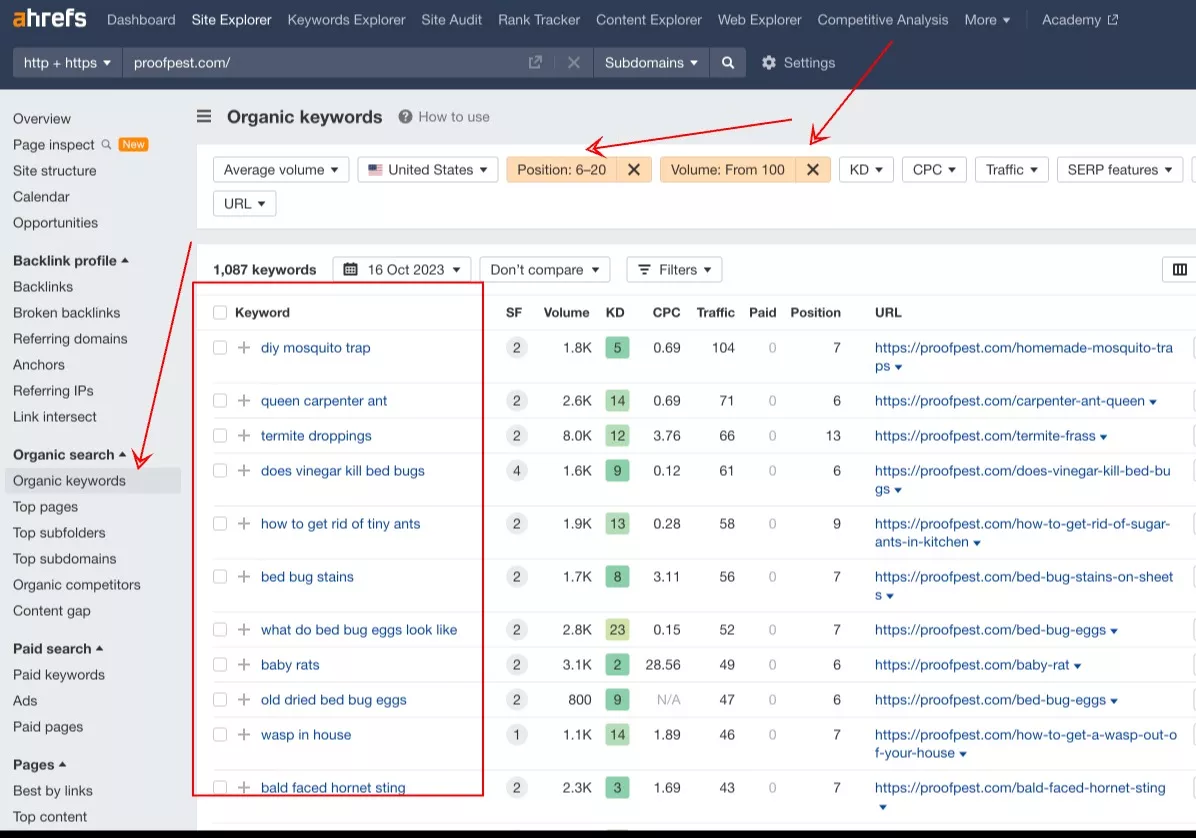
You can use these keywords as anchor texts for pages you’re trying to build up from lower page 1 to the top 3 spots of Google’s SERPs. You might only need a few more links to improve these pages’ rankings.
2. Reverse Engineer Organic Competitors
Sites currently ranking may have a proven link strategy that works for them. Reverse engineering their link profile may open new insights and link opportunities you can replicate (or take advantage of) for your site.
If you don’t know your competitors yet, enter your site's URL on Ahrefs’ Site Explorer and choose Organic Search - Organic Competitors.
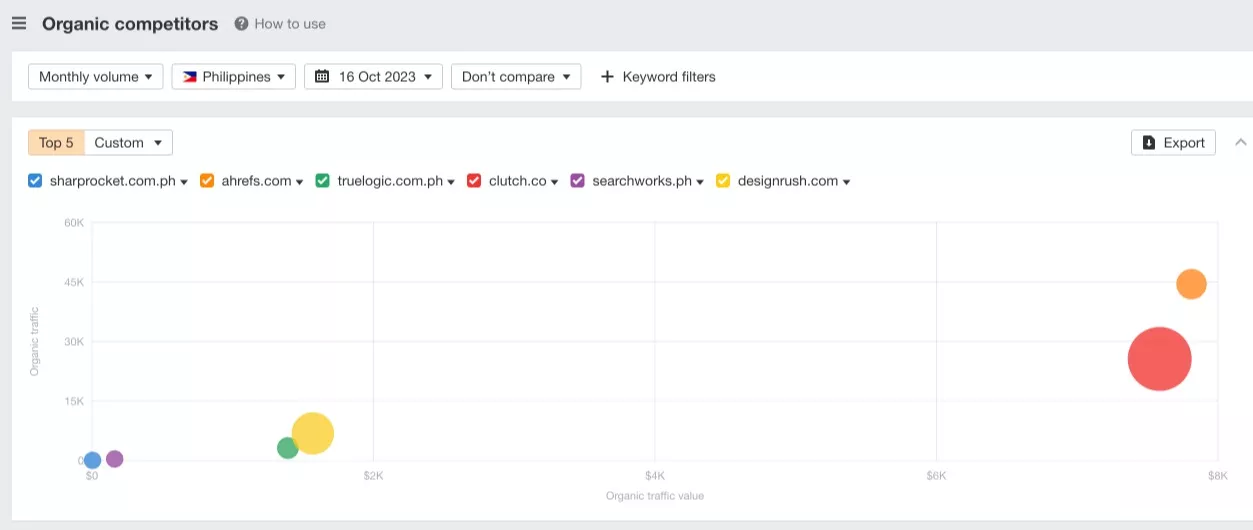
Circles indicate the number of pages your competitors have published on their site. Placements of these circles show their respective organic traffic and value. The closer they are to the right section, the bigger the traffic and value the site has.
Ahrefs is good at identifying your site’s organic search competitors. But if you want more in-depth, you can simply use Google to find top-ranking sites for your head terms.
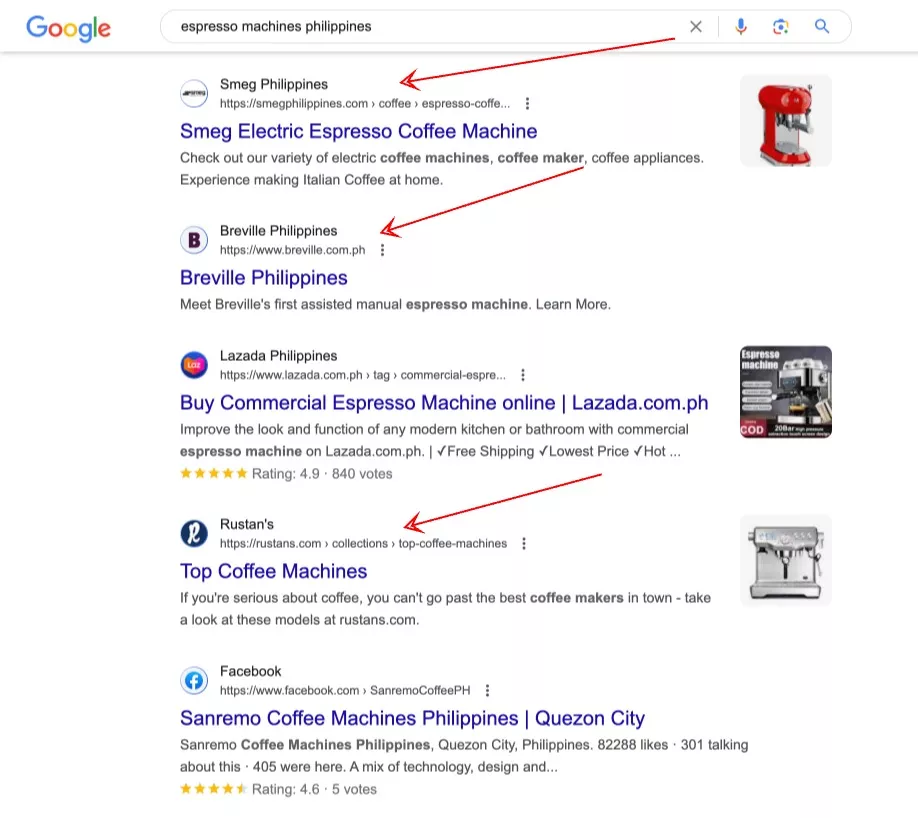
Now that you have a list of organic competitors to analyze let’s see what value you can get from them.
Get Insights For Content Types and Link Patterns
Different industries may have distinct patterns of natural linking. You’ll be more likely to observe it based on the type of blog posts or pages that are mostly linked to your site.
Enter the URL of one of your organic competitors. See “Best by links” and set “3” for “New links”.
Look at the pages receiving new links for the past days/weeks. It may indicate the freshness of content and its linkability. These pages that constantly attract new links can inspire topics for your content.
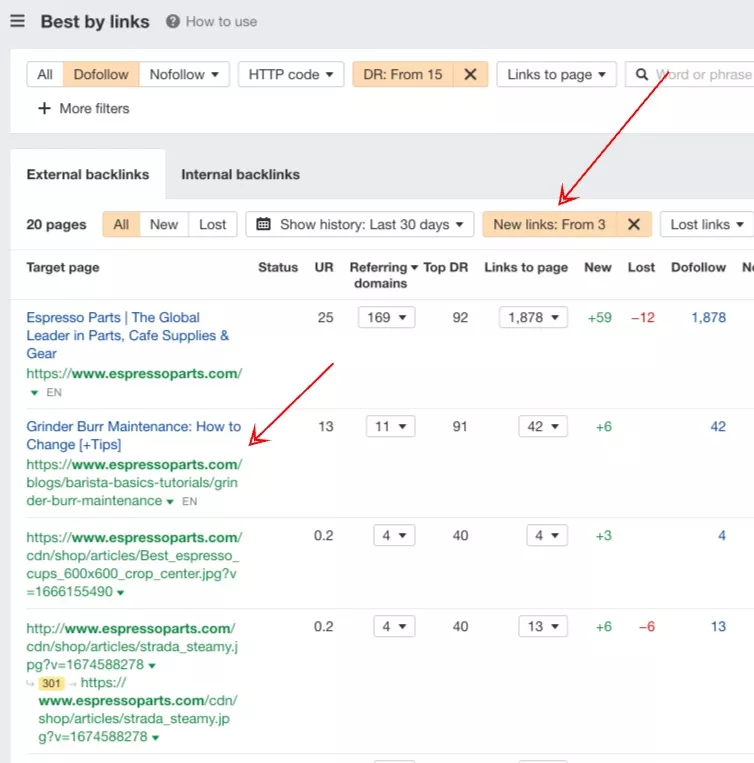
For instance, I’ve noticed this blog post from Espresso Parts that has received an additional 6 links for the past 7 days - Ahrefs’ recent indexed links (though Ahrefs may not be indexing links real-time, it’s still a good tool to monitor fresh links).
Checking the page’s organic performance indicates they’re ranking for keywords like “espresso not coming out”, or “troubleshooting espresso machine”.
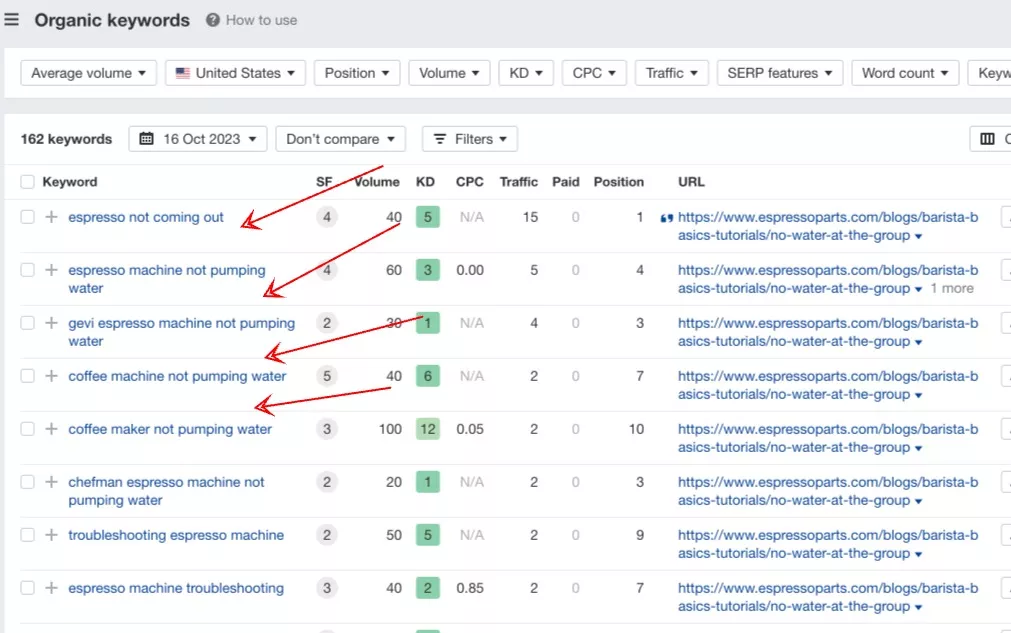
I know for a fact that most baristas and cafe owner's greatest challenge is in the troubleshooting part of coffee brewing using espresso machines.
Now, instead of randomly picking topics, I could create a series of troubleshooting guides showcasing how baristas can fix technical issues with their espresso machines.
By checking competitors’ new linkable content, you’ll find new topics to create for your blog that are likely to attract links when they rank in Google’s SERPs.
Formulate a Link Acquisition Strategy Based On Available Link Opportunities
This is a common tactic in getting strong backlinks to your site. Checking what types of links and how they acquired them can help formulate a link strategy that best fits you.
Run your competitor’s domain using Site Explorer. Go to Backlinks - Referring Domains.
Use the numbers I mentioned earlier to assess your site’s link profile (DR60+, Dofollow, Domain Traffic 5K).
This would require a manual approach, checking each inbound link with its anchor text and destination page (what page is it linking to).
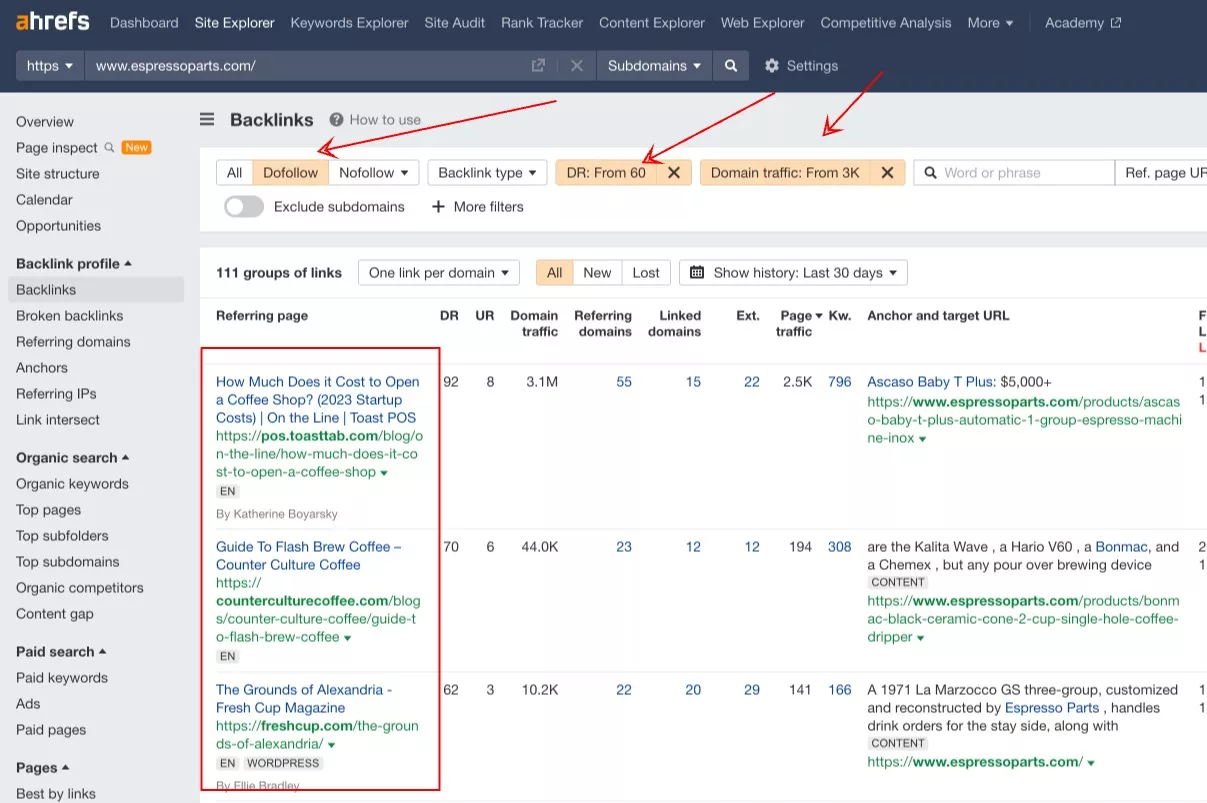
From the given example, I could create new ideas from a competitor's strongest links:
- These product links from Toasttab, CounterCulture Coffee, and Eater result from ranking product pages and Espresso Part’s reputation in the industry. It could also be because of digital PR or the first to launch a new product that attracted buzz from niche product review writers. This sparks insights into how we can leverage new products’ to garner attention from high publications, resulting in brand/product mentions (and potentially links).
- Link on The Wicked Noodle’s National Cappucino Day - are there any celebration or seasonal days in your niche when you can develop creative digital PR campaigns?
By assessing your competitors' exact links and link types, you can get insights into the specific link building techniques currently working in your space. You can only observe nuances in link acquisition through competitor link analysis.
Steal Best Ideas From Similar Businesses in Other Cities
If you’re doing local SEO, the best way to inspire new link building strategies is to steal from similar businesses in other cities.
Bigger cities like New York typically are competitive in search, and you’ll find that most local businesses in those highly populated cities are predominantly investing (or pretty creative) in acquiring local links for their businesses.
And by reverse engineering what they’ve done, you’ll find creative ideas you can apply to your local business.
Do a Google search for niche-related local businesses in one major city.
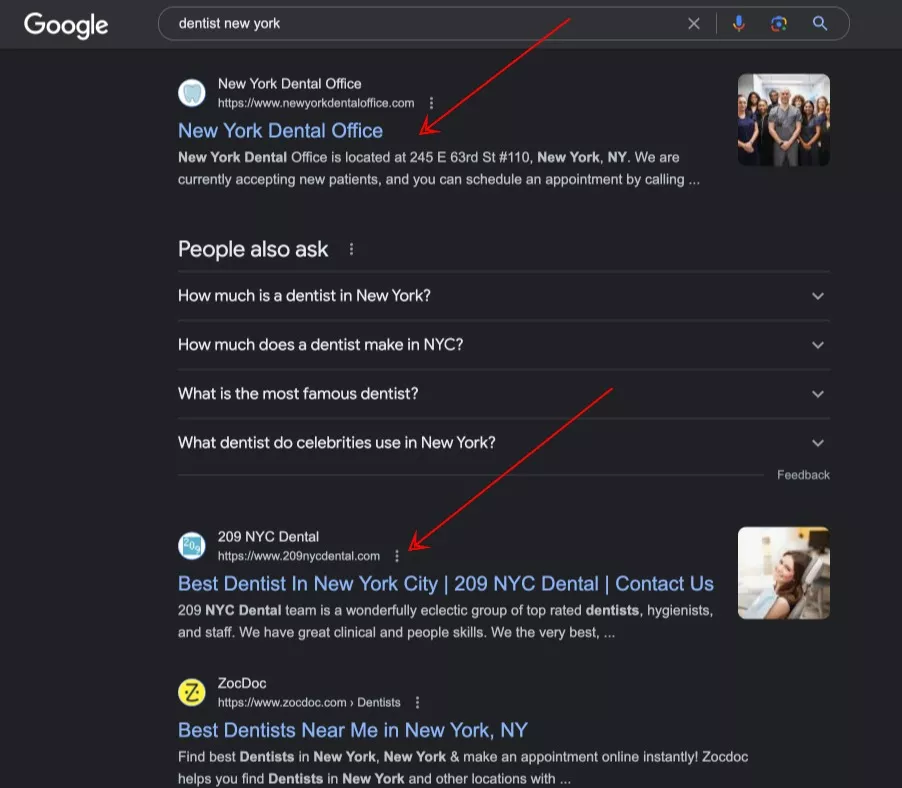
Extract their best links using Ahrefs. Repeat the same process for other ranking local businesses similar to your brand.
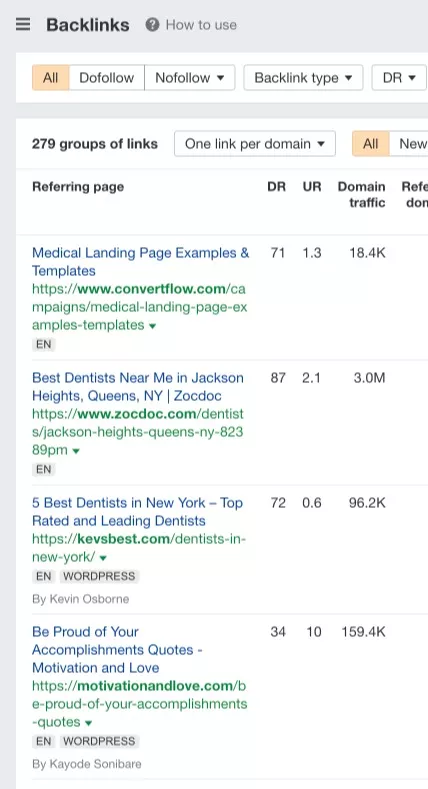
Then, investigate how they have gotten those links. Scan each link (or check manually) to find any page where you could find something interesting.
Here are some interesting findings from doing local competitor analysis:
- How America Started Brushing (for local dentists in NYC) - I could create historical guides for my other local businesses.
- NYMag link (for a flower shop in NYC) - do I have some brand stories I can leverage for a local digital PR campaign to get mentions/links from local newspapers?
- Our Favorite Florists and Flower Shops List (for a flower shop In NYC) - prospect for hotels that curate a list of X businesses in location?
I’m only scratching the surface, and I guess there are other link approaches you can find when you see similar businesses in major cities. Test in your local site and scale as you acquire links.
3. Automate Link Building Via Ranking For Research Queries
Manual outreach and follow-ups aren’t enough. Most SEOs doing link building outreach (even our agency) see artificial link building via outreach becoming more difficult, as most publishers now have higher expectations when they read outreach emails.
This probes for alternative ways of getting stronger backlinks to your website to automate link acquisition.
The best way to automate links is to rank for research queries or any informational keywords content creators search for when looking for additional references or citations.
During their research stage of content creation, writers seek to expound certain words or information on their page. And if they find a page covering the topic comprehensively, they’ll link to it from their own content.
Add questions that people might use when looking for sources to support their subtopics.
Place FAQs as part of subheadings and supporting details in your content instead of putting them separately at the end of the article.
I’ve noticed Google could easily understand now what your content is about based on how you properly structure your content.
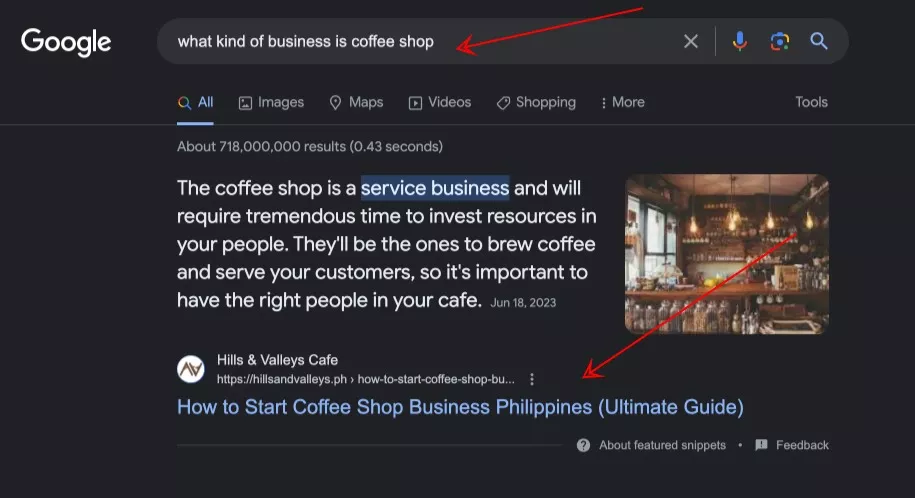
Build artificial links to push the ranking power of these pages.
If your site has a significant domain authority, it is easier for you to rank new content for research queries. For newer sites or lower authority sites, it would require manual link building to push rankings of your page.
This is when you do manual link building using guest posting, broken link building, resource page link building, and niche edits to acquire contextual links to informational content.
You can also build internal links to your linkable asset from your site’s highly linked pages (pages with the most inbound links) to pass some link equity to your info page.
After properly optimizing your content and getting some artificial links, you’ll start ranking for research queries (or their variations) and now attracting natural links from other content creators.
4. Strengthen Brand Through Entity Stacking
Some powerful backlinks can only be acquired through relationships. Your competitors can only replicate these links if they have similar connections with those giving you links.
Start building rapport with high-level entities (sites with which you want to associate your brand). This sends off-site signals to Google that your site targets a specific area of expertise (niche), which helps associate your domain with your target words and phrases.
Build social profiles, citations, and local & niche-specific directory links.
Foundational link building is when you start building links that help send relevance and trust signals to your site (off-page).
Considering sites take time before Google trusts their domains, settling the basic backlinks (but strong ones) is vital.
Foundational links include social profiles, citations, and local niche-specific directories.
Build links like what a typical business does. A legit business will create social profiles like (Facebook, Twitter, Instagram, etc..) fill out all the information on their profile, and use the platforms to promote their content/brand.
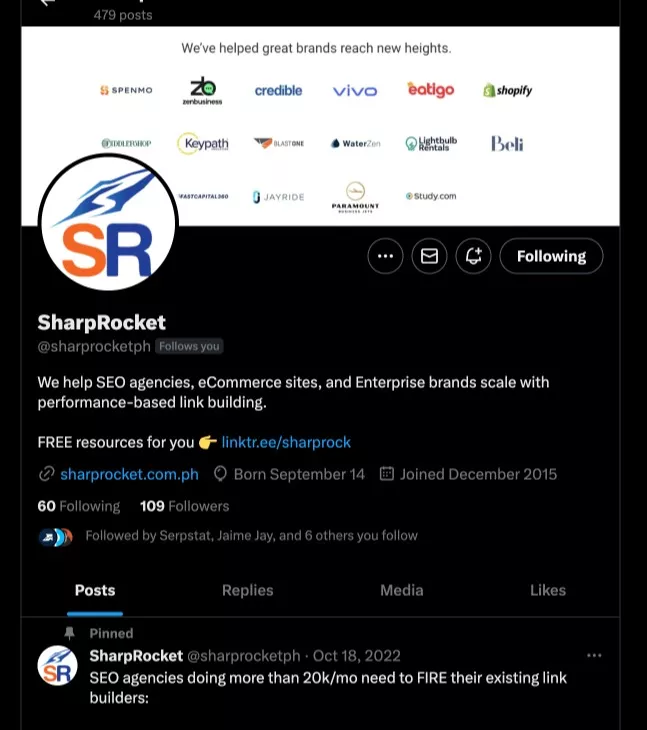
Citations are great in promoting NAP consistency, a strong local ranking factor to help your site appear on local map packs.
Develop content partnerships with non-competing blogs.
In bringing value to your email outreach campaigns, seeking mutual benefits for both parties is essential.
The last thing you want to do is pressure your link recipient to give you the link you want without the person reading the value in your email. You should always answer the question, “What’s in it for them?”.
For instance, I’ve collaborated with a coffee blogger to mutually publish content assets on both blogs (not duplicate content). We build reciprocal links, linking to their content from my statistics page and their page to ours.
An interesting angle here is that we don’t compete with each other. My coffee blog is for lead generation purposes (driving inquiries to our B2B franchise services), while his blog is focused on promoting affiliate products and programs.
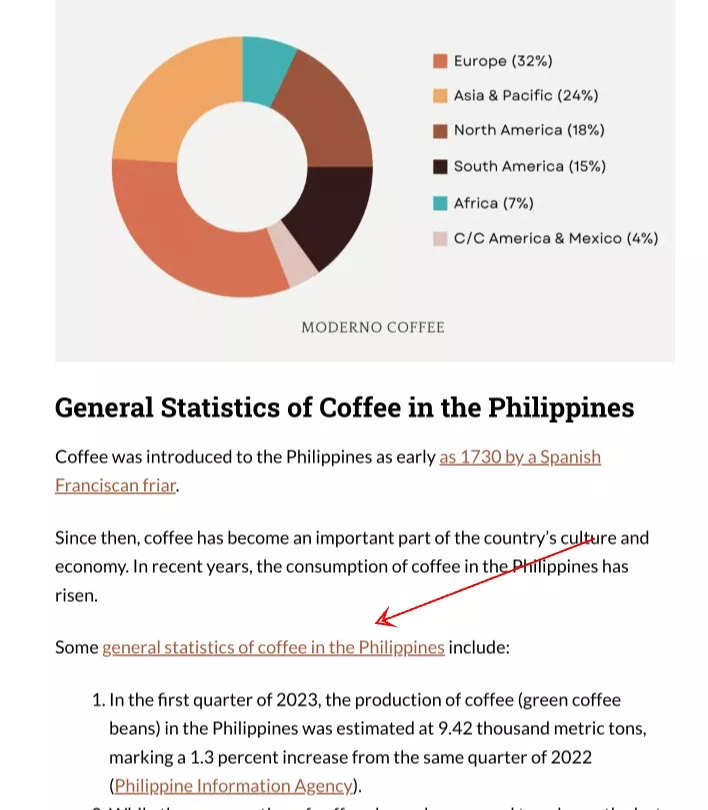
Think of the type of non-competing entities (businesses and individuals) that you’re likely to achieve mutual benefit by co-promoting each other’s content assets.
This is what regular businesses do offline, and if you can utilize the same principle online, you’re likely to succeed in getting stronger backlinks to your brand.
Target legit business sites as link prospects.
The game has changed in link building. Most niche site bloggers and content creators require initial payment in exchange for links (i.e., link buying is dominant these days).
One way to differentiate and still acquire links without incentivizing webmasters with money is to help legitimate business sites struggling to get more website traffic.
A typical business website doesn’t know much about SEO and what it can do for its site - an angle you can use in your email outreach campaign.
Instead of merely offering short-term incentives (i.e., money), you provide to do the work for them.
One way is to send quick reports of industry keywords (or one topic cluster of keywords) they can target for their blog content. Add some suggestions for basic on-page optimization they may have missed doing on their site’s key landing pages.
All these may take 10 to 30 minutes of work but could result in a contextual link to your site.
By providing so much value to business site owners (some of whom don’t have their SEO specialists working in-house), you can request a specific anchor text and link placement that could enhance the value of links you’ll get from the site.
That’s it.
If you have questions, follow me on Twitter @venchito14 and Linkedin.
SEO For Lead Generation: How to Drive $5,000 Leads To Your Website
Generating leads for a service/product is one of the lucrative business models in today’s digital marketing.
Being #2 of the top challenges for founders in 2023, marketing that drives ROI for the business in traffic, leads, and sales is one solvable by the best driver of qualified traffic - search engine optimization (SEO).
By the end of this guide, you’ll be able to apply SEO for lead generation in your business, with practical examples to show you how it works.
8 SEO For Lead Generation Techniques
1. Think like a customer.
Effective marketing is understanding customers' pain points, challenges, and problems so you can craft a compelling message they’ll best resonate with.
The same is true with SEO.
Think like your customer before thinking about how to attack technical SEO, on-page SEO, and link building.
The key is to dive deep into how your customers think when doing search queries on Google. Through then, you’ll be better at crafting a business-centric content strategy instead of relying purely on SEO keywords irrelevant to your business.
For instance, one of my businesses is corporate training and speaking services.
By focusing on business-centric content strategy, I can drive 30-50 qualified leads to my training business, worth $500 for each qualified lead, as I’m getting paid to speak at $500 per hour.
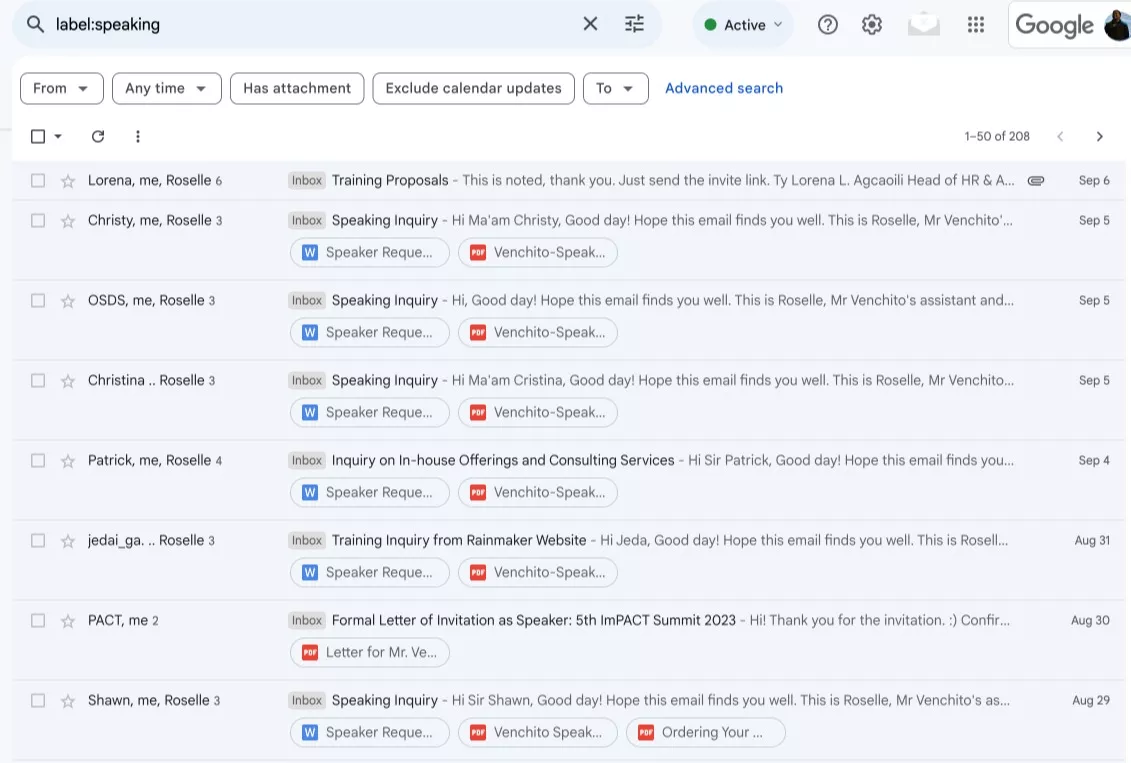
If I’m only thinking about SEO keywords, I could have published pages for “speaking services Philippines”, do basic on-page SEO, and hope it gets qualified leads for my business.
Instead, I asked them how they would find out about their service provider during my sales calls and personal interactions. What I noticed is that they don’t start with generic search queries such as “public speaking services Philippines”, but instead go very specific with “leadership speaker Philippines” or “growth mindset speaker Philipines”.
I created dedicated landing pages for each of these niche terms, some of which have zero to low search volume.
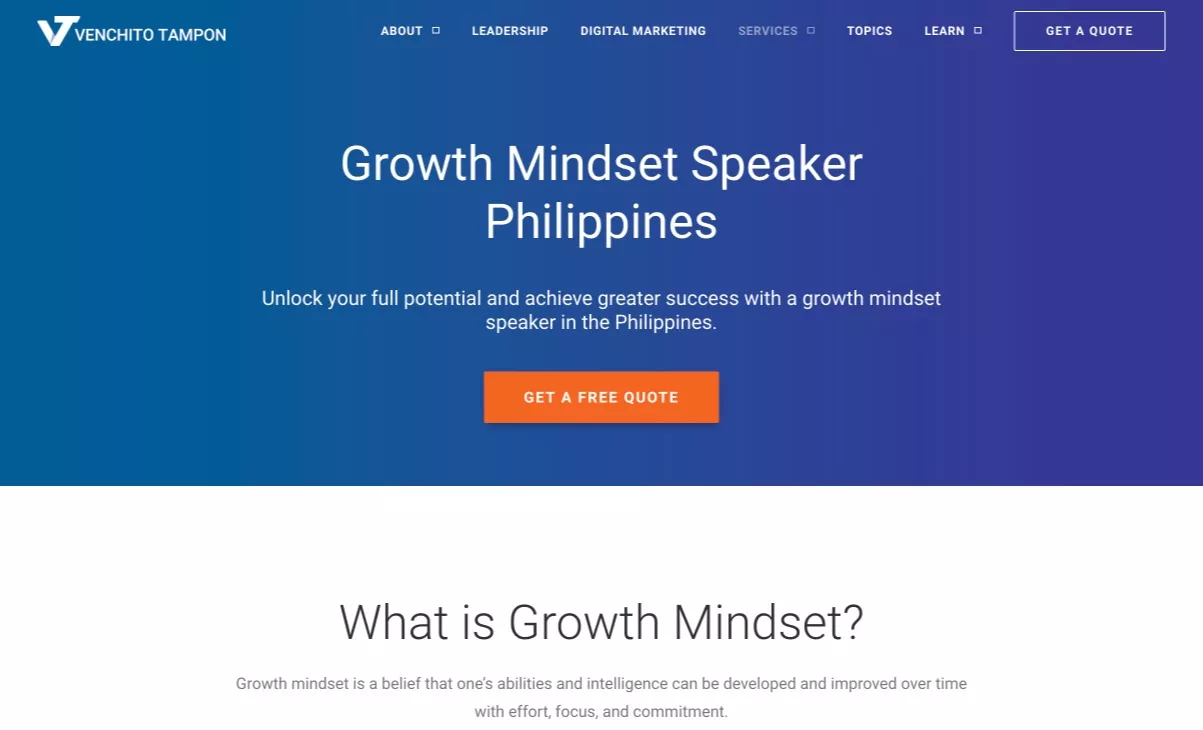
Low search volume keywords can drive qualified leads (in aggregate), given that they’re highly targeted for search users with transactional intent. Even more important is that it builds topical authority for your website, as it covers a wide range of topics your competitors’ sites don’t intend to publish on their blogs.
Talk to your sales team. Ask about your client. Be thorough in getting your customer's needs; you will unveil enough insights to start your keyword research.
The best keyword research methodology starts from how customers type their search queries, not from proprietary SEO tools.
If you understand how your customers think and behave, you’ll be surprised at how many keyword insights you can generate.
2. Calculate Lead Value
Understanding how SEO can make you more money before executing all SEO recommendations to optimize your site and rank it for your commercial keywords.
This involves calculating how much one qualified lead is worth for me.
For instance, our coffee eCommerce site operates like a B2B sales process. Instead of a typical buying process where customers pick their product, add it to a cart, check out, and deliver the physical product to them.
We’ve found that 100% of our customers initially ask for a “quotation” or “proposal” that fits their coffee machine requirements.
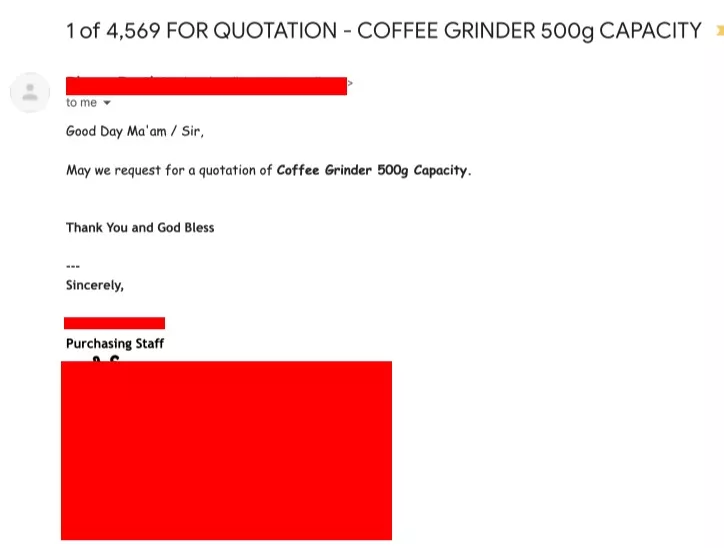
Given that each coffee machine costs between $500 to $7,500, most food & beverage personnel or cafe owners must first consider the specs and technical know-how of each purchase.
Our buying cycle takes a little longer than a typical eCommerce website.
This means that the value of lead on our end is much higher, ranging from $1500 to $2500. Assuming we can close 20-30% of all leads.
To calculate Lead Value, you can use the following formula:
Lead Value (LTV) = Average Sale Value × Average Number of Repeat Transactions
× Average Retention Time (in months or years)
Where:
- Average Sale Value is the average amount of money a customer spends during a single transaction.
- Average Number of Repeat Transactions is the average number of times a customer purchases within a given period (e.g., a month or a year).
- Average Retention Time is the average length of time a customer continues to buy from your business.
By calculating lead value, you can prove the marketing investment for SEO services and its direct impact on leads and sales.
3. Drive conversions from TOFU content
Top-of-the-funnel content is mainly created to rank for informational keywords and drive organic traffic from people searching for answers to industry questions.
Examples of these search queries are:
- why coffee machines are expensive?
- how do coffee machines work?
- how long do coffee machines last?
This content isn’t intended to sell the audience on a product or service but to educate, help, and answer common questions or pain points.
There is a way to drive direct conversions from TOFU content.
We did this to one of my businesses - a coffee shop franchise, where we drive significant leads every month.
Here are some quick steps we made.
Sticky Widgets
You can include a sticky widget in your blog post section where it is mainly visible to readers.
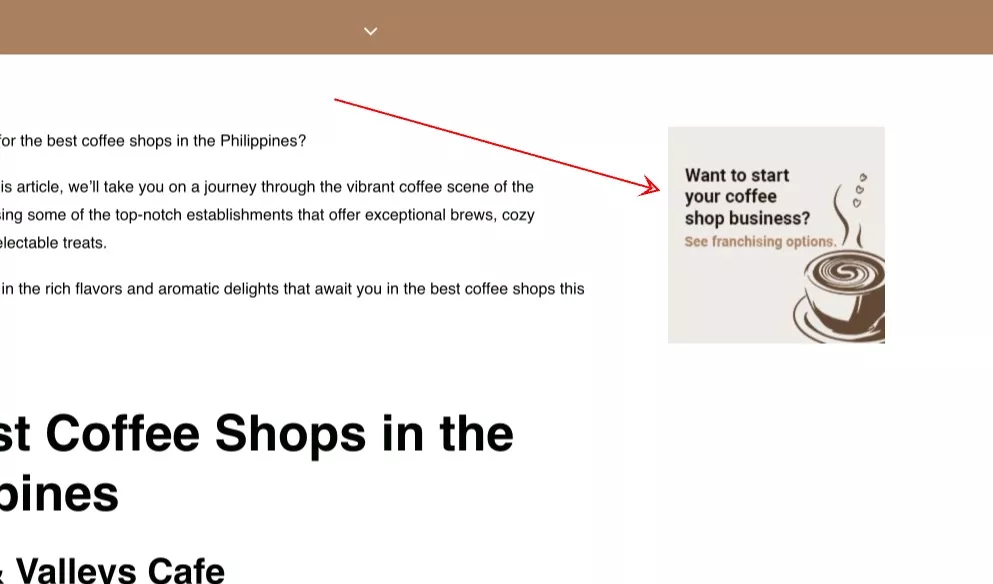
It is a secondary objective to drive conversions. You still want web users to be satisfied with your informational content (it’s the very reason you created it in the first place).
But just as they begin to consume the value, you build initial trust. And this trust can later translate into sales.
Strategic Internal Link Placements
Most SEOs do internal linking to drive link equity to their other important pages. While that’s the main objective of internal linking, it can also help with helping users navigate to different places on your website.
For example, in one of the sections of my leading guide on starting a coffee shop business, I added an internal link to my coffee shop franchise.
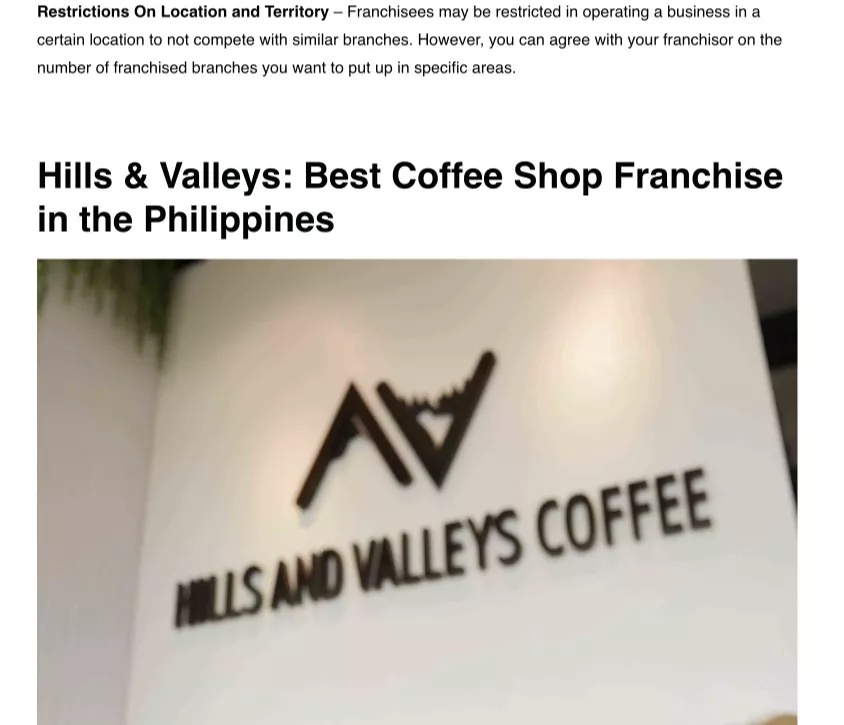
Not only does it pass link equity to my franchise page, but it becomes more visible for my potential clients to see it directly on their informational page.
Highly Visible Contact Information
For industries with a high customer touch, the easier it is for your readers to contact you, the more likely you’ll increase your leads.
What I did to make contact information sticky at the top bar. Web visitors can contact us via phone or email without visiting our contact page.
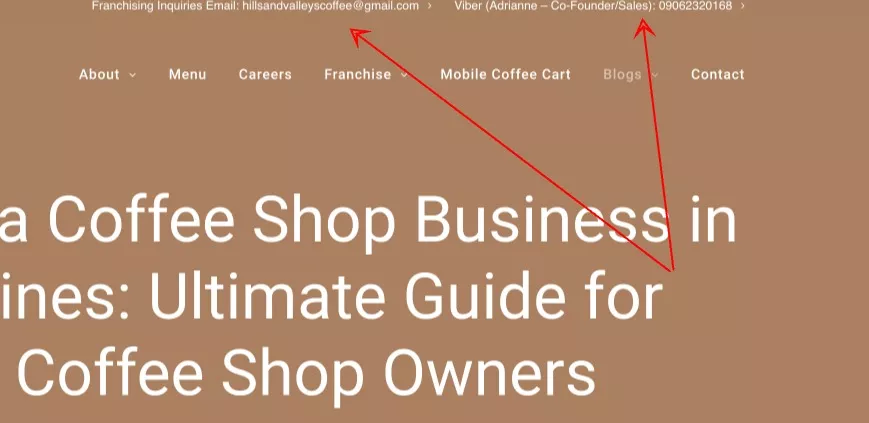
4. Steal traffic from competitors’ branded keywords.
If a website is new, it doesn’t have much authority to compete against its competitors. Therefore, you don’t see significant traffic in the first few weeks after launch (case: sandbox).
But as you create a consensus of authenticity from trusted sources like citations, socials, and profiles, you allow Google to favor traffic on your site.
One of the best ways to get early traffic for your new website and generate qualified leads is to bank on your competitors’ keywords.
Topical competitors are currently ranking for niche keywords (even their own branded terms) that you can use to steal traffic for your site.b
For instance, I’ve created 20+ dedicated landing pages targeting all competitors’ keywords for my coffee franchise.
These pages offer an alternative option to our Hills & Valleys Cafe Franchise.
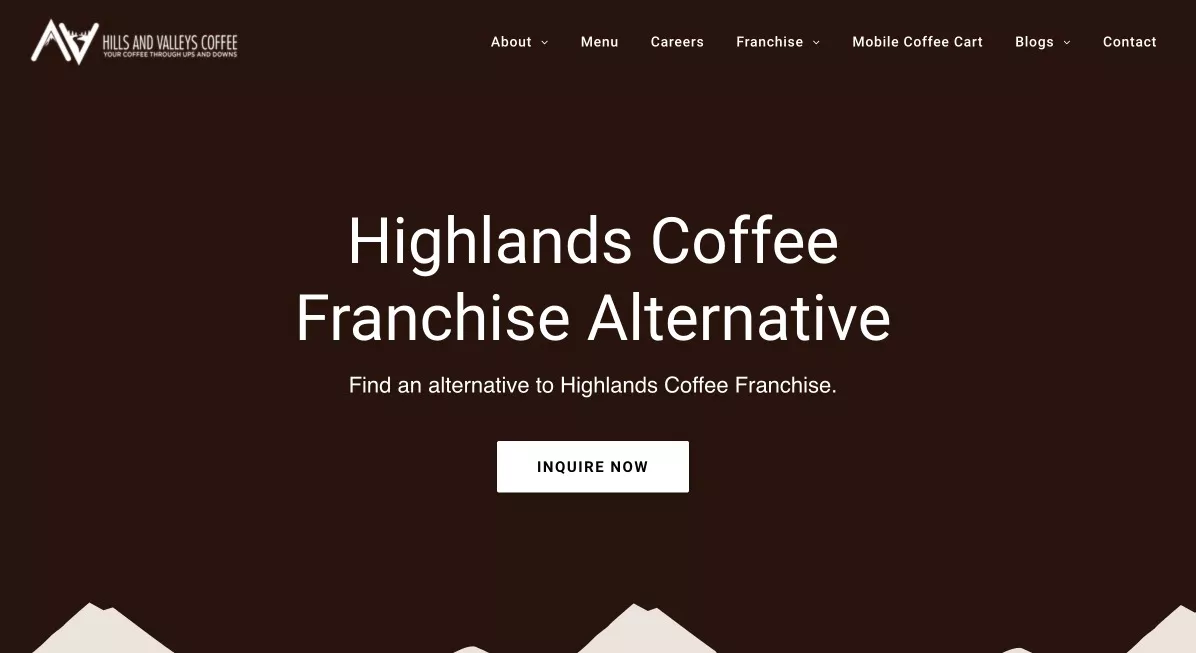
We give enough information about our competitors’ franchises, from a quick cafe overview to specific investment and franchise details.
Then, at the bottom of the page, we added a section to promote a franchise alternative (our Hills & Valleys Cafe).
By doing so, we attract and rank for most of our competitors’ keywords.
We even ranked #1, given that some competitors don’t have their websites yet.
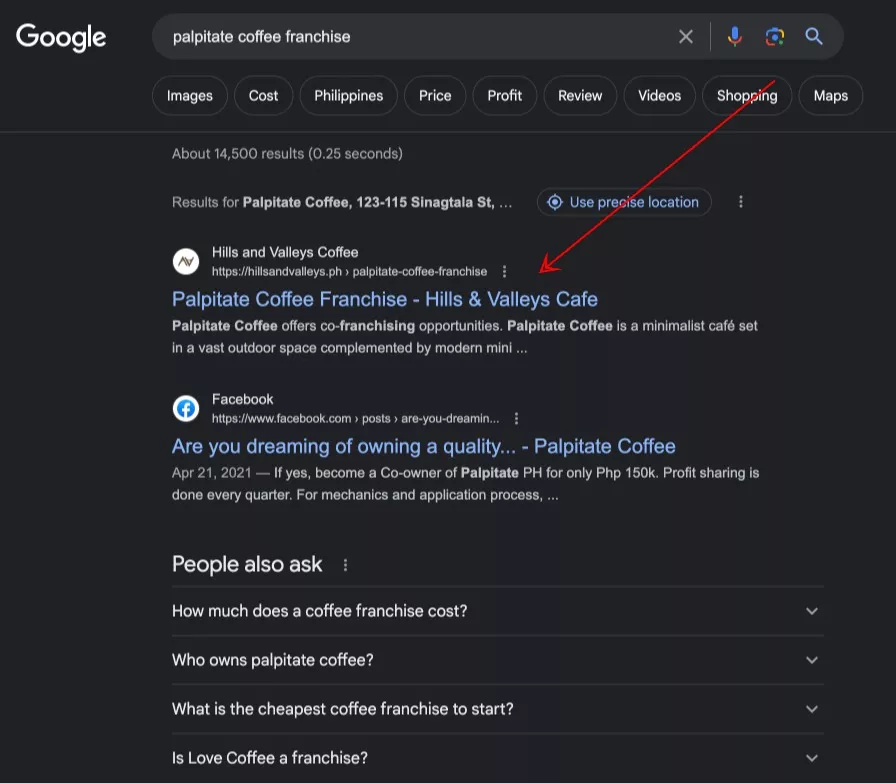
How do you capitalize on competitors’ keywords?
Use Ahrefs’ Keyword Explorer to find branded keywords of your competitors. If you can find “vs.” or “alternative” on the key phrase, it’s highly targeted for those searchers looking exactly for alternatives.
Publish “alternative” pages to competitors’ products/services. See which competitors are highly relevant to your primary offering. In our case, we only get cafes that also offer franchise opportunities.
Satisfy the search intent by providing enough information for the readers. The company of the competitors, all pertinent details they need.
You can create a comparison chart or table to show feature differences for web-based products.
Build internal links to it from other relevant blog posts/pages. This will help increase its rankings and reach page 1 on Google within a few days.
By ranking for competitors’ branded keywords, you can steal traffic from them and generate leads for your business.
5. Build authors’ expertise on external publications.
Aside from establishing your on-page signals for your site, it’s an excellent way to create trust signals off-page on external web properties.
Its impact on generating leads can be directly attributed to other publications driving traffic to your website (“referral traffic”).
In the age of guest blogging, it’s crucial to stand out among the crowd of content by establishing your expertise in the subject area.
Here are some ways to build authors’ expertise off-page:
- Choose topics that aren’t too general and may only require technical expertise to finish the content (e.g., how to fix the Breville espresso machine).
- Write more detailed author bios with strong attributions to your credentials and portfolio as a niche expert.
- Build internal links to your guest posts from your other relevant guest posts (this also helps increase the visibility of your main guest post).
- Invest in hiring experts who are also writers in your space. This speaks of the quality of content they can produce.
By building external trust signals on your site, you establish the right EEAT signals to develop the entire topical authority of your brand. Which eventually can help you rank for commercial keywords that drive direct sales and leads for your business.
6. Don’t ignore local SEO.
Local SEO is mainly focused on helping the business climb the top of local business map packs displayed atop search engine results pages.
Compared to ranking for national keywords where competition is off the roof, you have a high chances of ranking for local keywords with enough optimization on your GMB on your website.
Claim your Google Business Profile.
The free Google service lets you create a business listing online. It is then verified by Google, allowing you to display your listing on Google Maps.
When your business name is searched, you’ll find Google displaying your map location, with an image and all the general business information you entered.
Follow the procedure here and claim your Google Business Profile.
Recommended Reading: 27 Link Building Strategies For Local SEO
Even if you’re a B2B, you’re likely to succeed in local SEO and gain constant leads by ranking for local map packs and organic search results for local keywords.
For instance, we’ve ranked highly for our target keyword, “coffee shop in San Jose del Monte Bulacan”. This is our first cafe branch in one of the developed cities in the Philippines.
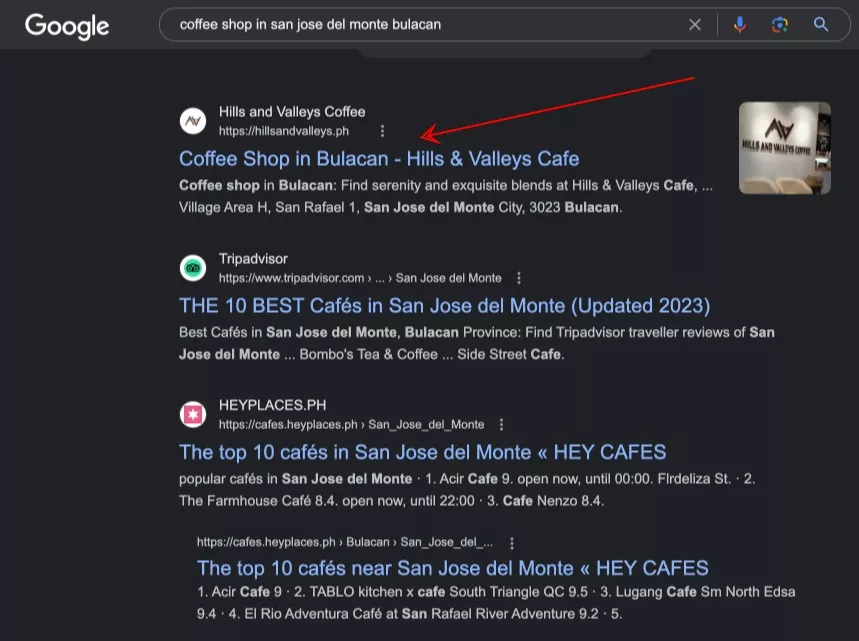
By targeting this exact keyword on our homepage, we let Google see its importance for us to get rankings for this particular keyword.
Pro tip: Find more latent semantic keywords you can rank with new pages. In our example, we also rank as an “Instagrammable cafe in Bulacan” with a dedicated page.
7. Publish assets that aren’t treadmill traffic.
I got this from Brian’s Dean video on SEO tips 2023, which detailed some advanced techniques to get sustainable traffic from Google.
By publishing assets that aren’t treadmill traffic, you don’t rely on a surge of traffic for days. But you’re targeting a sustainable, constant flow of organic traffic (and natural links).
Some of these assets that can drive sustainable traffic:
- YouTube videos that rank for “how-to” or any informational industry keywords.
- Industry guides that tend to rank for highly searched head terms. Static pages that either define a term or satisfy “when”, “why,” and “how” questions.
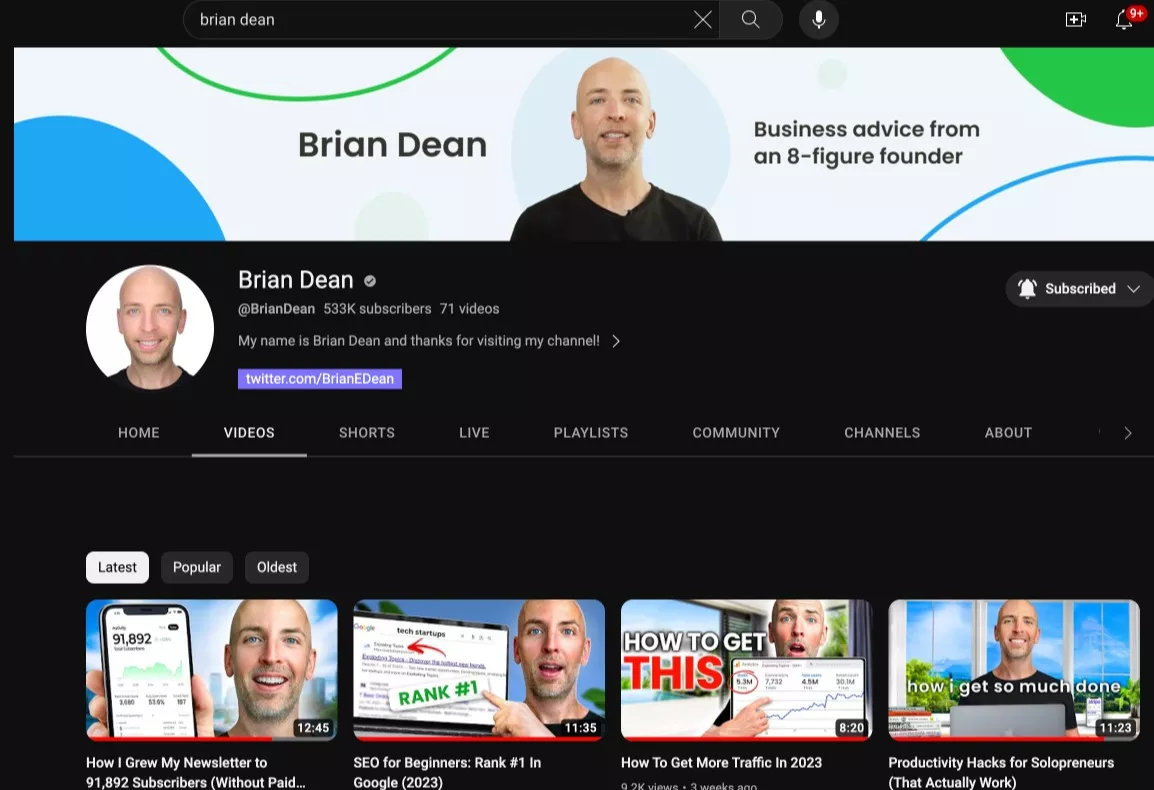
In generating leads for your business, this speaks wonders as you can invest the resources initially but experience long-term traffic after you publish them.
Of course, all this requires initial effort, such as building initial links to industry guides so they can rank highly for their target terms. But as they rank, they receive passive natural links from other content creators in the space, reaching an even higher spot on Google’s SERPs.
8. Monitor Your Branded Keywords
As you rank for different industry keywords, you build curiosity in the minds of your search users.
Most of them would do Google searches for your “brand”, knowing more about what you do and your offers.
All these branded keywords are by-products of different marketing methodologies, paid ads, and organic rankings as you become the top of the mind for topically relevant how-to information.
It is best to monitor for branded keywords and see what questions people ask about your brand.
If there are questions and related queries, you haven’t answered yet or don’t have a dedicated page for them. You can create one to satisfy all these search intent.
Doing so allows you to funnel all keywords (branded and niche) so they can come deeper into your sales cycle and convert them into customers.
You’ll be amazed by the results when you put these SEO tips for lead generation into practice. Check out some of our work for proof.
We’ve covered a high-level look at what goes into an effective content-based link building strategy.
If you’d like to learn more, you can get in touch with us today to discuss how we can help scale your business.
How to Write Content That Ranks
Content writing has two main goals: to satisfy web users with what they are looking for and assisting businesses with their online marketing objectives.
Most online marketers hit the first one. However, we rarely see content marketing campaigns focusing on helping businesses drive results.
Learning to write content that ranks isn’t easy, which becomes leverage for high-level content marketers to differentiate their work from their contemporaries.
They are given that they don’t only write for publishing's sake but also provide value to clients by ranking content for their target keywords, which drives significant organic traffic and conversions for their website/s.
In this guide, I’ll walk you through my step-by-step process of writing content that ranks. I’ve used it for our clients, our link building blog (as a test), brick-and-mortar businesses, and eCom site.
How to Write Content That Ranks (6 Simple Steps)
1. Choose a Keyword With Weaker Competitors
Without a target keyword, you can’t rank content on Google’s search engine results pages (SERPs).
By having a keyword on the most critical places on your page, search engines can quickly determine the relevance and context of your content.
However, not all keywords are worth pursuing.
The most frustrating part of content marketing is creating comprehensive content about a specific topic. Yet, you won’t have a chance to rank, given the level of competition among its ranking pages.
I always recommend going after keywords where your site can have the best fight on Google’s SERPs.
The more authoritative the websites that rank from a Domain Rating (DR) perspective, the harder it is to rank because you need many backlinks.
You can use Ahrefs to see weaker spots on Google’s SERPs quickly.
If you start with Keyword Explorer, filter the list of keywords by a DR number to get keywords with weaker competitors.
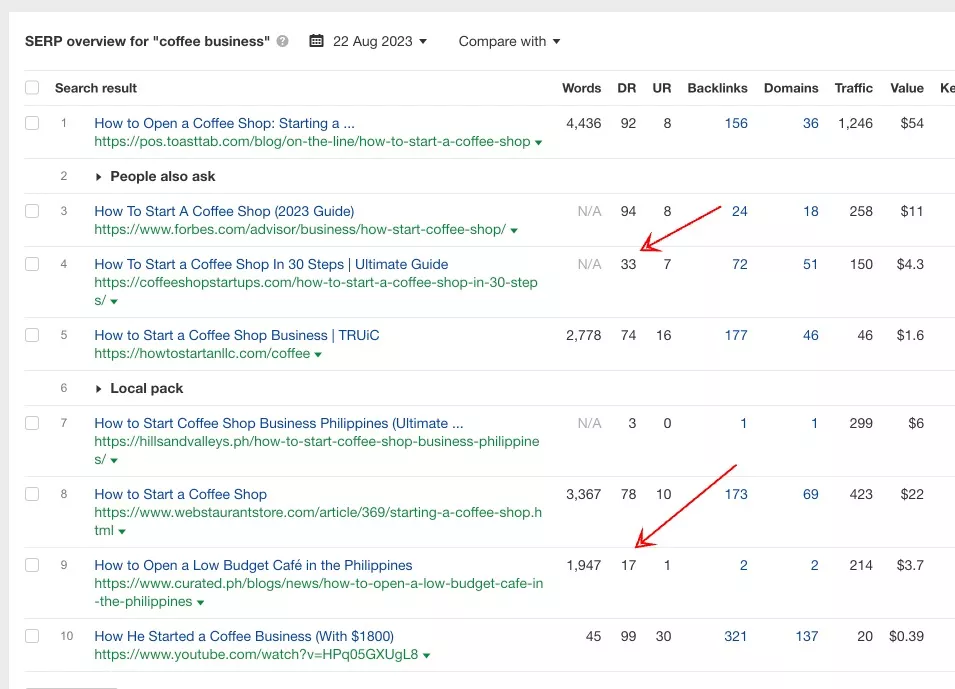
You can also use Ahrefs’ Content Explorer to generate content ideas for your blog. Use the same filter to see lower-authority pages.
Collate all these keywords and content ideas in a spreadsheet and later choose which one you’d want to write content about.
You can also populate your list by checking Google autocomplete or related keywords at the end of Google’s SERPs.
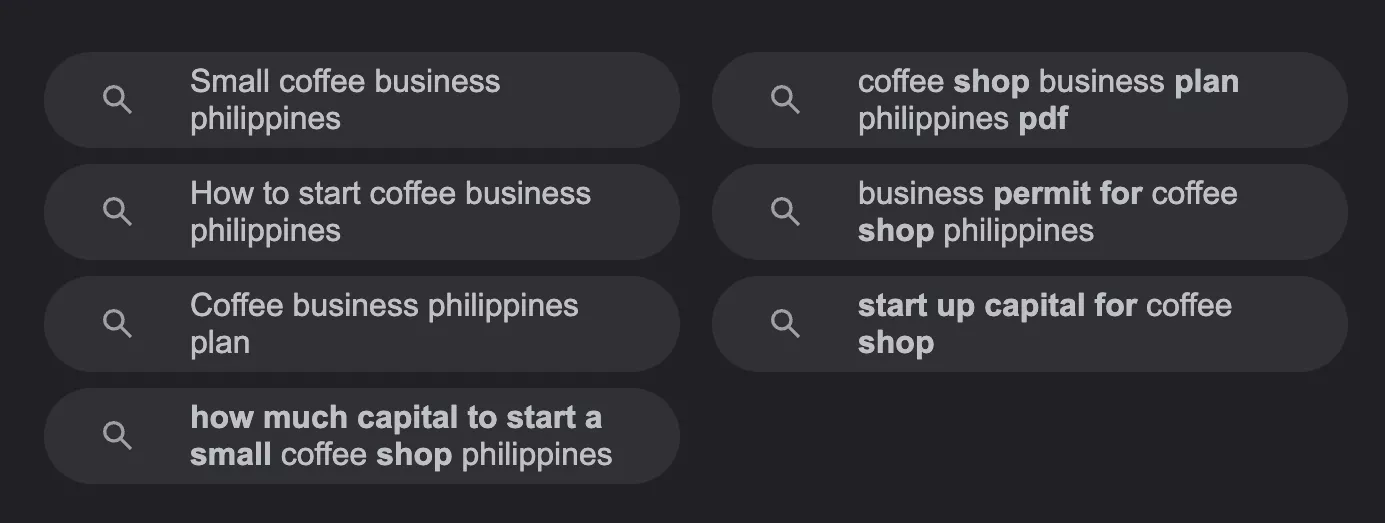
Most of the keywords you’ll find here don’t have high search volume, yet they are easier to rank with solid content.
The main objective in finding keywords with weaker competitors is to quickly rank for them with your content so you can build enough momentum for your SEO campaign. Or, if you’re servicing SEO clients, you can send initial reports of quick SEO wins via ranking for long-tail keywords instead of eyeing for head terms with no chances of winning (initially).
In my recent post on how to get your business on top of Google search, I’ve mentioned the importance of targeting long tail keywords.
The compiled constant effect of ranking for multiple keywords at the start of an SEO campaign boosts momentum to go after other keywords with a little stronger competition.
2. Do a search intent analysis for the keyword.
Most SEOs should have noticed this part of the process, going straight to writing content for the keyword.
Search intent analysis is crucial in understanding what the searchers are looking for and how you can create the best content to serve their needs (intent).
There are four main types of search intent:
- Informational (Awareness) - the search user wants to learn about a topic. (e.g., how do espresso machines work)
- Navigational (Interest) - the search user is curious about a particular brand or is looking for a specific brand/page (e.g., Ahrefs login)
- Commercial Investigation (Desire) - the search user is looking to solve a problem (e.g., best commercial espresso machines)
- Transactional (Action) - the search user wants to take an action or purchase a product/service (e.g., buy espresso machines).
Figure out the search intent type of a keyword.
Go even further. Do a Google search for the keyword. See the content format of each top-ranking page.
For instance, Google favors “how-to” guides for the key phrase, “coffee business Philippines”.
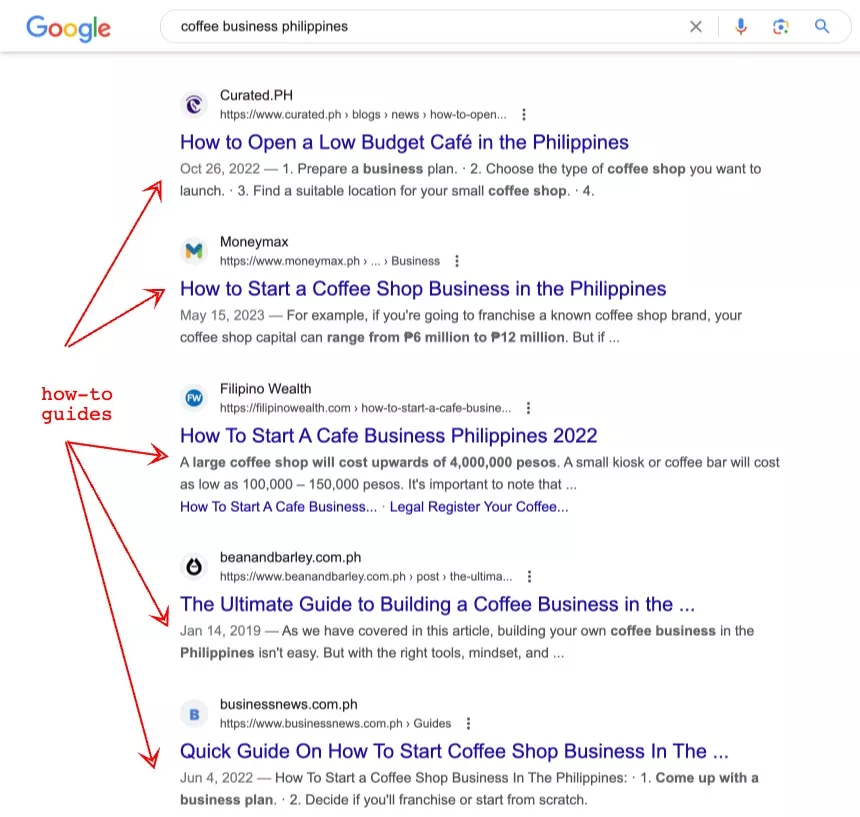
So, writing content that ranks for this keyword requires a comprehensive step-by-step process on how to start a coffee shop business.
3. Plan your content.
By planning your content, you eliminate all the unnecessary stuff and include the best points, structure, and flow that will best satisfy your readers.
You do that by first researching your top competing pages.
You want to see what makes the top-ranking pages deserving to rank for the keyword. Check and see how well-optimized the articles are.
I use the Detailed tool to see their basic outline quickly.
I’ve taken note of all headings and subheadings for the top 3 rankings articles. Then, I create a master outline combining all these headings for my content.
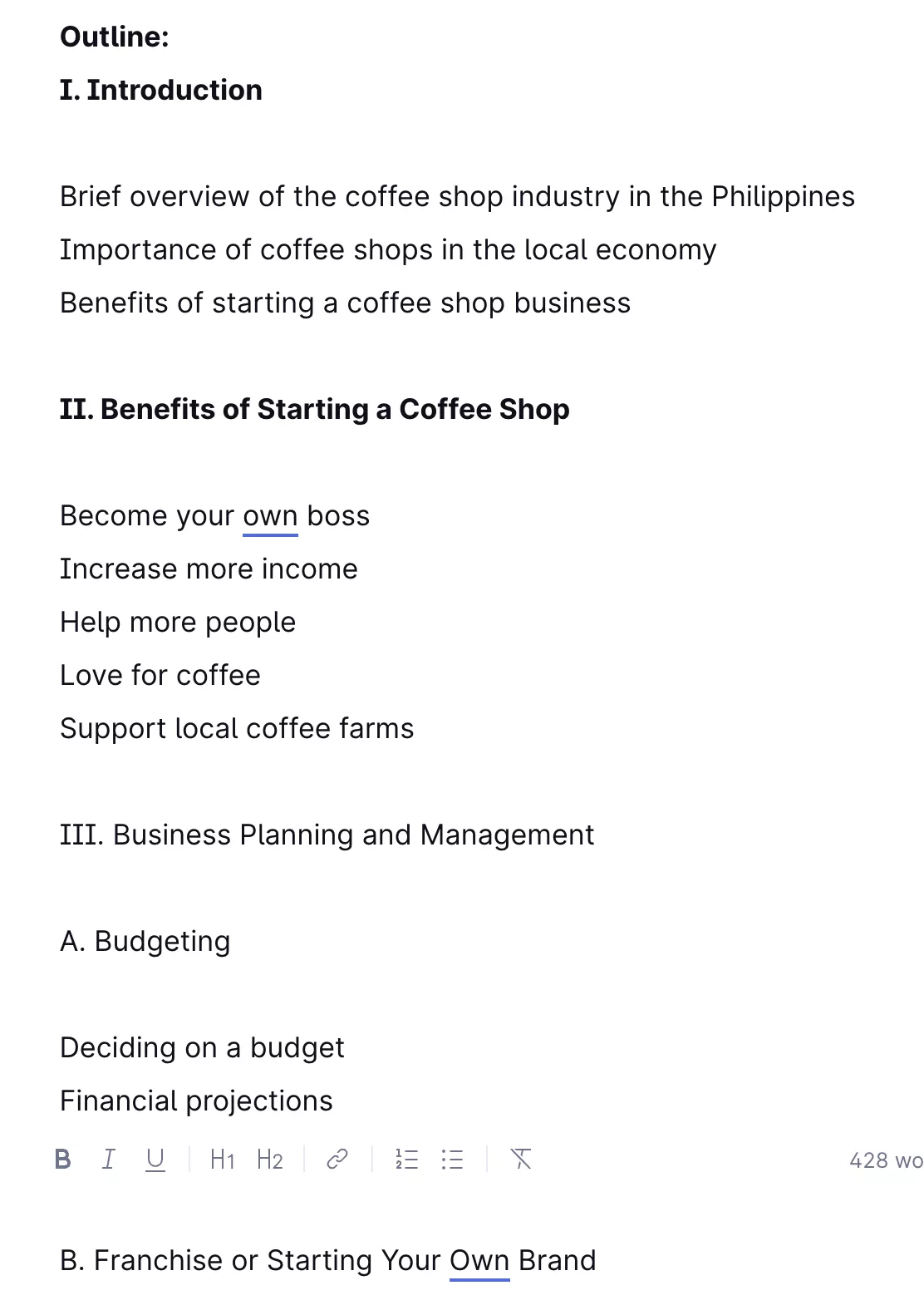
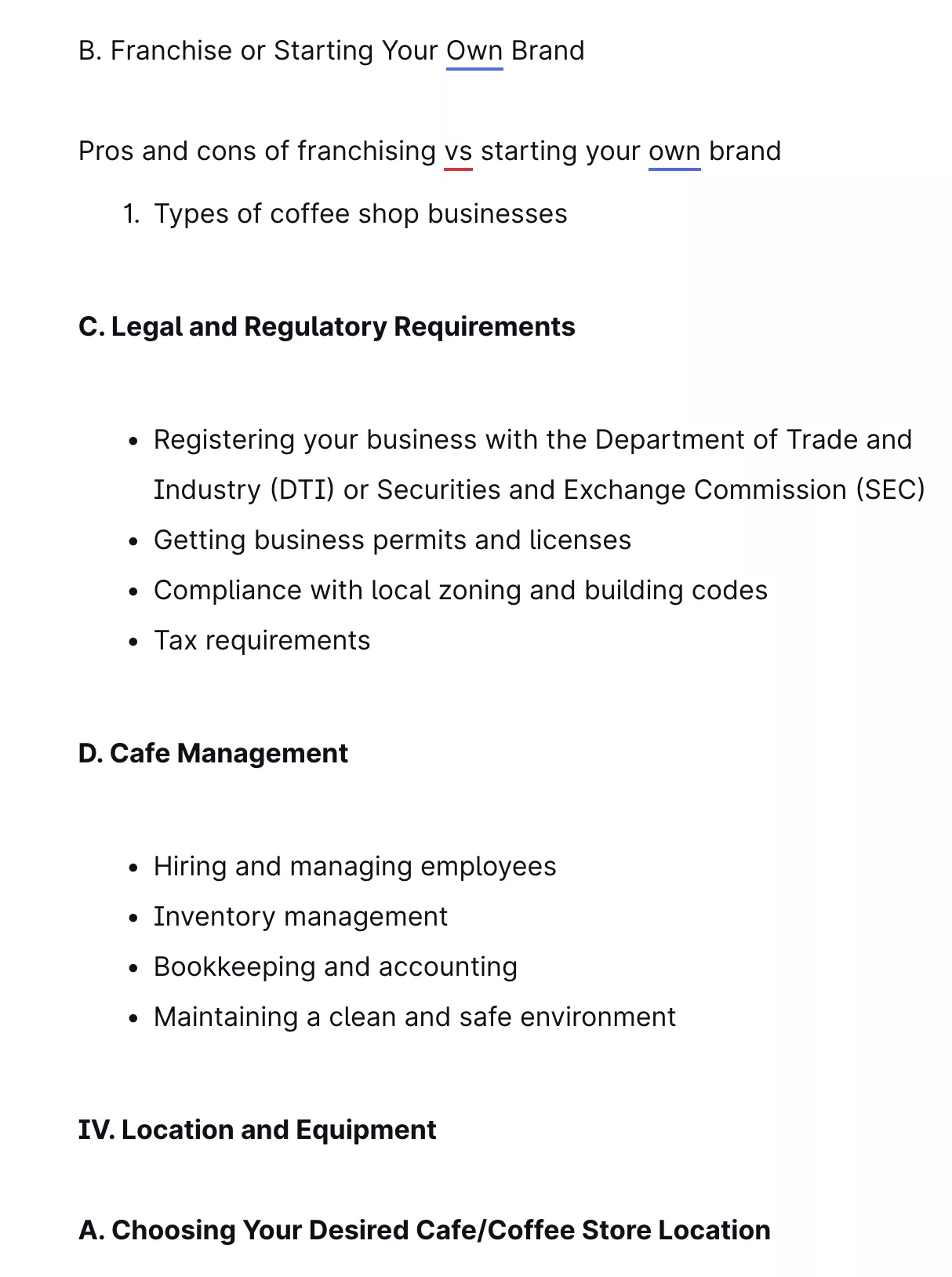
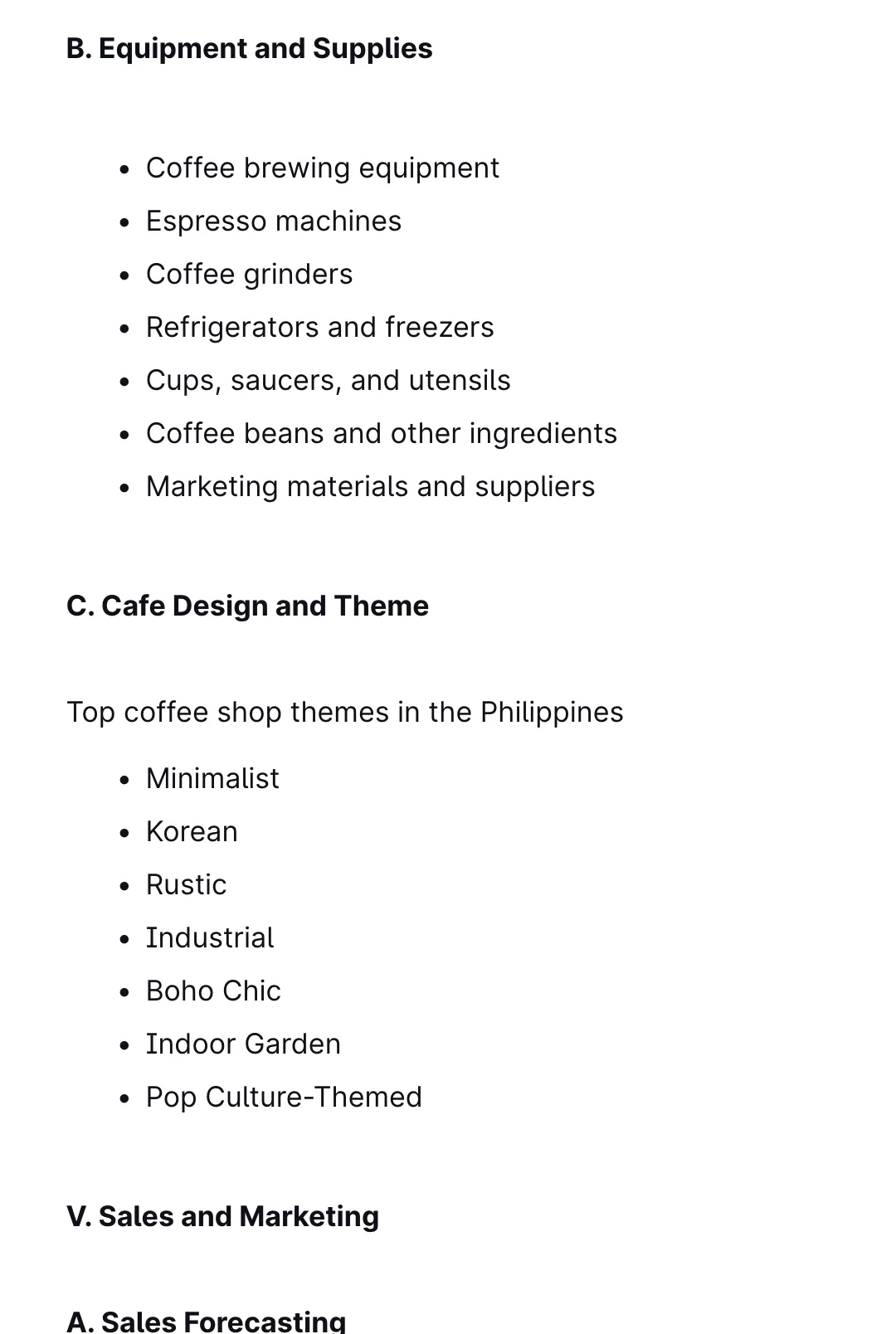
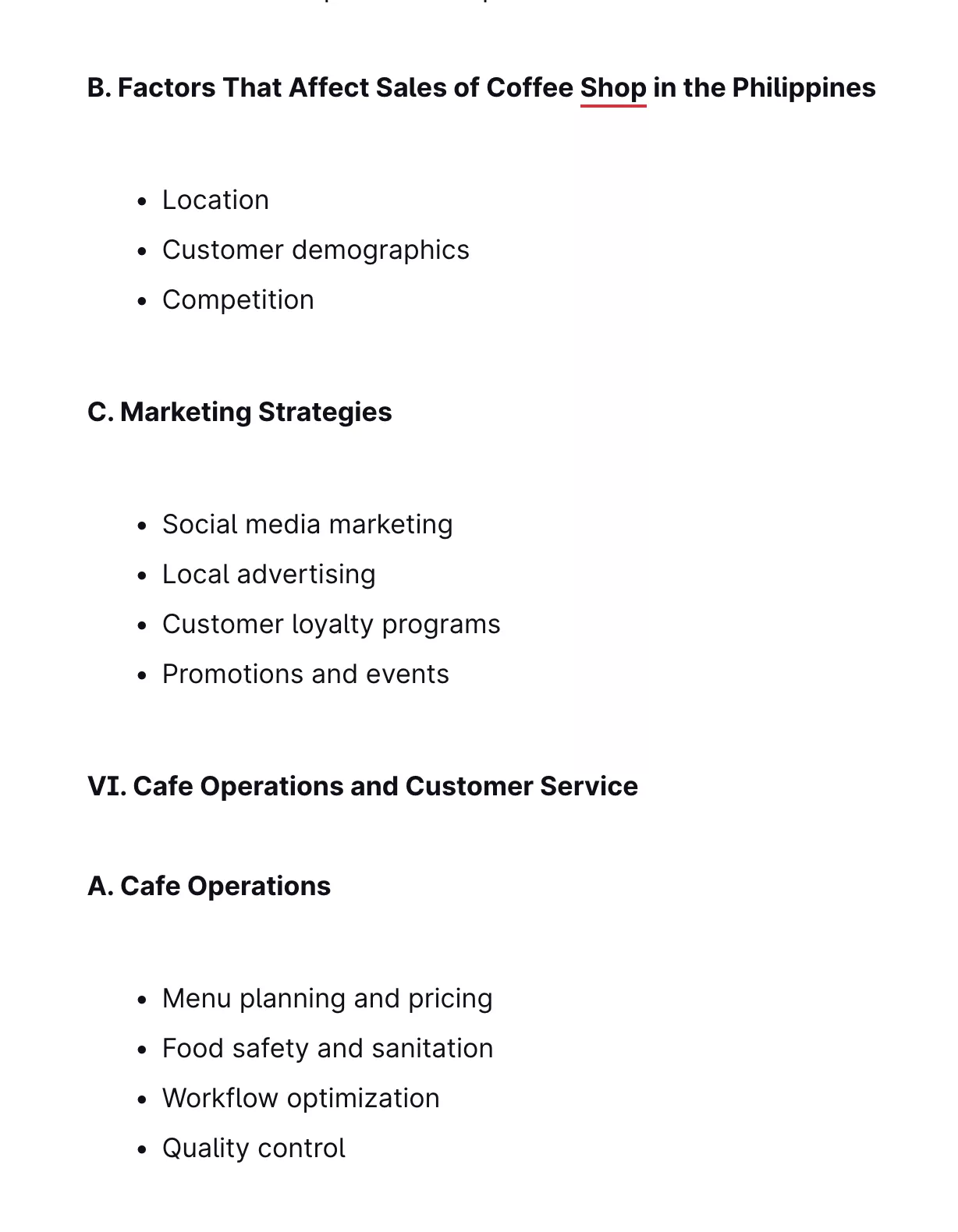
I even add unique headings missing from these articles that are useful for my readers.
You can check related searches at the bottom of the search engine results pages (SERPs) to make it more comprehensive. These are topics that Google finds relevant to the keyword you’re targeting.
Aim to achieve the average word count for the keyword by checking the top 3 ranking articles. Detailed also has an overview section for its word count.
Create a content brief with target keywords, LSI keywords, and an outline.
Recommending resources for creating content briefs:
4. Write with expertise and experience.
Establish expertise and experience in your content.
Google recognizes that users prefer to receive information from only reliable sources. In recent years, the search engine has focused on this issue with its Search Quality Evaluator Guidelines, a 150-page document used by Google’s search-qualified evaluators who are actual humans rather than an algorithm.
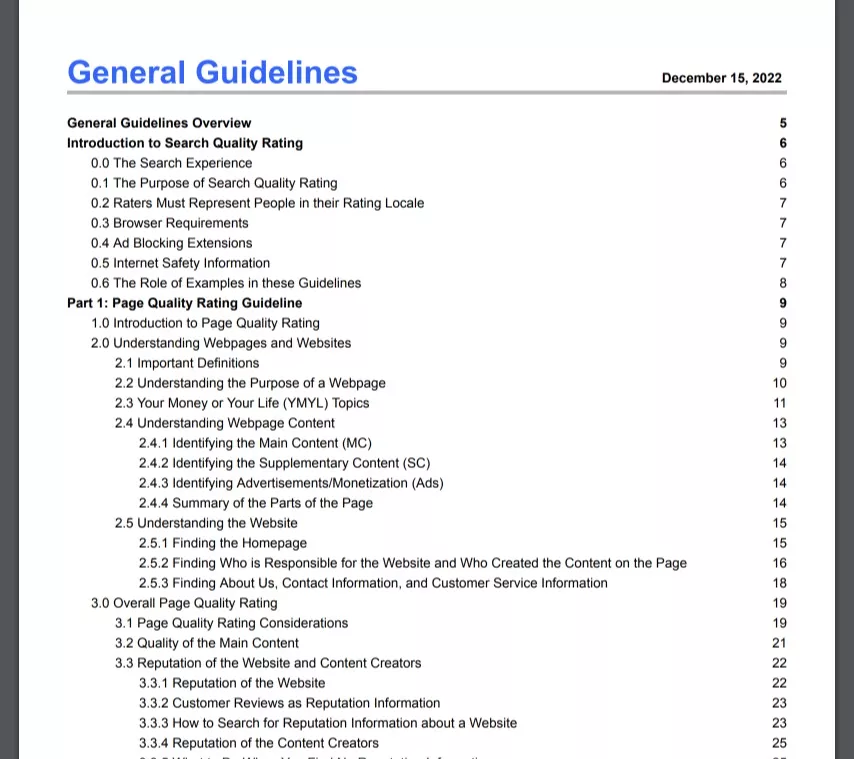
The initial step to writing content with expertise is to have a good introduction.
Hook your readers in the first lines of the page.
Give them the reason why they should be reading your content.
For instance, in my guide on how to start a coffee shop in the Philippines, I start the content with statistics proving how profitable and in-demand a coffee shop business is. This gives a primary reason for readers to read the how-to guide.
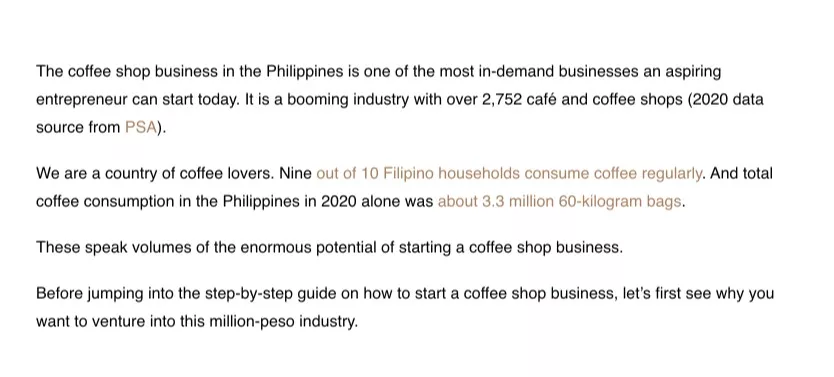
Place the value above the fold.
Here are some tips on writing introduction paragraphs from Matt Diggity:
- Match it with the searcher’s buying cycle.
- Educate with facts.
- Appeal to the emotion of fear to continue reading. (e.g., DUI cases that don’t have legal representation typically have 25% more expensive fees and license revocations of twice as long).
- Tease your article’s content about what they are about to read.
- Establish why you’re trustworthy and authority in writing about the topic.
Once you’ve written an introduction, your obvious next step is to write the meat of the content.
Essentially, we’ve included in our processes a huge percentage of the experience of the authors/writers in their SEO content, which significantly increases the credibility and ranking potential of the page.
Identify a unique differentiating angle.
See how your competitors attack their content writing. Determine a unique angle where you can bring internal expertise into your content, differentiating you from all other ranking pages.
For instance, we’ve tested products to create the “best espresso machines in the Philippines”. By testing it first-hand, we have enough information to conclude which espresso machines best fit a specific target audience (i.e., baristas, home coffee lovers, etc.).
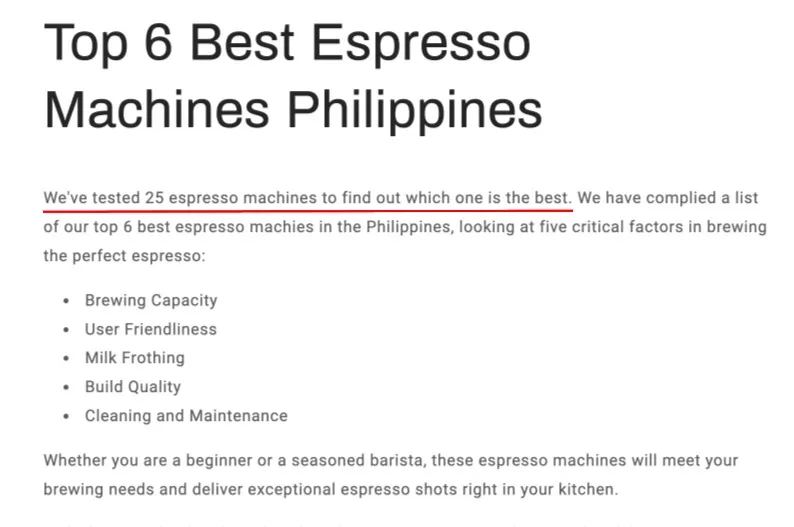
Another example is we added one recommendation of an affordable Point of Sale (POS) system for running a coffee shop business.
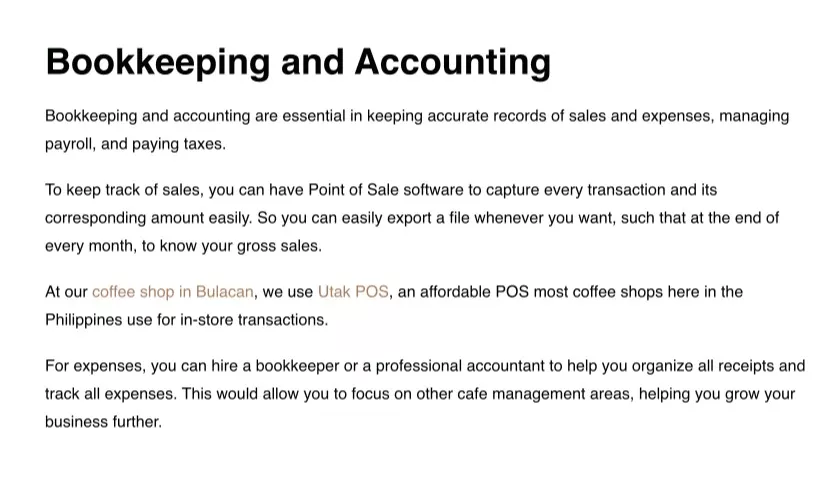
Doing it allows us to separate from all other ranking pages for the target keyword, as most have generic listings of specifications, product features, and product details. All of these can quickly be done with AI tools like ChatGPT.
Here are some more ways to input “experience” and “expertise” into your content:
- Input statistics and internal data are relevant and will highly support your topic. Make it easy for readers to understand the data by summarizing the most essential points.
- Include case studies and personal experiences as you write content—some observations, details, and actionable tips that might be helpful to your readers.
- Add offline resources that aren’t available online in your space. This gives you the unique advantage of covering important topics and points demonstrating your expertise.
Do Basic On-page SEO
You may be surprised I didn’t start with this best SEO practice. The main reason is that I don’t want you to focus much on keyword prominence.
You focus on writing the best coverage about the topic without bothering on-page SEO. After all, it is all about including the keyword in the most prominent places:
- Title tag
- Meta description
- URL slug
- H1 and H2s
- Body text
- First sentence
Add internal links and credible sources.
Internal linking is integral to SEO as it helps users navigate through your site quickly, boosting indexation and facilitating PageRank flow between pages.
Internal links can pass more link equity to destination pages, making them more capable of ranking for their target keywords.
At best, internal linking is a simple process. It links to other related web pages that are about the anchor text.
Here are some internal linking best practices:
- Include the right amount of internal links on your content, preferably one internal link for every 300 words.
- Use descriptive anchor texts to link to your destination page.
- Ensure internal links are dofollow.
- Check if you’re linking directly to a page with a 200 OK server response code. Avoid linking to 404 not found or 301/302 redirected URLs at all costs.
Aside from adding internal links, you should be linking to external resources you’ve found helpful for your readers, referencing them for a more detailed explanation of the subtopic.
Contrary to the belief that it dilutes link equity through your website when linking out to external pages, it is more advantageous to your content from an engagement perspective as you’re giving your search users as much value as possible.
Apply NLP to quick answers.
Theoretically, if you can apply natural language processing to your content, Google will be more likely to reward your content with snippets and better rankings.
Aim to optimize your content for NLP by echoing back the question, giving a direct answer, and mentioning the correct unit.
We’ve ranked our guide for featured snippets by applying NLP to every answerable question.
We review each “people also asked questions” and answer them directly in the content. We answer questions like “why is coffee shop a good business in the Philippines?” straight and with backed-up statistics.
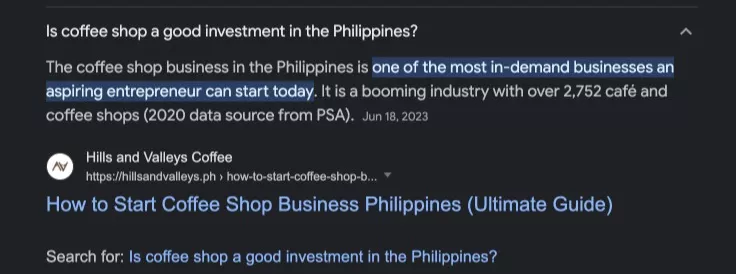
5. Fact-check and proofread everything.
After you’ve written your content, it’s time to edit and proofread everything.
Readability
Make your content easier to read and digest.
Avoid having large blocks of text. Have headings, bullet points, short paragraphs, and multimedia.
Simplify your content. Ask yourself, is your content written for an average person or someone with a technical background (i.e., a doctor)?
Most readers are average in any industry, so you need to write for them rather than for expertise unless your primary target is experts within your space.
Add images and videos to supplement your content, making it easier for readers to follow. For instance, “how-to” guides or tutorials need screenshots to show specific steps of the process.
6. Publish and promote content.
Publishing content is only 50% of SEO content writing.
Invest in getting visibility from search and social media channels to drive readers to your content.
Place in the main navigation menu
If you want to rank a newly-published product and collection page or new blog post, include it in your site’s main navigation menu. Published blog posts are best to have in a hub/learn section.
Pages in the main navigation menu are easier for Google to find and, therefore, see a boost in keyword rankings.
Add internal links from other pages.
Return to your site’s old content and include internal links to your newly published page. Do a Google search for site:[domain.com] “topic” and find any relevant blog posts you can edit to add internal links.
You can also use Ahrefs to find your best linked-to pages. These strong pages can pass robust link equity to your newly published page. Find a relevant page among them and include an internal link to your new content.
Promote via guest posts.
If you’re writing external content for other blogs (guest posts), you can build inbound links to your new content to increase its ranking power and, therefore, improve its position on Google’s search engine results pages (Google SERPs).
That’s it. Learn how to write content that ranks using the six-step process outlined above.
If you need help with writing content, see our content writing and content marketing services.
How To Find Niche Keywords For SEO
Keyword research is an integral part of SEO, as it dictates what type of content you’ll create and publish to rank in search engine results pages (SERPs).
Finding niche keywords is easy, but choosing the right ones to target for your website requires critical thinking.
In this post, we’ll cover how to find and choose the right niche keywords for SEO.
What are niche keywords?
Niche keywords are specific words that interest a small part of a market. Users search these terms to find solutions to problems or more information about the topic they’re looking for.
How to Find Niche Keywords for SEO?
The most popular approach to finding niche keywords is inputting seed terms into keyword explorer tools like Ahrefs.
1. Using Tools and Platforms
Let’s start with the basic ones. With these keyword research tools, you can instantly generate hundreds of niche keywords.
Ahrefs
By searching for head terms on Ahrefs’ Keyword Explorer, you’ll get a list of all matched words or phrases related to your inputted terms.
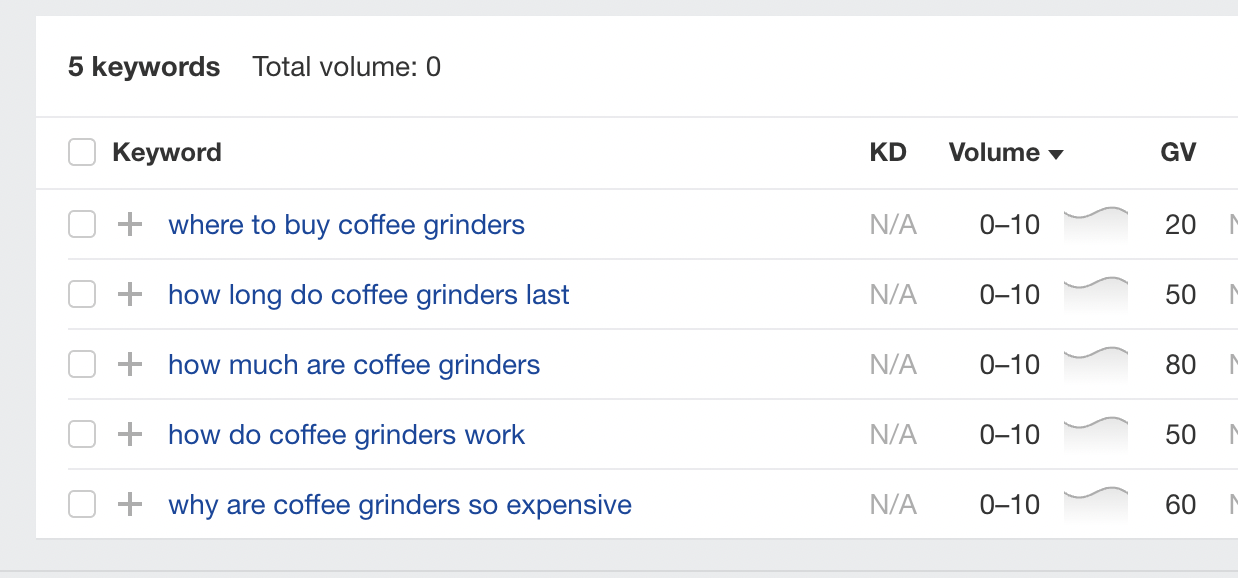
For instance, if you’re selling “coffee grinders’, you input the phrase “coffee grinder”, and you’ll see a bunch of niche keywords related to it. You can export and qualify a list based on specific criteria - which I’ll discuss later in this post.
SEMRush
SEMRush has more dynamic features and a massive dataset for keywords that can help you collect more relevant terms suited for your niche.
With its new topic cluster feature, you can easily create a topic cluster that can fit into the minds.
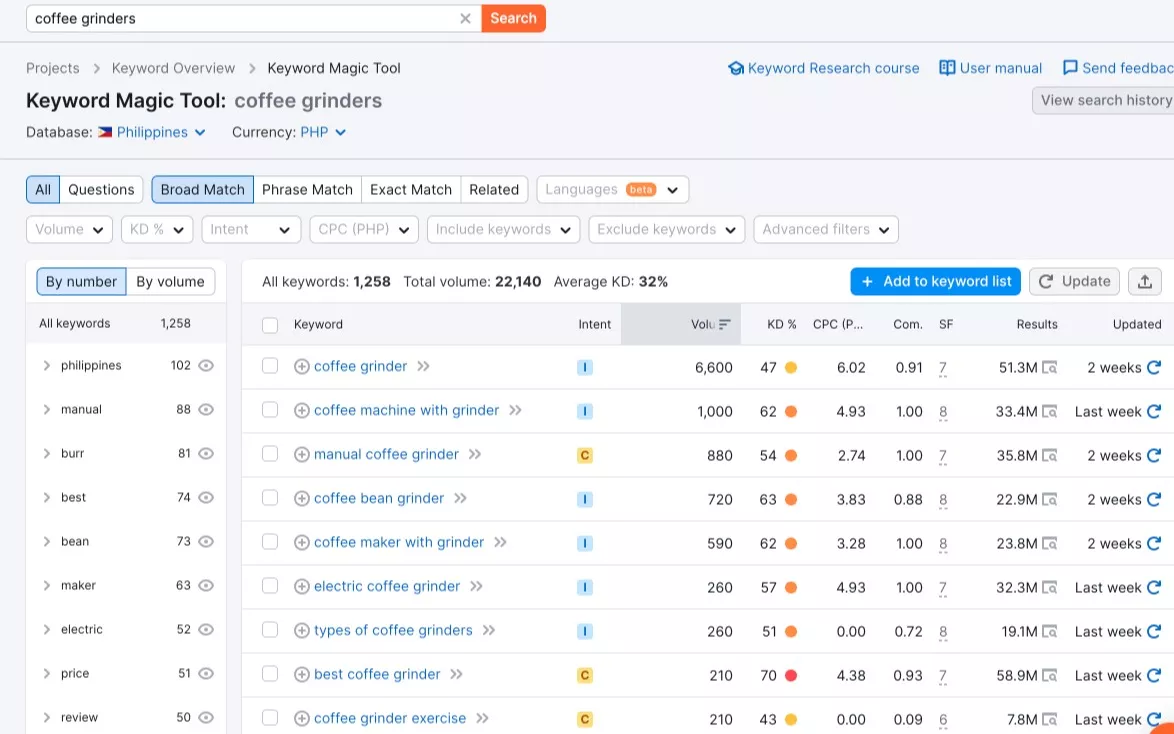
Further Resource:
Answer the Public
AnswerthePublic.com is a free browser-based topic generator tool that allows users to generate niche content ideas based on frequent search questions/queries by web searchers.
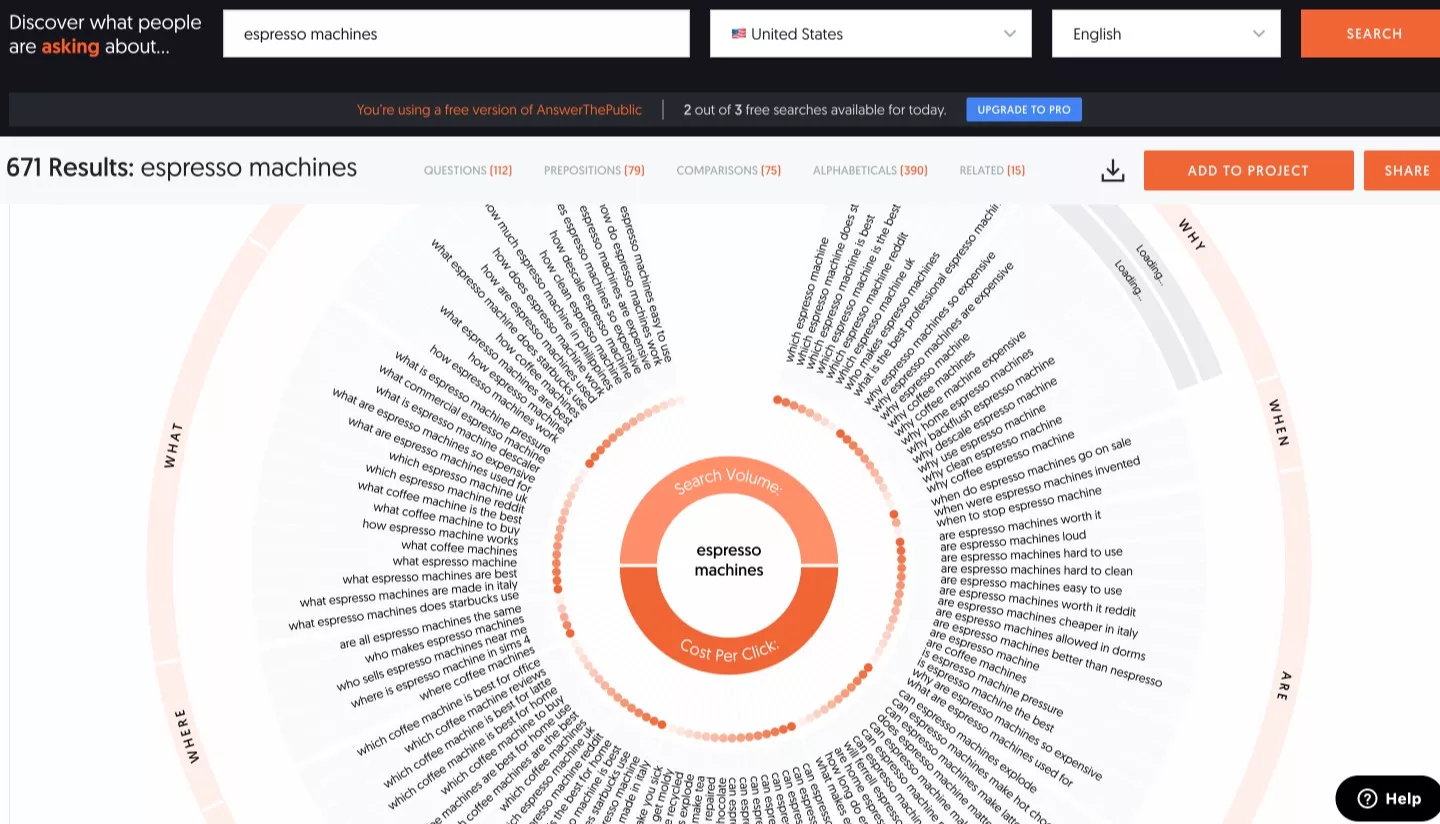
The tool displays data visualizations of interconnected topics or questions from primary keywords and topics you’ve inputted on their site.
Pro tip: Export the list of questions and paste them into Ahrefs’ Keyword Explorer to see which ones have substantial search volume you can target for your niche content.
Quora
Quora is the web’s most popular community-based Q&A platform today.
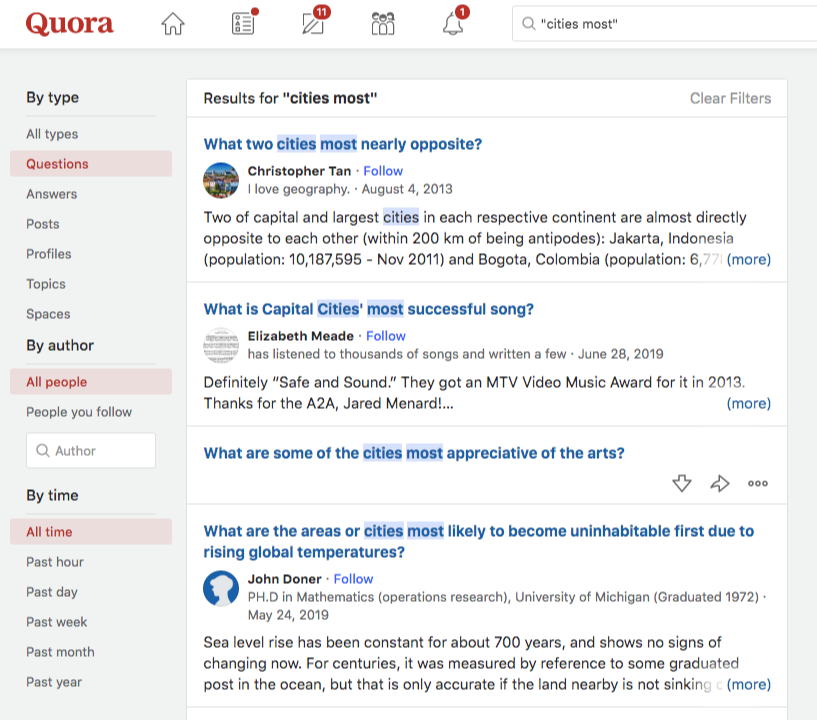
You can generate niche content ideas by skimming through all the questions related to your website/industry. Do a quick search on Quora. Check those with high activity engagement, as these questions are more likely to be searched.
Pro tip: Plug in Quora[com] to Ahrefs and input your topic to see what keywords Quora currently ranks for. It’s a pretty good sign that your content has the potential to rank for these keywords if Quora is part of the top 5/10 spots.
Google Autocomplete
Google has been so effective in suggesting search queries that are based on users’ historical search activity/habit. By doing a Google search for your target topic and not hitting the enter button yet, you’ll find Google Suggest or Autocomplete feature to give you some recommended searches.
I’ve been testing and targeting these Google auto-suggested keywords for one of my niche test sites. And though they have low search volume, most don’t have search volume data for now. These niche keywords are valuable enough to optimize your new content, given they’re near commercial intent.
2. Using Reverse Keyword Research
Inputting seed keywords into SEO tools like Ahrefs to scrape a list of all matching and topically-relate keywords and select the ones with high search volume is doing keyword research the conventional way.
However, checking the keywords’ search volume isn’t the only way to find niche keywords.
Doing it reversely without checking if a keyword has a significant search volume will be a better approach.
Reverse keyword research is the process of checking your site’s ability to rank based on the experience and expertise of the author before assessing if the topic has a significant search volume (or is pretty decent to rank with your website).
By first checking your authors’ expertise, you can gain much more advantage in assessing the content's E-E-A-T (Experience, Expertise, Authoritativeness, and Trustworthiness).
For instance, I’m starting to frequently publish new industry guides on this link building blog with new SEO experiments I’ve been learning from my niche sites that I find helpful to you (as my reader).
From there, I would ask keyword research tools like Ahrefs’ Keyword Explorer to give me matching or related keywords based on the inputted topic.
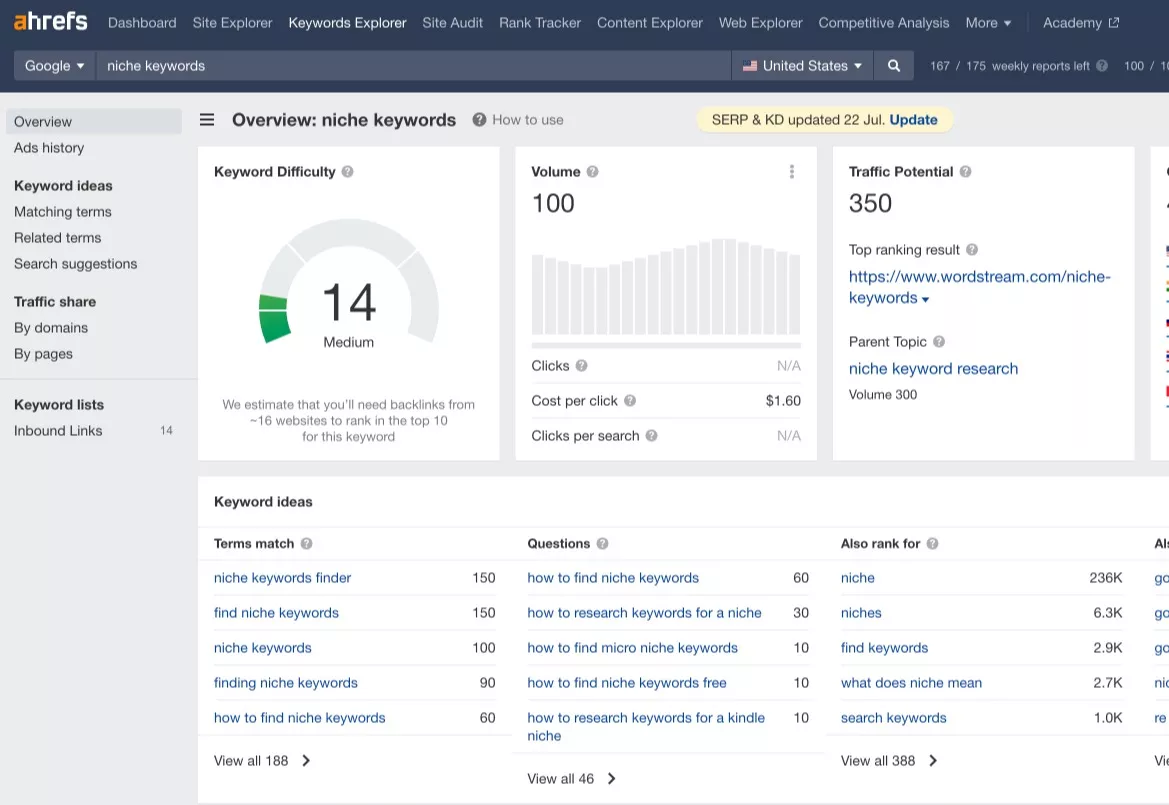
Instead of assessing if I have enough experience or expertise to write about the subject, given it has a good search volume I don’t want to miss with my new content, I’d have much better confidence in crafting the content in a way that’s rankable given its quality and comprehensiveness.
More reasons why reverse keyword research is robust in ranking niche keywords for SEO:
- Expertise and experience are brought to life in a content asset (E-E-A-T signals matter). You are more likely to cover many topics your competitors haven’t written - an excellent way to differentiate yourself from them uniquely.
- You establish topical authority when you’ve published content assets from topics you know are essential in your industry, even if these topics have zero to low search volume.
The best way to start reverse keyword research is to list all topics you know about your industry. Then rate them based on how well you know the topic (“1” being the lowest, “10” being the highest).
Rank these keywords from the topics you’re very knowledgeable about and publish content about them.
Then go to Ahrefs to see if they have an existing search volume. You can restructure words to find if there are existing data the tool has for the keyword.
3. Emerging Topics
Emerging topics are industry trending terms with increasing search demand.
And having content to write about gives you an initial advantage to being one of the first few indexed pages solely written about the topic.
It’s also an excellent way to build topical authority, given you demonstrate proficiency across all facets of your niche, including the ones that haven’t seen much light.
Increasing the topical authority of your website as the go-to source of information for niche topics increase the keyword visibility of your blog content for informational search queries.
There are many impressive tools to generate emerging topics in your space quickly. Exploding Topics by Brian Dean gives you regular email updates for any trending topics. This allows you to jump in on the topic and write about it, even before it hits its peak rate.
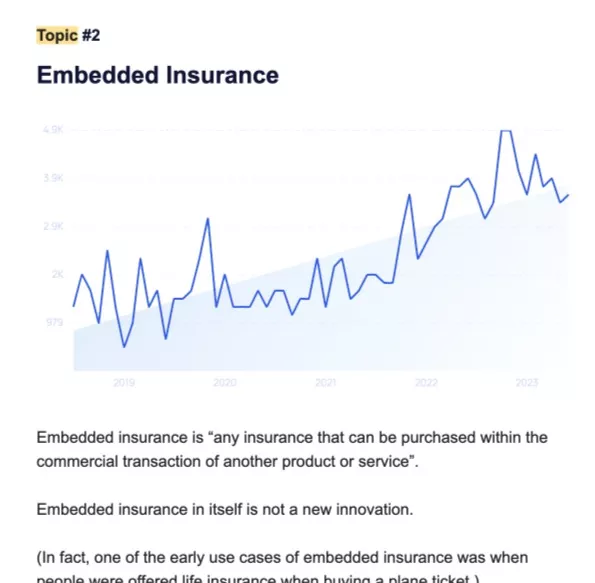
One of the latest videos of Authority Hacker is sharing a strategy on how they’ve tapped into the emerging topics on Tiktok to create content for one of their niche sites in the home DIY space.
As it turned out, Ahrefs have captured more search volume (for its data) and is now revealing a good search volume for the topic.
This is a great way to take advantage of new emerging topics with high potential to get search demand.
4. New Keyword Opportunities
One of the best places to start finding niche keywords is from existing ranking pages.
Your content ranks not only for its main keyword but for other industry-related terms that are potential keyword opportunities.
Google may see your page as relevant enough to rank for page 2, as it gets some impressions and few clicks, but with a thorough investigation, you’ll find it is best to create new content to target those topics.
How to find these new keyword opportunities?
Using Google Search Console
Go to Google Search Console.
Performance - Search Results - Queries/Pages.
Find pages with many impressions but getting fewer clicks. This means you may be sitting somewhere on page 1 or 2 (even lower) but aren’t relevant enough to rank highly on search engine results pages).
You can start with your best-ranking page. For this example, my how-to guide on starting a coffee shop has ranked well for dozens of keywords. So I start with this page.
Go to Queries - Rows per page (100 or 250).
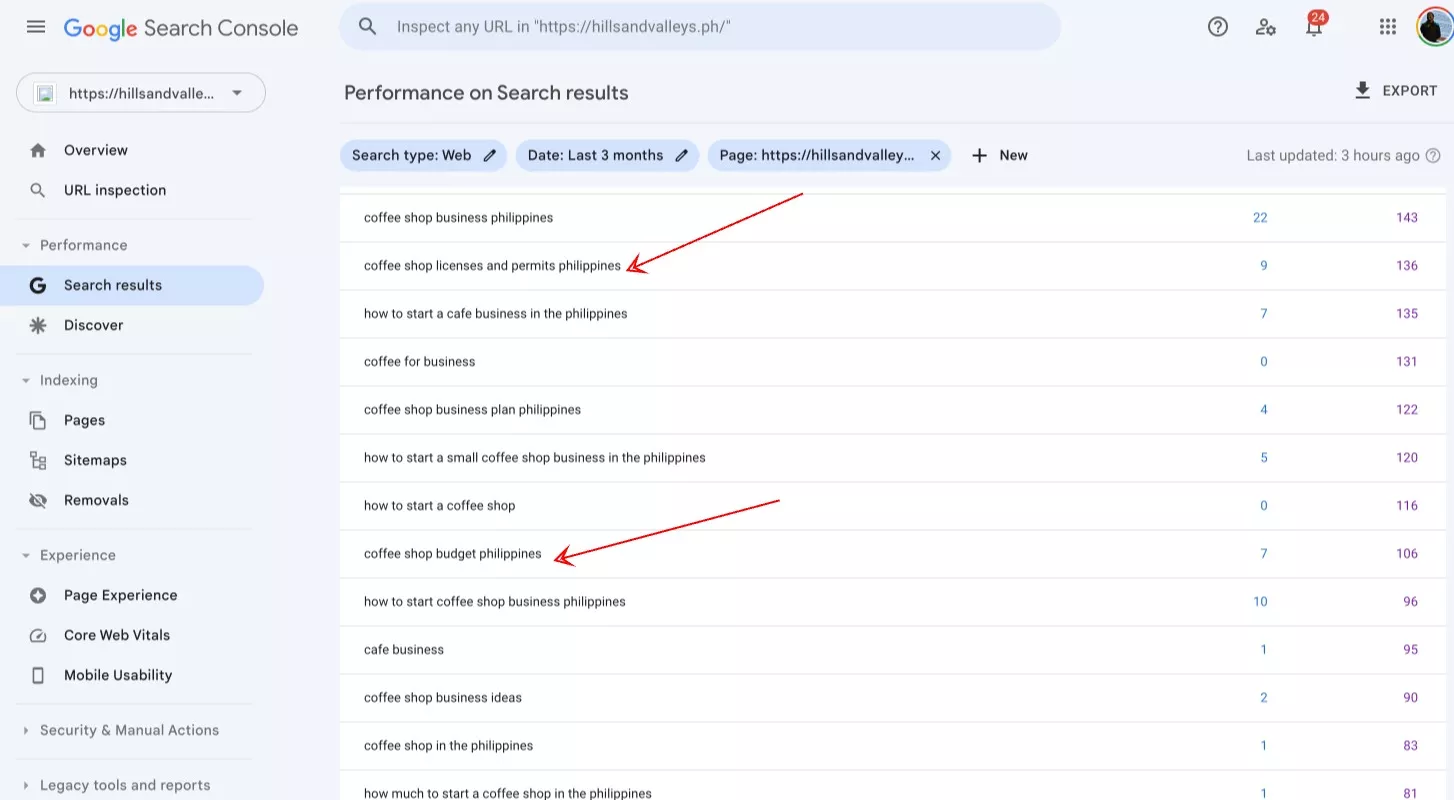
Here, I’ll spot niche topics that:
- I haven’t covered much in my content (I don’t have a section for it or a solid discussion about the topic).
- Broader and would require new content to provide more comprehensive information.
- Useful to add to my topic cluster.
Using Ahrefs’ Organic Keywords
Plug in one of your top pages on Site Explorer (if you don’t think of any, go to Top Pages, and there you’ll find your best-ranking pages).
Organic Search - Organic Keywords - Filter (11 to 100).
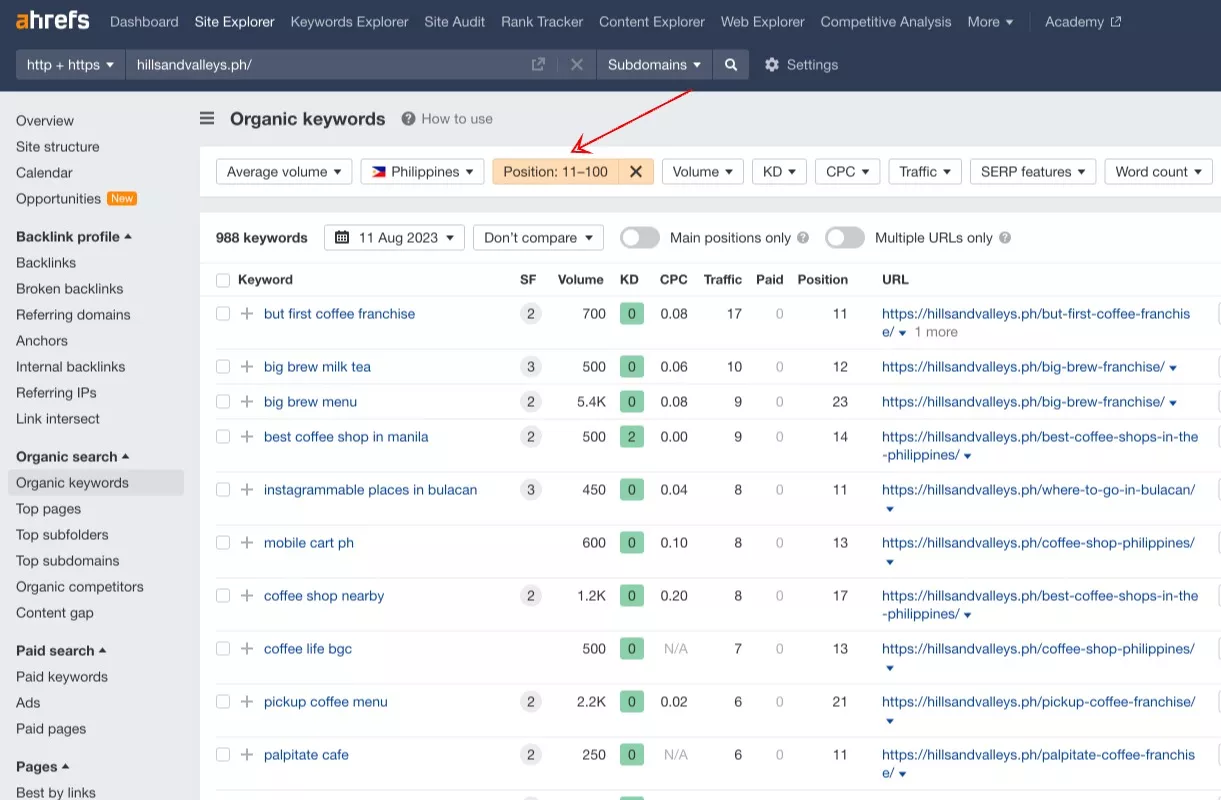
If you can’t move up the rankings from position 11 to page 1, there might be a search intent mismatch, so you must create new content about the topic (more on this below).
How to Choose A Keyword To Write About
After you’ve collected a list of niche keywords, there are things to consider to assess if a niche keyword is worth the time to create content (and optimize pages for).
This isn’t an exhaustive list, but my fundamental metrics/criteria when choosing a keyword to write about.
1. Search Volume
You need to know that people are searching for it.
- This means that it must fit at least one or two of these criteria:
- 100 or more monthly searches according to a keyword research tool (e.g., Ahrefs).
- Visible in Google autocomplete
- Appears in People Also Ask (you can use SearchResponse.io for free).
- Has a good number of impressions, according to Google Search Console (it only works if you have a similar article).
- Your personal experience or expertise tells you people are searching for it.
The last one is quite underrated. If you have enough expertise, you know emerging topics and specific subjects that people are currently or have been searching for.
One keyword does not equal one page. You can rank one article for 100s of keywords.
2. Competition
See if you can compete with the top-ranking pages for the keyword.
Here, people usually start with metrics like keyword difficulty (KD). At most, filter keywords with DR 30 or less, assuming you’ve got a new or lower authority domain to compete with.
Keyword difficulty doesn’t tell the entire story. You can choose a keyword with KD25, but ranking on the first page is challenging.
Instead, you manually type the keywords on Google and check the search engine results pages (SERPs).
- Here, I look for at least one or two of these in the top 5 or 10 spots:
- Websites with a DR lower than mine
- Forums or community-based sites (e.g., Quora
- Articles not updated in the past 3 years
- Low-quality AI scraped or spun sites
- Pages with thin content or very short articles (e.g., 500 words)
I recommend going after keywords if a ranking page with DR is lower than your site.
In theory, the lower the DR on top-ranking pages, the easier it is for you to compete with higher DR.
If every website on page one has a DR 80 or higher, that would be a red flag unless you’ve got DR 70 or higher to break through.
You can use Ahrefs to filter keywords with lower DR sites quickly.
Ahrefs Keyword Explorer - Filter - DR 30
3. Relevance
If a keyword is irrelevant to your site, don’t bother with it.
If you’re blogging about espresso machines and see a keyword about milk teas, don’t try to target it unless you want to expand on covering those topics.
Google ranks websites, not only pages.
The more comprehensive you blog about keywords within topic clusters, the more quickly you can gain topical authority, which makes it easy to rank for more niche keywords.
If you have set up a topical map, you can check it and see if a keyword you saw is included in it. I’ll discuss more about topical maps in my next blog posts.
But relevance is of top priority. Ignore it if it doesn’t have high relevance to your niche site.
4. Search Intent
You could have written 3,000 words on a topic yet couldn’t rank for the keyword because of an intent mismatch.
Search intent mismatches happen when the content you’re trying to rank doesn’t satisfy the search intent of the keyword.
There are four main types of search intent:
- Informational (e.g., “how long do espresso machines last?”)
- Navigational (e.g. “Breville login”)
- Transactional (e.g., “buy espresso machines Philippines”)
- Commercial (e.g., “best commercial espresso machines”)
Most niche site owners should be targeting informational and commercial investigations. These informational keywords are usually monetized with ads, although you can suggest affiliate keywords within the article (which serves as a solution to the problem).
Commercial investigational keywords work best with affiliates as you can insert individual product affiliates within the content.
For eCommerce SEO, you must target all four search intent types.
Categorize all your keywords based on their search intent. Then manually check on Google to see what types of pages are ranking for the keyword.
Next, to search intent, you’ve got to see the exact type of content Google favors on SERPs.
For instance, in one of my target keywords, “coffee business permits”, I could rank well on position #5 or #6 but probably won’t make it to top #1 given an intent mismatch.
Either I create new content that solely talks lists down business permits and licenses for coffee shops or have a new section on my coffee business guide.
This is where most of your time should be invested in. Investigate the entire SERPS, see what types of pages get ranked, what kind of information and format they use, and what specific entities you should include in your content.
5. User Satisfaction
Think about how long it will take you to answer a query.
If you’re targeting a “what is” keyword that can be quickly answered in one paragraph, don’t write an entire article about it. You can include it as part of a long-form guide about the parent topic.
One of the best keywords to target is when it is not answerable by short definitions but will require an entire article to explain the topic.
For instance, a keyword like “What is a good espresso machine for business?” would require an experienced and expert writer to showcase the best products with features to help aspiring coffee shop owners choose the best machines.
Bounce rate has nothing to do with the long a visitor stays on your website or how long they are engaged with your content before clicking back to the search results.
They could have been fully satisfied with your content - and it is the last click for the keyword. Your content has higher engagement signals than others, as it fully satisfies users’ search intent.
6. Audience Location
If you have an affiliate niche site, consider targeting a US audience, particularly if you monetize with ads. For affiliates, it can be best to target your own country to get products shipped for you for testing more quickly.
If you have an eCom website or a B2B site, you know your target audience, and best to include it when filtering your keywords on keyword research tools like Ahrefs.
Investigate Before Writing
The first half of the battle is won if you investigate a keyword before deciding whether to write about a keyword o not.
Being sure you can rank for a keyword with your content (quickly) helps you get some quick SEO wins early on for your website.
Niche Keywords for SEO FAQs
What is a good keyword niche score?
A good keyword niche score has many variables that come into play. There is no absolute niche score to see if a keyword is a good target for your content. Instead of relying on one niche score, check keyword difficulty, asses the top ranking pages, see if it’s part of your topic cluster, and look at the search volume - all these, you assess if a keyword is worth targeting.
How do I find searchable keywords?
To find searchable keywords, you can apply any of the following tips:
- Input seed keywords into Ahrefs or SEMRush and collect a list of matching and relevant keywords.
- See Google Autocomplete and related keywords below search engine results pages (SERPs). Tip: Don’t hit enter button.
- Find emerging keywords using Exploding Topics. See if there are any relevant topics in your space.
Why are niche keywords important?
Niche keywords are important because these are topics to target with your content. When creating new content for a blog, it is best to have a target keyword to optimize for. Include the niche keyword in the URL slug, meta title, meta description, and H1 and H2 tags, and sprinkle it across your content. I don’t care about keyword density.
How do I choose good keywords?
To choose suitable keywords, consider the following:
- Search volume
- Keyword difficulty (and manually checking lower authority domains for your target keyword)
- Relevance
- Audience location
- Search intent
- User satisfaction (types and formats of ranking pages)
It’s subjective in every industry and context, so consider choosing good keywords manually.
What keywords are trending?
The trending keywords are different for every industry and business. An excellent tool to help you out is Exploding Topics by Brian Dean. They have a free newsletter where you can see emerging topics every week.
How to Get My Business on Top of Google Search
One of the best ways to acquire new customers is to get your business on top of Google search.
By hitting the top search spot for specific commercial and informational keywords, you bring visitors who would potentially convert into customers of your brand. You also help your site be perceived as a trusted solution for products or services.
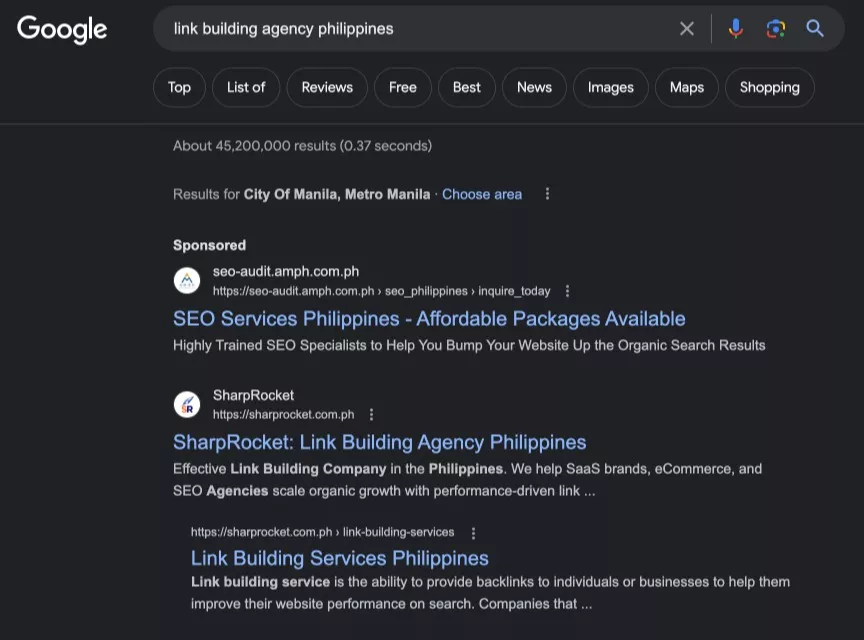
Here are some initial steps you can take to optimize your website for online rankings. Either you do it yourself or hire an SEO agency to do it for you.
How to Get My Business on Top of Google Search
Create Landing Pages For Target Keywords
The absence of a target keyword on a webpage is why some websites can’t rank for competitive search terms.
Having a target keyword on a specific page allows Google to understand the topic of your webpage and tells them how relevant it is to a target search query.
Let’s say you want to rank for “espresso machines in the Philippines”. You need to target the keyword “espresso machines Philippines” on your webpage.
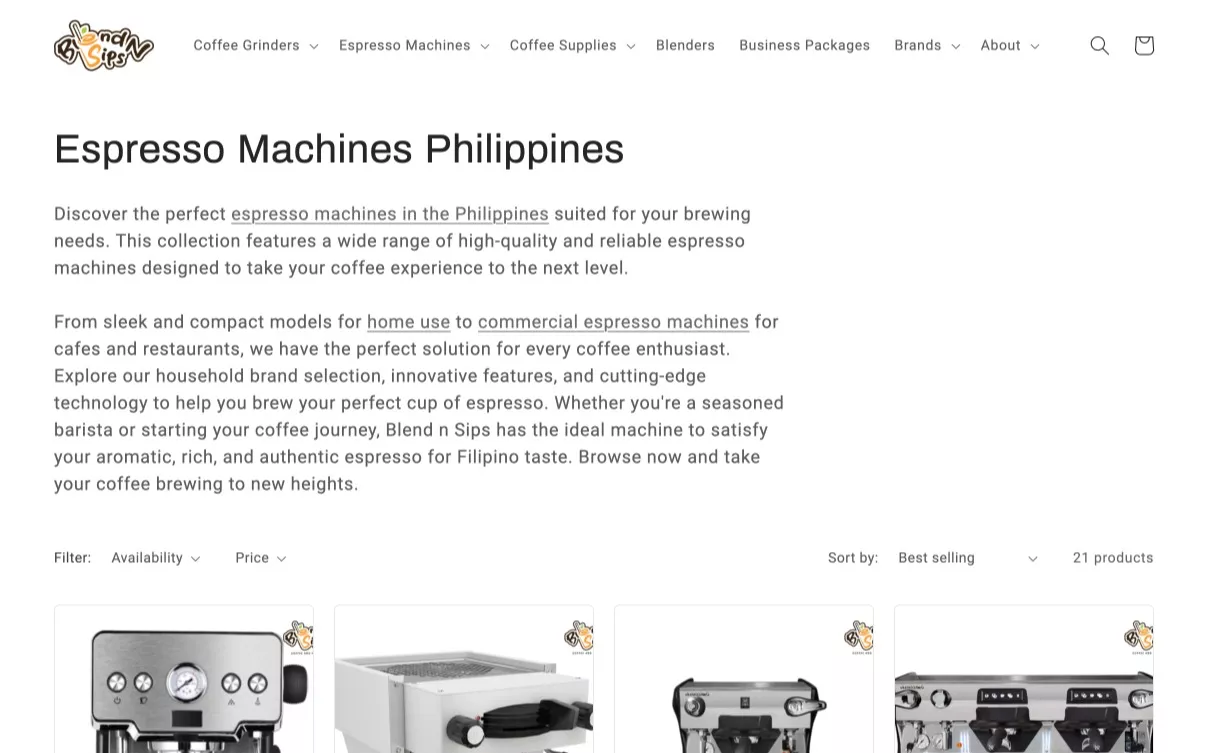
Choose one keyword for each dedicated landing page.
For instance, if you have 10 product categories, you select 10 keywords dedicated to each category. The same is true with service-type businesses. Pick one keyword suitable for your service page.
So list all services or products you want to appear on your website. And conduct a keyword research process to identify the keywords you want to target for each webpage.
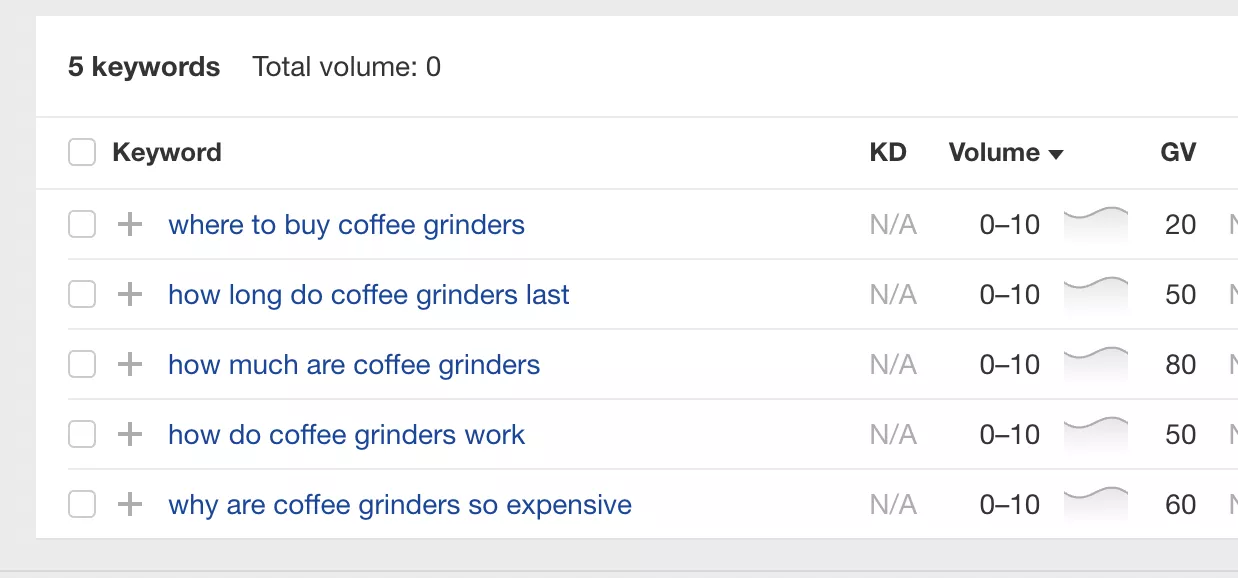
At most, you want to have dedicated pages for the homepage, product page, product category page, service page, opt-in page, about page, etc.
Make Rich Content For the Bottom of the Funnel Pages
The bottom of the funnel pages are your bread and butter pages, mainly product, product categories, or service pages. These assets bring constant money to your business (“money pages”).
With my eCommerce consulting experience, I’ve seen eCommerce sites wanting to rank for their commercial keywords yet having thin content on their product categories, even worse, duplicate product details from their manufacturers’ copy.
I recommend adding at least 500 words to your product categories.
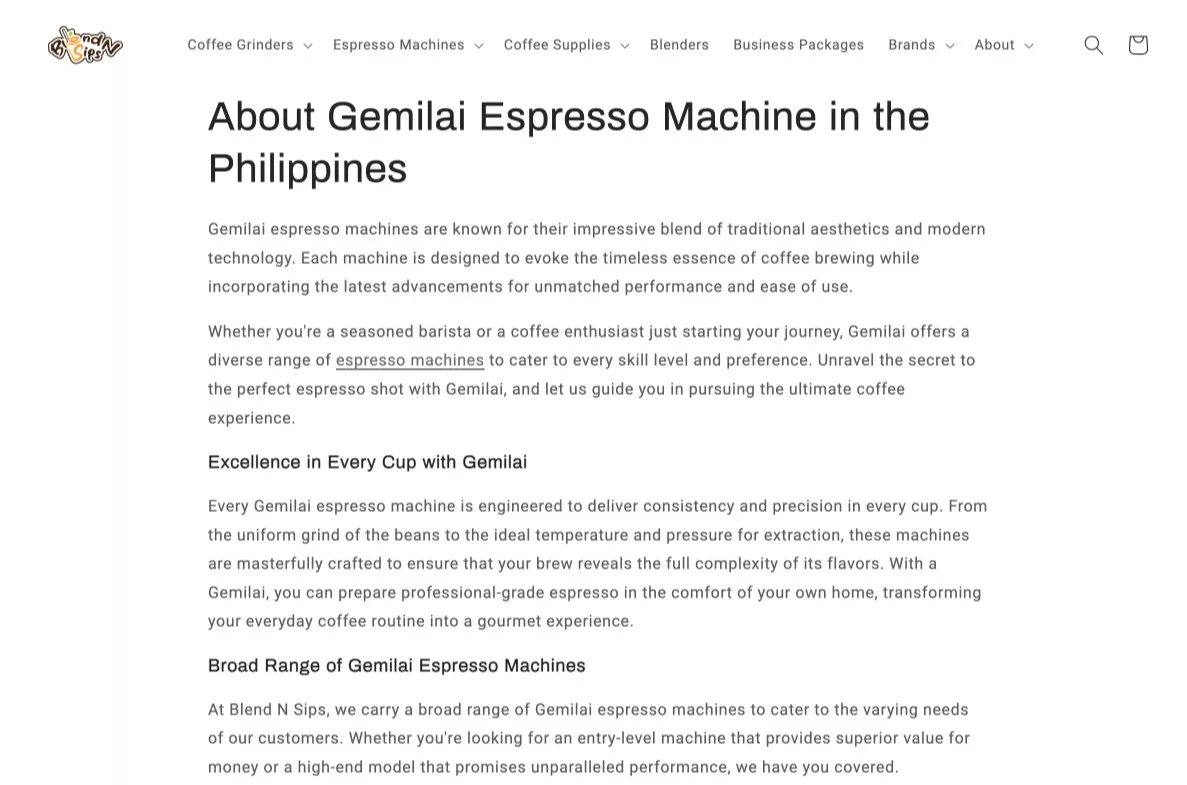
You can address your target customers' objections to purchasing products to increase engagement and conversions.
It could be sections about the following:
- Benefits of your product category (collection page).
- Unique value position (UVP) of your brand against its competitors
- A quick history of your product
- FAQs (Frequently Asked Questions) when purchasing a product type
All this rich content could provide context and more relevant signals to your site’s content theme.
You get an advantage over competitors with thin or duplicate product/product category pages by writing rich content for product pages.
Optimize Pages for Low Time to Value
Time to value is a concept coined by Ross Hudgens that refers to how fast a visitor gets value from specific content.
A longer time on a page doesn’t tell the entire story. Most low visitor time on page means that a searcher has satisfied with the information he has seen on the webpage.
This means that the search user doesn’t have to stay for 10 minutes if he can get the correct information from your webpage and be satisfied with it in seconds.
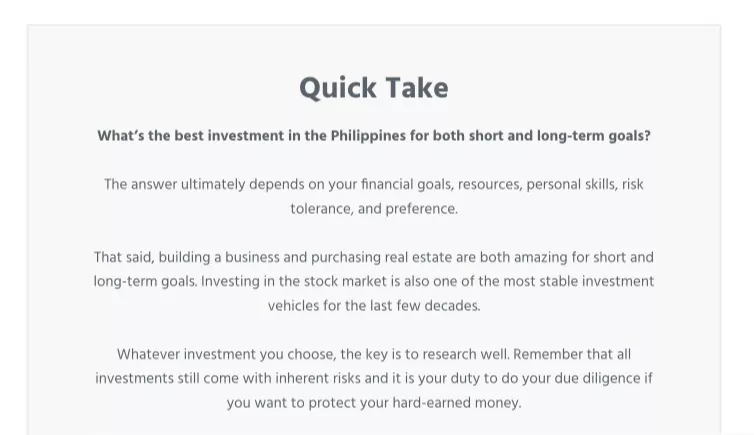
How to optimize pages for lower time to value:
- Place important information on top of your content. Make it easy for users to consume it without scrolling down until the bottom of the page.
- Add tools, visuals, and other interactive content types to increase user engagement and make your content easy to understand.
- Add TL;DR placed on top of blog posts to provide a quick summary of your post.
You aim to make your content the last click. Since you satisfy a user query, they’re less likely to return to Google search results for another result. Being the “last click” can be a good sign of satisfying content.
Publish Blog Content To Build Topical Authority
Not all blog content can best serve your website. You need the correct type of informational content that helps build the topical authority your site needs to rank quickly for its target keywords.
It starts with finding the informational content that can push visitors down to your business's sales funnel.
For instance, if you’re selling “coffee grinders”, think of the keywords your customers are searching for when they are interested in buying or are simply looking for information related to “coffee grinders.”
As an example, here are some informational topics you can target for “coffee grinders”:
- How long do coffee grinders last
- How much are coffee grinders
- How do coffee grinders work
- Why are coffee grinders work so expensive
One SEO misconception today is that lower search volume won’t help drive search traffic to your website.
It may be valid from individual pages targeting the search query. But in the grand scheme of your domain, you’re enhancing the topical authority of your website, giving signals to Google of the quality of content, expertise, and experience of your website.
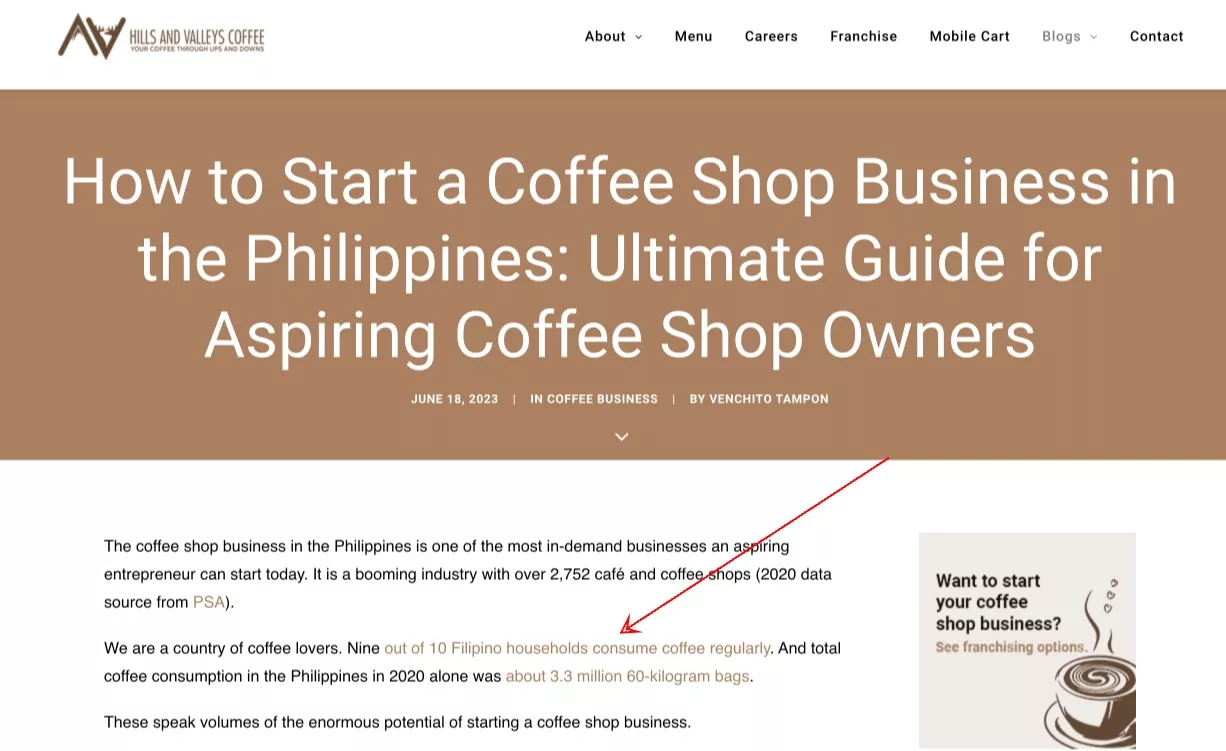 '
'
Doing so helps you quickly rank even better for other related keywords.
Target one topic cluster at a time, preferably the ones your business would want to be on top of Google search.
In my given example, I would first create a topic cluster for all keywords related to coffee grinders. Then, publish all relevant informational content on “coffee grinders.”
Then, once I’ve finished shelling out “coffee grinders” content, I can move to other topical clusters, such as “espresso machines.”
You want your business to be seen as a topical authority in a niche. And even with a low authority site, you could drive organic traffic and online revenue to your website by building a robust topical authority.
You can check out this guide on the importance of topical authority and semantic SEO.
Hire Human Expert Writers
In the age of AI-driven content, you could publish 50 to 100 articles monthly using tools like ChatGPT, Frase, and other AI tools to help you scale content marketing for your blog.
While that’s an advantage to lower operational costs and increase efficiency.
In industries where Google strictly assesses the quality of content, in the case of Your Money, Your Life content, you’re more likely to get higher returns if you hire human expert writers.
Human expert writers, especially the creative ones, can use their expertise and experience to craft more rankable content than AI content.
The recent experiment from Reboot Online clearly showed that AI-generated content ranked less strongly (on average) than human-generated content.
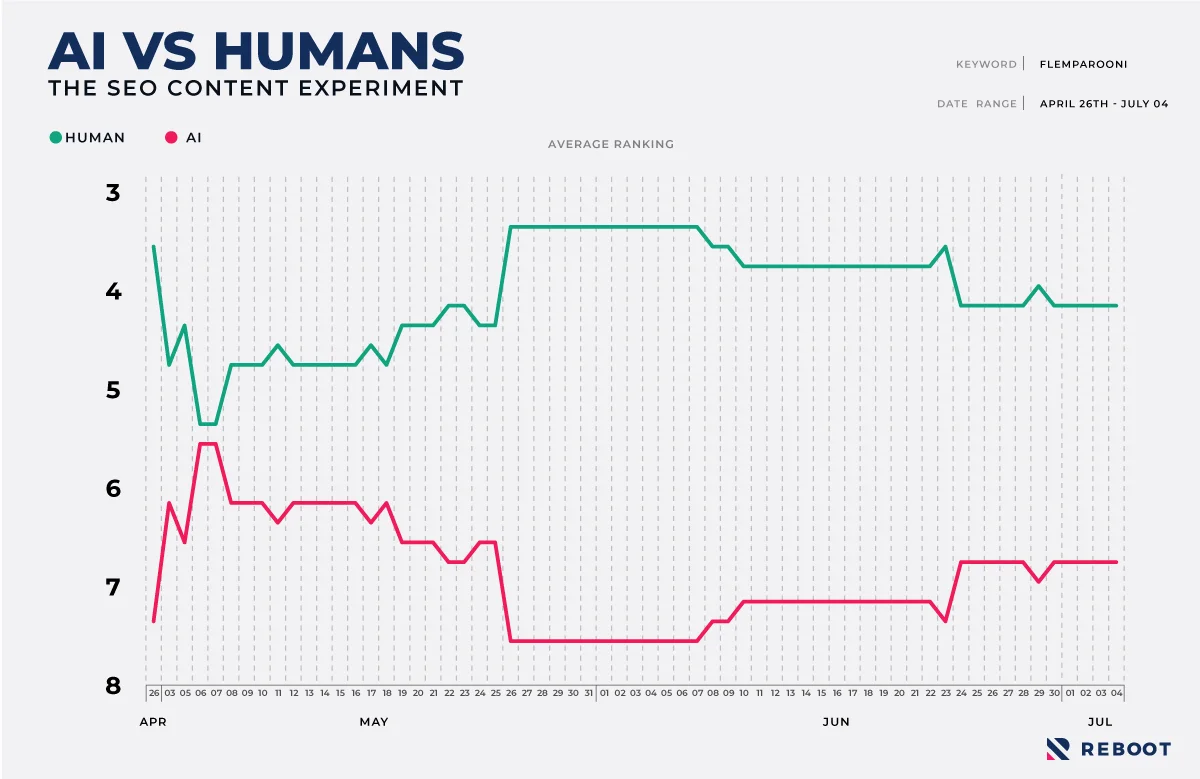
It may only apply to some industries, but with niches where high specialization is required, you should hire human expert writers for your blog search engine optimization needs.
Here are more tips when creating content with human expert writers:
- Bring your writer’s experience into the content. With E-E-A-T, you could get higher organic visibility by pushing out content with the author's unique experiences, making it different from all other high-ranking pages.
- Search for active authors in your space, and incentivize them to write for your blog. Either hire them, give premium access to a product, online store vouchers, or any incentivization methods to get them to contribute content for your blog.
- Through these authors’ reputations in the industry, you can leverage these entities’ associations with your site, making your brand more recognizable.
- Invest in hiring specialized experts that are also good writers. It would be much easier for content to fly its performance when the quality of information is solid and comprehensive enough than content written by general SEO writers.
Hiring human expert writers provides better opportunities for quality content and building your brand as a thought leader and subject matter expert in your niche.
Effective On-Page SEO
While the quality of content helps in driving user engagement, you can’t ignore the best on-page SEO practices to put into play. If you want to climb Google’s rankings, you need to ensure you’re putting your keyword in the following fields:
- Title tags
- Meta description
- Body text (i.e., opening sentence)
- H1, H2 text
- Image alt text
Here are some on-page guides to help you get started:
Manage Technical Health
Technical SEO is laying the groundwork to build the foundation for your SEO success. Without it, there will be limitations to skyrocketing your site’s organic traffic in Google’s search engine results pages (SERPs).
Taking care of it as you start your website or as part of your preliminary SEO process is a game-changer. This includes having the proper technical knowledge of crawlability and performance security.
Here are some guides to give you a more breadth discussion on technical SEO:
Build The Right Type of Backlinks
Backlinks are still king. If you’ve done an excellent job with your technical SEO, on-page SEO, and content, you need backlinks to climb Google’s SERPs.
Link building helps improve the crawlability of your site. It adds more semantic SEO signals to your website through external web assets (i.e., guest posts, profile pages, and brand mentions, which not only help you get the desired rankings but increases your brand awareness.
Contextual links are the correct type of links to pursue, as it allows you to choose specific anchor texts that will give weight to the value of the link you acquire from the website.
As a business owner, you can pursue many link opportunities using the link building strategies that fit your website, industry, size, and resources.
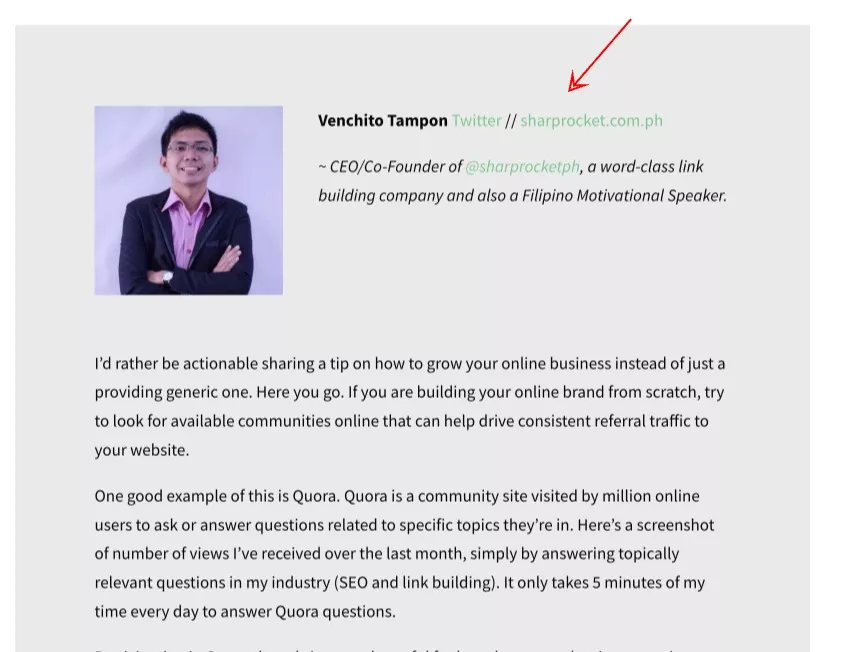
Here are some actionable guides from years of experience to give you a headstart in building the correct type of backlinks:
Aim For Freshness of Content
Publishing new content and updating the old ones to satisfy better search users is highly correlated with Google rankings.
That said, you can’t neglect the power of SEO blog writing to publish newly fresh content on your website. It helps in faster crawlability and can also assist you in getting passive links via ranking for informational keywords.
If your website constantly publishes new quality content for a particular topic cluster, you’re building your site’s topical authority on that niche content theme. And thus, it gives you more relevant signals to rank quickly for any keyword within the topic cluster.
On top of new content, you must also update your existing content. You’ve done work writing those content assets, and it only takes a few more hours to update and get ranking rewards from this initiative.
How to aim for content freshness:
- Create a content calendar to publish relevant content for your blog consistently. By having a systematized process, you can produce constant quality output from your pool of writers.
- Hire and train good writers. Through in-house training, you develop the quality and discipline of your writers, making it easier to foresee regular updates to your blog.
- For old existing content, check the freshness distance of each ranking page for your target keyword. See how many months or weeks ranking websites update their pages. If it is three months, six months, or a year, then you must account for it when you make your content fresh.
Don’t Ignore Long Tail Keywords
As a business owner or SEO client, thinking only for your primary head terms is usually one or two words (i.e., coffee machines). That’s your top traffic and potential revenue generator, as they typically have a high search volume.
However, don’t ignore targeting long-tail keywords with your pages. Especially if you’re starting to do SEO for your website, you won’t have much site authority to compete for competitive head terms where ranking websites have a DR50 and above.
That said, you can quickly get search traffic simply by ranking for long-tail keywords that most industry giants would ignore.
You can use Ahrefs to find these long tail keywords, or with Google Autocomplete and Suggestion Box at the bottom of Google’s SERPs, you’re likely to see different variations of industry terms and long tail keywords you can rank with content.

Use Authority Sites To Rank For Competitive Keywords
While you can’t easily rank for competitive head terms with a new domain, you can quickly use other authority sites to rank for competitive industry terms.
Take a look at this screenshot from Charles Floate. These pages rank for YMYL content, such as pharma, which would take hundreds of links to get to the same spot.
All these ranking pages are published and sponsored by brands to get the rewards of constant referral traffic back to their site.
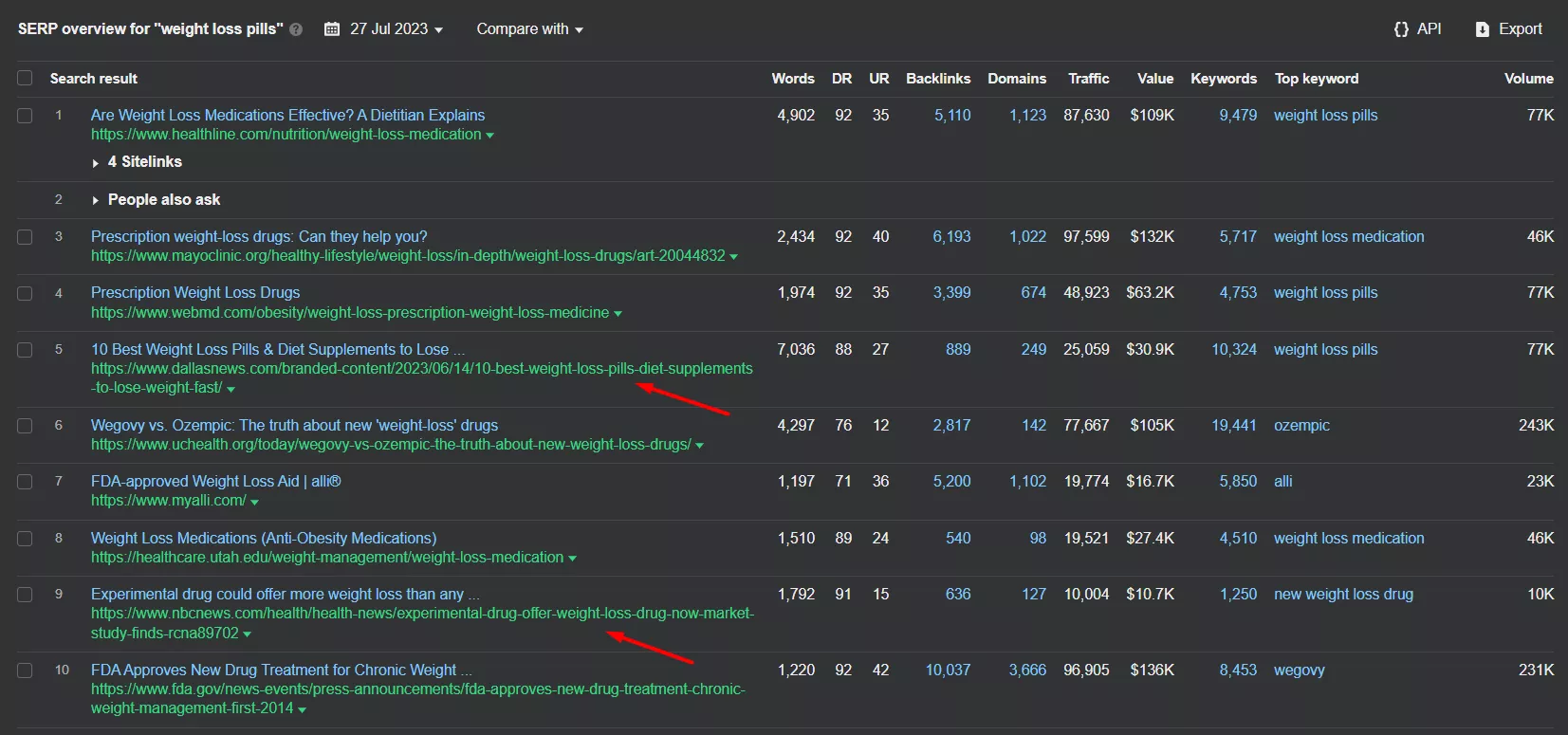
How to use authority sites for link building:
- Find industry sites trusted by Google where you can craft and publish content and quickly rank for your target keyword. Use the keyword as a URL slug in your “guest post” (i.e., best espresso machines).
- Link out to these authority sites before doing outreach. You’ll succeed more in getting content partnerships when you’ve featured them first on your website.
- Build more contextual links to your site’s other external content (guest post) from another guest post (tiered link building) to boost all external pages’ linking power, which can immensely help your domain’s online rankings.
Associate your brand with authoritative entities, as it could benefit you in many ways, especially in the age of E-E-A-T, where trust and authority sites linking to you can have a powerful impact on your site’s branding and rankings.
Dominate Local Map Packs
If your business is targeting customers within a city, region, or small country, local SEO is an integral part of your search engine optimization campaign.
You would see that a huge prime real estate for local SEO comprises local map packs with the highest clicks.
You can rank for organic search engine results pages, but with local map packs appearing on top of it, optimize your brand for local map packs and acquire more brand exposure.
Here are actionable tips to dominate local map packs:
- Create and optimize your Google Business. Ensure you have a complete profile, actual reviews of customers, and accurate business information. See this guide to optimize Google Business Profiles.
- Place NAP (Name, Address, Phone Number) across all your important pages on your website.
- Get local citations. Start from this list of best citations.
- Localize your website content by optimizing for local-centric keywords (coffee shop in New York).
- Get links from websites representing the same target local area.
- Place QR codes on your stores, incentivize customers to get reviews for your Google Business Profiles.
Acquire online real estate by being visible on organic search engine results pages (SERPs) and local map packs. Vying for both places increases organic visibility for your business.
Get Your Business On Top of Google Search
The best practices in ranking your website on top of Google searches differ from industry to industry, so better have a good context of your brand, content, and resources.
By following the actionable tips above this article, you can expect a gradual growth of progress for your site’s organic traffic and online revenue.
If you want to get your business on top of Google search, our SEO and link building services can help you.

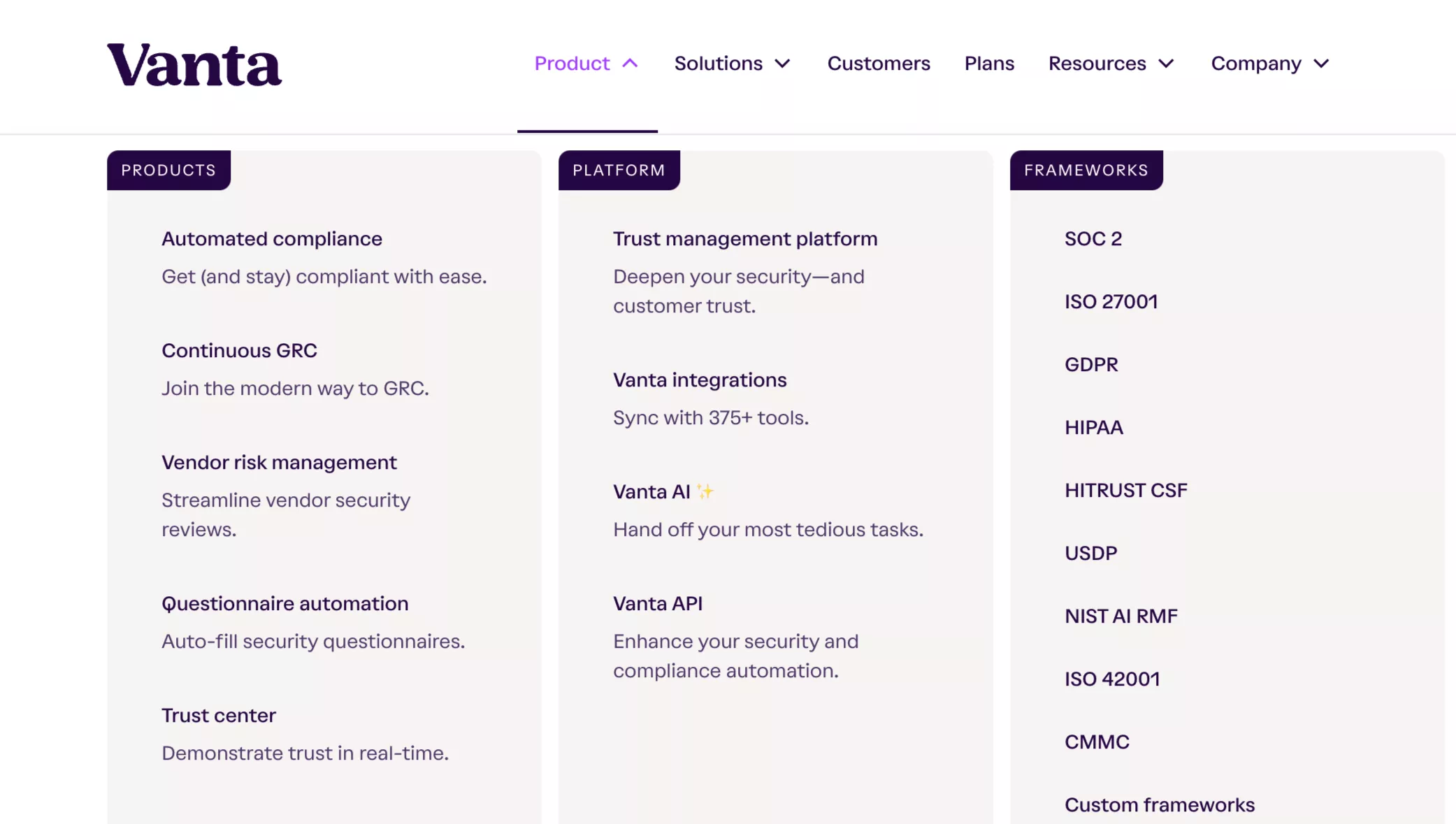

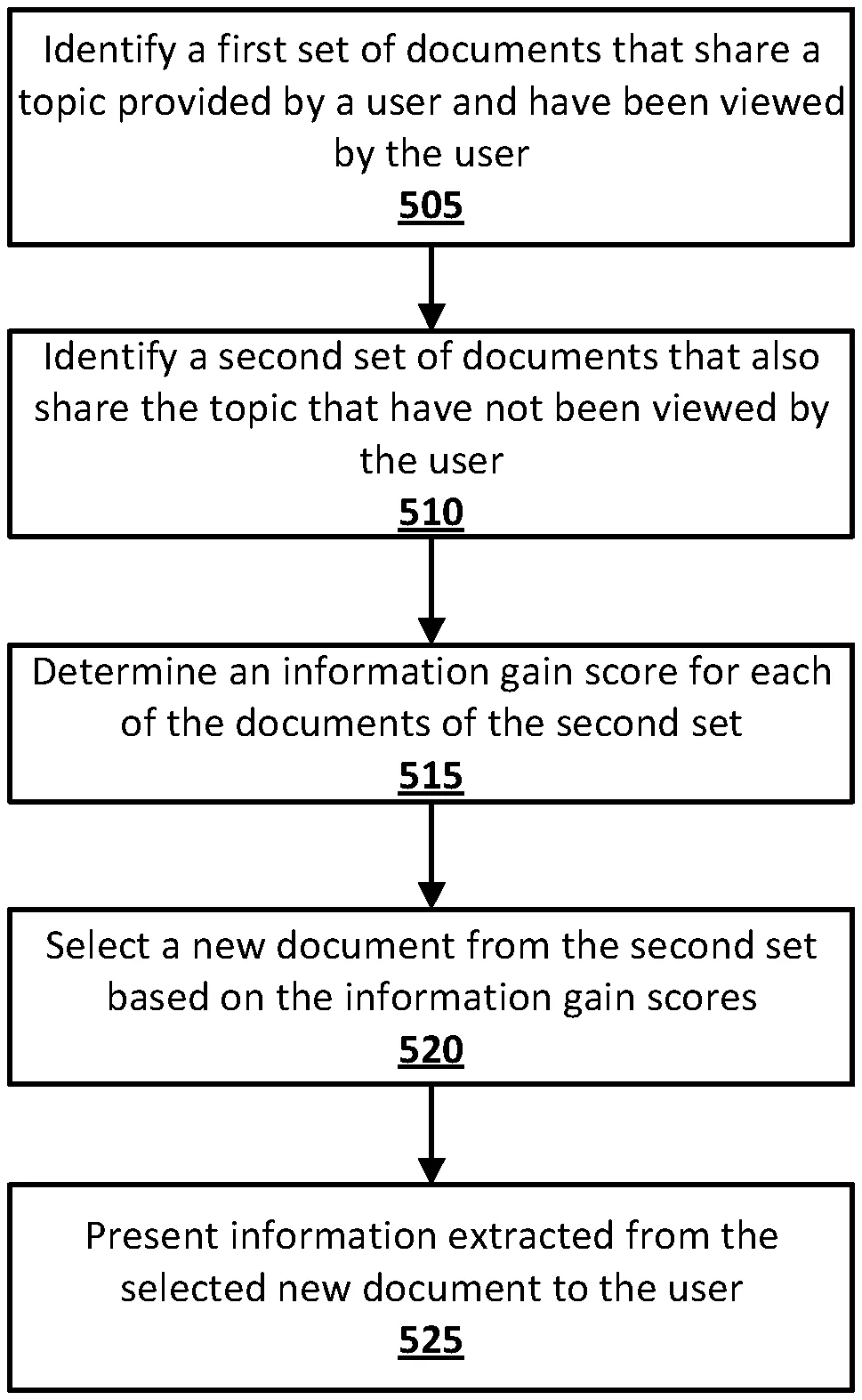
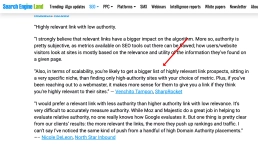
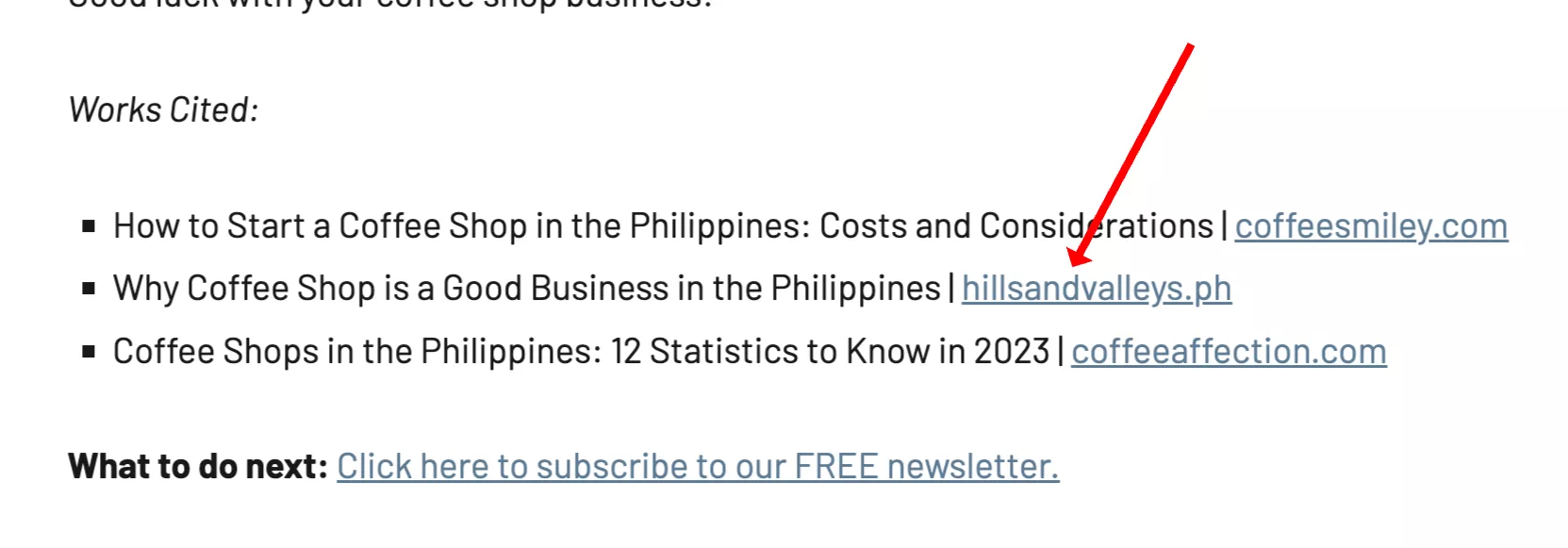 7. Innovation For Next Brand Offerings
7. Innovation For Next Brand Offerings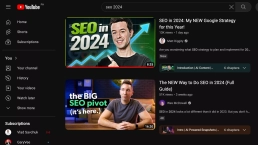
 First-Person Guest Posts
First-Person Guest Posts 